WHICH PLAYERS COULD MAKE AN IMPACT IN 2025?
DONALD TRUMP and His Relationship with Golf
COULD TGL REDEFINE THE FUTURE OF GOLF?
HIDDEN GEMS
Discover New Golf Hotspots
























10






WHICH PLAYERS COULD MAKE AN IMPACT IN 2025?
DONALD TRUMP and His Relationship with Golf
COULD TGL REDEFINE THE FUTURE OF GOLF?
Discover New Golf Hotspots
























10










Many believe that Xander Schauffele could outshine Scottie Scheffler in 2025.



Cover Story: Golfers to Watch in 2025 by JIM MCCABE
As we enter the new year and the new golf calendar, who are the names we should be keeping a special eye out for?
THE ESSENTIAL GOLF AWARDS
Picked out by our writers
Male Golfer of the Year, 2024 by DAVID BARRETT
Female Golfer of the Year, 2024 by LISA D. MICKEY
Rookie of the Year, 2024 by JIM MCCABE
Upset of the Year, 2024 by RON GREEN JR
Shot of the Year, 2024 by CHARLES FORD
Funniest Moment of the Year, 2024 by MICHAEL LORÉ
Donald Trump’s Undying Love for Golf
Donald Trump has a deep connection to golf, owning a global portfolio of courses under his brand. We take a closer look at this unique relationship 10 15 26


2025 FedExCup Preview by
DAVID BARRETT
With the new FedExCup season underway, we take a closer look at the schedule and the players poised to make an impact in 2025
7 Reasons Why TGL Could Be Golf’s Next Big Thing
As TGL tees o , we take a look at the brand new formatted golf league and why it could be the next big thing
Player Profile: Sam Burns
In recent years, Sam Burns has risen up the rankings emerging as a top PGA TOUR player. We take a closer look at his steady rise
The Science Behind a Hole-in-One: Probability, Luck, or Skill?
What’s the secret to achieving a hole-in-one in golf? Is it purely a matter of probability, a stroke of luck, or a display of skill?
The Biggest Comebacks in Golf History
It’s never over until it’s over. Golfers know this better than most people because tables can turn within moments in a round of golf, especially in the nal round
Lowest Rounds Ever in Professional Golf
The ultimate score in golf is 59. Has anyone, though, ever come close in a major? These golf outings rank lowest in signi cant historical events
Golf Handicaps: How Good Are Your Favorite Celebrities and Athletes?
Discover the golf handicaps of your favorite celebrities and athletes, and see how they compare on the course
Golf’s Impact on Local Communities by MICHAEL LORÉ
Golf is not only enjoyed by millions, but it also represents a signi cant U.S. industry that brings considerable value to local communities
The Betting Game by MICHAEL LORÉ
It was not long ago the PGA TOUR, which once banned sports betting ads, listed 5 betting companies as partners and joined the Coalition for Responsible Sports Betting Advertising in March
Unearthing Some of Golf’s Greatest Traditions
We delve into the sport’s cherished customs and the core values it upholds








Golf is as much of a mental game as it is physical.









Custom fittings can help take your game to the next level.


If you are planning on becoming a master of the greens, choosing the right tness trainer is a key decision you’ll need to make 64 71 66 74 80 84 68 78 82 86 68 80

Golf Superstitions Explained: From Lucky Charms to Rituals
Explore various golf superstitions, including famous players’ rituals and common practices among enthusiasts
Unique Golf Formats You Should Try Out
There are numerous ways to play instead of the standard match play or 18-hole round. We list some of the more unique formats you can try out
The Mental Side of Golf
Mastering the mental game is arguably just as important as perfecting your swing
How to Become a PGA Professional
Becoming a PGA professional takes dedication and hard work, but earning membership can unlock a wide range of opportunities within the golf industry
Refine Your Game
Elevate your game with expert advice from PGA professionals MICHAEL JACOBS & ERIKA LARKIN
How to Pick the Right Golf Ball for You
Discover how to pick the best golf ball for your game, based on your own skill level and all the key factors that matter the most
Golf Club Fitting: Insight and Advice by MICHAEL LORÉ
Getting your golf club tted can be a game changer for golfers of all levels. But why is it so important?
Crucial Signs it’s Time to Move Golf Club
Recognizing when it’s time to transition to a new golf club is essential for growing as a golfer and continuing to enjoy the game
Golf Nutrition
Nutrition is essential for peak performance. Learn how to nourish your body to enhance stamina, focus, and overall game
How to Choose a Golf Fitness Trainer


The Evolution of Golf Equipment
From precision putters to powerful drivers, technology continues to help transform how the game is approached
Publisher & CEO
Kevin J. Harrington
Editorial
Emmanuel Berhanu Grace Bower
Production & Design Director
Joanna Harrington
Production Ray Walsh
Office Coordinator
Joshua Ssempiira
ESSENTIAL GOLF is published by BH Sports
29 East Madison Street, Suite 809, CHICAGO, IL 60602 Phone: 312 572 7728
143 Caledonian Road, LONDON, N1 0SL Phone: +44 (0)20 7870 9090
Email: golf@bhsports.net www.essential.golf
© BH Sports, 2025. All rights reserved. All material contained within Essential Golf is wholly copyright, and reproduction without the written permission of the Publisher is strictly forbidden. The information in this publication has been carefully researched and produced in good faith, however, neither the Publisher nor the Editor can accept responsibility for any errors.
92 94 105 112 114 118 122 127 128
The Art of Golf Photography
A story can be told in a single perfect shot, whether it be the emotions of a player, the beautiful surroundings or simply the essence of the game
Southern Comfort by CHARLES FORD
Heading south to warmer climates suggests some tempting golf vacation choices. Essential Golf reviews some of the most attractive luxury stay-and-play breaks currently available
Emerging Golf Destinations Around the World
Locations such as Vietnam, Cambodia, and New Zealand are emerging as hotspots for travelling golfers
Golf Travel Essentials: Packing Tips for Your Next Getaway
What are some of the essential items you should pack to ensure you have a successful and enjoyable golf getaway?
Make Memories at Big Cedar Lodge
Discover unforgettable experiences at Big Cedar Lodge, a premier golf retreat
Playing Golf in Different Climates: Challenges and Tips
Different climates also affect your course dress code; we unearth smart hacks to play your best golf in various weather conditions
New Golf Courses Opening in 2025
We take a closer look at some of the exciting new golf courses that are set to open their doors this year
The 19th Hole Celebration
After a game of golf, successful or otherwise, there are fewer better ways to celebrate than with a cool glass of an Edrington Macallan in hand
The Art of the Swing: A Personal Journey by LEE PACE
Mastering your golf swing is a never ending journey to perfection. The constant desire to improve always remains










As we enter the new year and the new golf calendar, who are the names we should be keeping a special eye out for?
By Jim McCabe


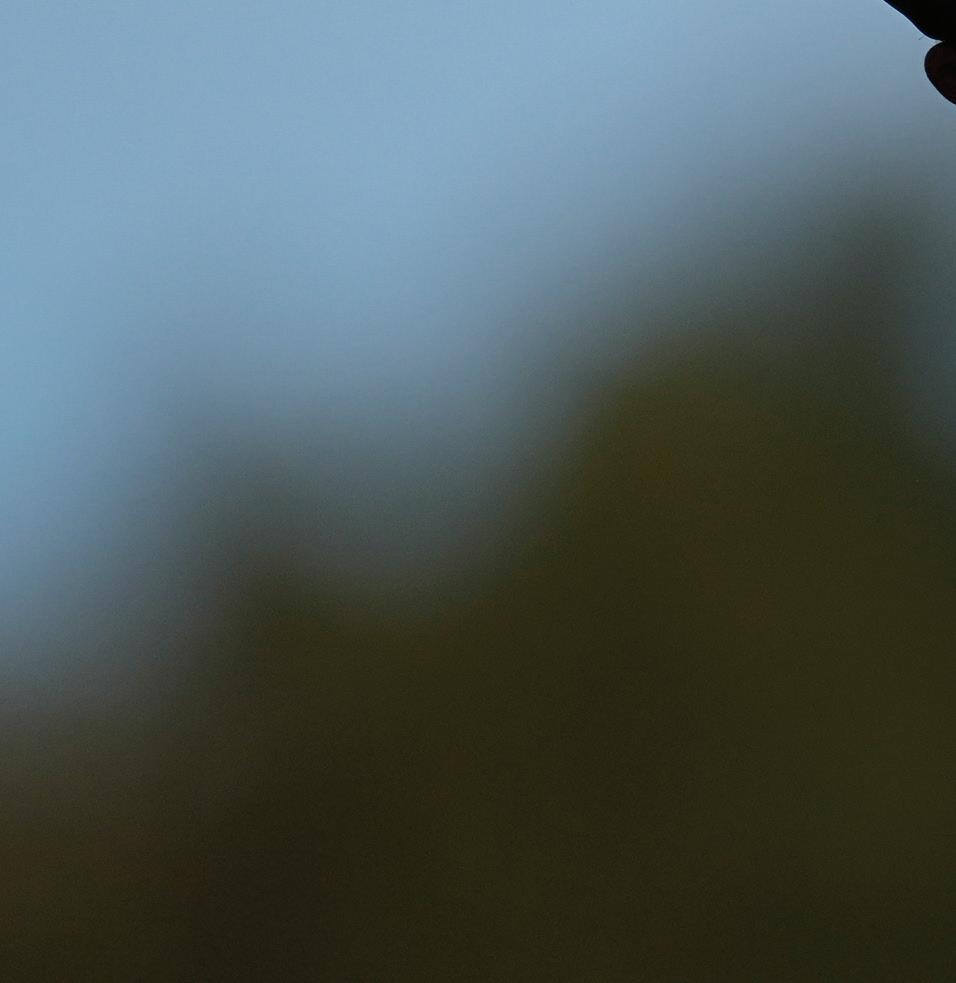






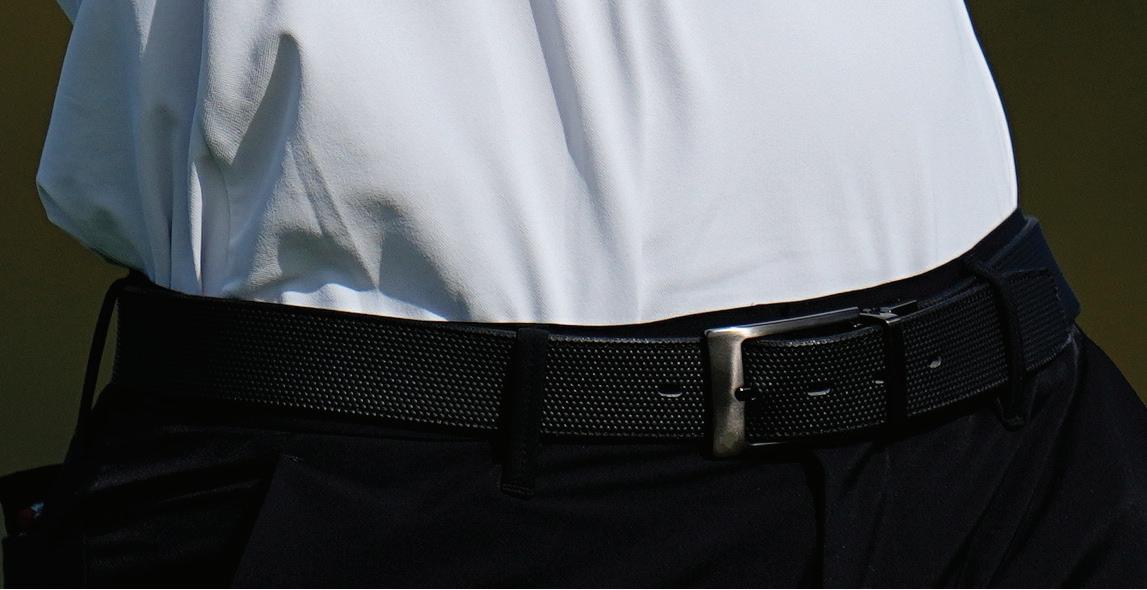


In a fast-falling twilight on a late November Sunday, there was the gentlest of golf putts that created such an emphatic and piercing scream of jubilation.
If you’re thinking that Maverick McNealy’s 5 ½-foot birdie putt on the 72nd hole of the RSM Classic had him and his brother/caddie, Scout ecstatic over their rst PGA TOUR win, you are correct. If you’re thinking they were xated on the end of the 11-month 2024 PGA TOUR season, you are o the mark.
“We’re going to Maui,” shouted Scout McNealy, but Maverick, the 29-year-old who won in his h season and 142nd tournament, reminded his caddie that “We’re going to Augusta, too.”
See, the kids are like the rest of us. The curtain drew down on the 2024 season, but as you do, we’re all exhaling and starting to already piece together the storylines that have us amped for the 2025 season.
The new season began in thrilling fashion with The Sentry at Kapalua on the beautiful Hawaiian island of Maui, where Hideki Matsuyama claimed the rst title. With the excitement already in full swing, we take a look at what could possibly lie ahead.
What most tugs at our anticipatory glands are the Signature Events (eight), the majors (four), and The Players Championship. And for good reason. Given that 12 of those 13 tournaments were won by players who dominate the O cial World Golf Ranking – No. 1 Scottie Sche er (six wins), Xander Schau ele (No. 2, two wins), No. 3 Rory McIlroy (one win), No. 6 Wyndham Clark, Hideki Matsuyama (No. 7, one win), Bryson DeChambeau (No. 10, one win), and a guy who is ranked 44th (Chris Kirk), the jury has returned a verdict.
The stars surely strut their stu for the biggest of the championships and that whets our appetite for the 2025 season in a big way. So even as we can still feel the air from the McNealy st pump, thoughts turn to who stirs our emotions for ’25.
Start with a pair of established stars – Xander Schau ele and Ludvig Aberg – add in an irresistible veteran in desperate need of a reboot (Jordan Spieth), then tickle your fancy with youngsters who might just seize large chunks of attention, Michael Thorbjornsen and Luke Clanton and what you have are ve delectable storylines for the 2025 season.
Here’s what is enticing about Schau ele. Whereas Sche er ripped o a monster seven-win season in ’24 and has won 13 of 67 starts over the last three years, Schau ele is the one guy who could mimic such dominance. The thought that consumes me is if Schau ele wins the Masters – and he’s nished top 10 in seven of his eight starts at Augusta – he’d be 3-2 over Sche er in major championships and be three-quarters of the way to the career Grand Slam.
Scottie Scheffler made his first appearance of the season at
Compelling stu , especially knowing he went eighth, rst, T-7, and rst in the 2024 majors.
As for Aberg, he’s coming o a rookie year in which he had a few hiccups (two missed cuts in the majors), but by and large showed that he deserves his lo y No. 5 slot in the OWGR.
Look for him to turn a few of those eight top-10 nishes into wins next season and to be a showcase face for the Europeans at the Ryder Cup in September.
With Spieth, it isn’t just that he’s gone winless in 44 tournaments since the RBC Heritage in 2022. No, it’s the way in which he’s done it, with more missed cuts (15) than top 10s (14) in that stretch. Choppy and inconsistent are words that describe his game, but if the o season surgery to repair his le wrist pays dividends it will be fascinating to watch the 32-year-old-in-July bid to
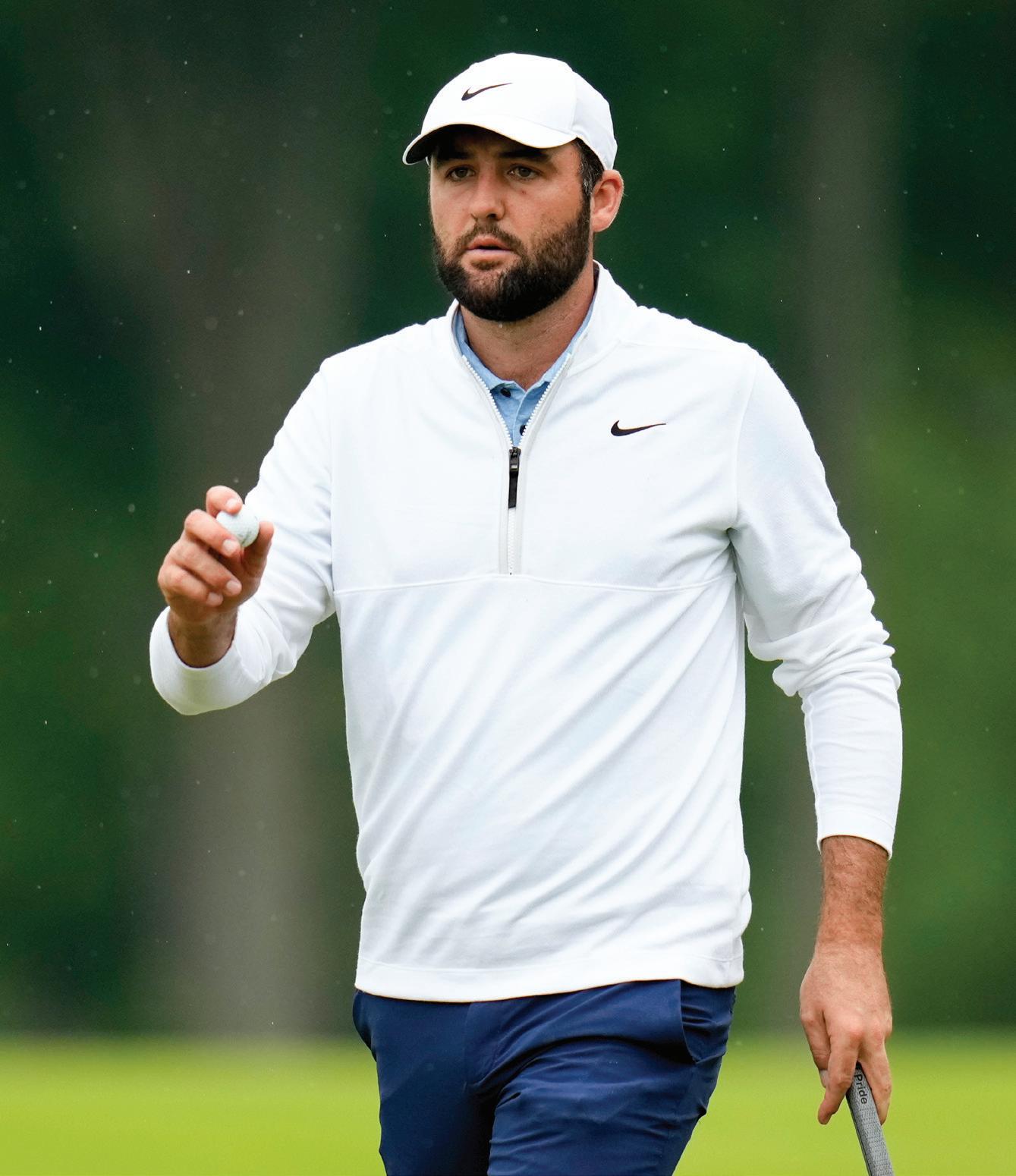

Jordan Spieth went the 2024 season winless and finished 80th in the FedExCup standings.
Luke Clanton is one of the most tantalizing prospects in the sport.

push his world ranking upward from the currently ghastly 62nd.
Being young is a beautiful thing in pro golf, given that it’s been proven dozens of times over that these kids are polished and fearless. Thorbjornsen is looking to become the second straight PGA TOUR University champion to make an immediate impact in his rookie year. (Aberg was the 2022-23 winner.)
So far, so eye-opening as the former Stanford star was second at last summer’s John Deere Classic and has three top 10s in just 11 tournaments.
Clanton, meanwhile, is doing kid stu that is utterly wild, given that he’s still a 21-year-old amateur who doesn’t appear to be in a rush to give up his junior year at Florida State. All he’s done in eight PGA TOUR tournaments is get within a few swings of two victories and in addition to a pair of runner-ups there have been two other top 10s.
For sure, Clanton has our attention and the fact that he hasn’t been eligible for any of the $1.5m that he could have already earned makes it increasingly more compelling to see if he can achieve PGA TOUR University accelerated
finished




status in the few starts, he’s likely to secure early in the 2025 season.
We are miles and miles away from the notion of yesteryear – that PGA TOUR golfers must spend a few years grinding away before they display the re required to win. No, sir. We are smack in the middle of a new era

where kids see no di erence between the AJGA, collegiate tournaments, and the PGA TOUR; they don’t just think they can win; they expect to win.
We are also on the verge of intriguing times in this thankless struggle with LIV Golf. Unlike the PGA TOUR, where elite players still won’t forgive those who bolted, key members of the DP World Tour are quite OK with extending the olive branch.
The magic ingredient, of course, is the Ryder Cup and competitors such as McIlroy and Tommy Fleetwood and Shane Lowry are thrilled to have the chance to add Jon Rahm and Tyrrell Hatton to their roster for the 2025 matches at Bethpage Black.
A year ago it appeared unlikely. But now, with Rahm and Hatton o cially back in good graces to rejoin DP World Tour membership, their spots in the Bethpage lineup are all but guaranteed.
Which is great news because if what happened in 2024 on the PGA TOUR proves anything, it’s that the public cherishes those opportunities to see the cream rise to the top in the biggest tournaments. And this year that very likely will be the story once again. ■


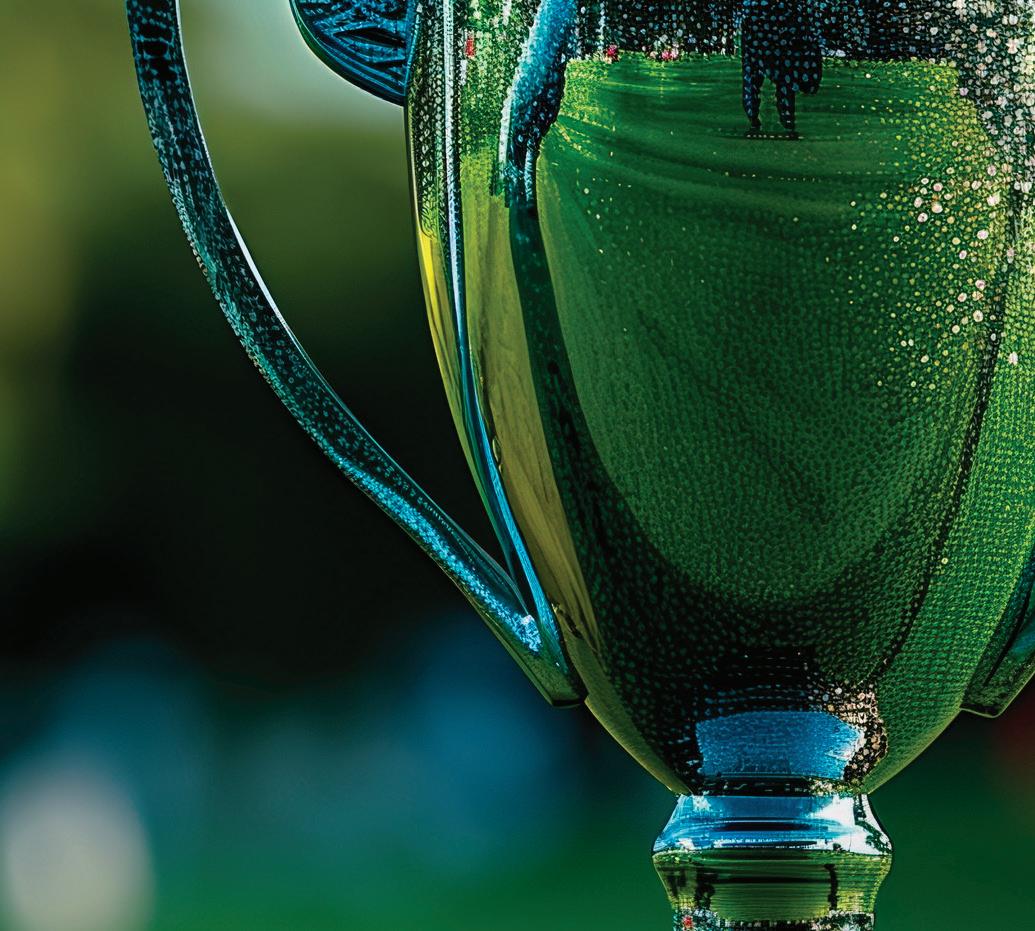



024 has drawn to a close and as 2025 begins, the new golf seasons are already underway, blending exciting changes with the timeless traditions we all know and love. However, it’s essential to re ect on what has been a thrilling and unpredictable year in the world of golf. As a result, we invite you to look back at the eventful year we’ve had by revealing our winners of the 2024 Essential Golf Awards, picked out by our writers. Find out who we’ve crowned the male and female golfers of the year, and which rookie stood out in 2024. We also take a closer look into player performances by crowning our shot of the year and who we believe caused the upset of 2024. We’ve also considered an especially funny moment to remember to give you a good laugh.

Scottie Scheffler awarded with the 2024 FedExCup title alongside PGA TOUR Commissioner Jay Monahan.












By David Barrett
Sche er and Xander Schau ele both put together campaigns that would earn them Golferof-the-Year status in most years. Schau ele won two majors—the PGA and Open Championships—a feat which is rare and impressive enough to generally earn top golfer status for a given year. Sche er, however, put up a wall-to-wall dominating campaign, with seven PGA TOUR victories and an Olympic gold medal for good measure. He won “only” one major, the Masters, but also collected a near major at the Players Championship, won three of the Tour’s Signature Events (Arnold Palmer Invitational, RBC Heritage, and Memorial Tournament), and capped it o with a victory at the Tour Championship to claim the FedExCup. Schau ele, while he performed consistently well throughout the year with 15 top-10s in 23 starts, didn’t add any victories to the two majors.
Sche er came closer to Tiger Woods’ 2000s-style dominance than anyone has since. He nished in the top 10 in 16 of the 19 tournaments he entered and had 11 top-10s in a row from February to June, including a stretch in the spring of four victories in ve starts with a runner-up nish in the other one. Those wins included the Players and the Masters. In the year, Sche er outscored
Schau ele by almost exactly a half-stroke per round, Sche er averaging 68.01 and Schau ele 68.52. Sche er’s scoring average was the lowest ever on the PGA TOUR for a season. His adjusted scoring average, which factors in the average score of the eld, was 68.52 (Schau ele’s was 69.02). That was the sixth best since the beginning of the adjusted average in 1988. The top ve places are held by Woods, with the record 67.79 in both 2000 and 2007. Woods and Sche er now account for the eight best adjusted averages, with Woods in seventh and Sche er’s 2023 eighth.
Sche er’s ball-striking prowess was nearly o the charts in 2024. He ranked rst in strokes gained on approach shots and second in strokes gained o the tee. That put him in rst place in strokes gained tee-togreen, which incorporates both stats, by an eye-opening margin. Sche er gained 2.297 strokes on the eld teeto-green, which was nearly a stroke better than the next best player, Schau ele at 1.392 (he was seventh on approach shots and 10th o the tee). Sche er’s putting was only slightly above average—he ranked 78th in strokes gained putting at .095 per round. That was still a great improvement on his putting ranking of 161st in 2023, fueling his jump from two victories to seven.
The most important of those victories came at the Masters, where Sche er birdied three of the last ve holes for a nal-round 68 to win by four strokes. He showed his ability to nish in style at the Players, where he rallied with a 64 in the nal round, and the Olympics in Paris, where he claimed the gold medal with a closing 62.
Schau ele had a notable 62 of his own during the year, shooting that number in the rst round of the PGA Championship at Valhalla to tie the major championship 18-hole record. His nal-round 65 gave him major championship record totals of 263 and 21-under par, and he also shot a 65 on Sunday in winning the Open Championship at Royal Troon in Scotland. Those were outstanding feats, but not quite enough to outweigh Sche er’s greater victory total and overall scoring brilliance. We will see if anyone emerges to challenge the dynamic duo in 2025, or if this time Schau ele can outshine Sche er.
As chosen by David Barrett, a sportswriter who has worked in that capacity for 6 years with The Augusta Chronicle and for 18 years as Senior Editor for Golf Magazine, and has also worked with numerous other golf publications, also as a producer, columnist, and blogger.
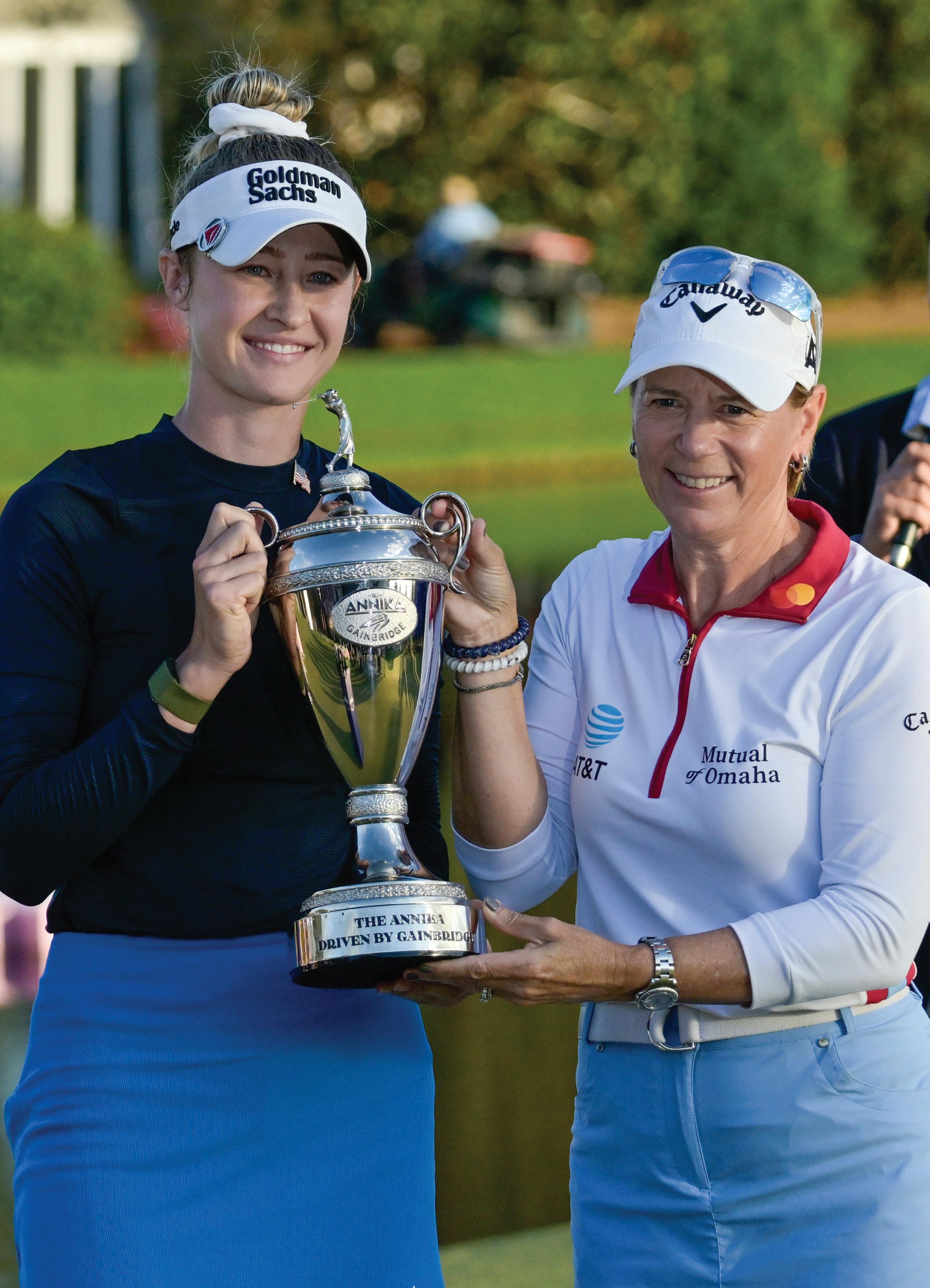
Only weeks after being
By Lisa D. Mickey
Nelly Korda started her unparalleled dominance on the 2024 LPGA Tour in January and never let up until the last putt dropped in late November.
Her remarkable season included seven wins (including a major championship), 11 top-10 finishes, season earnings of nearly $4.4 million and honors as Rolex Player of the Year, Rolex Annika Major Award winner, and top status in the Rolex Women’s World Golf Rankings. About all her peers could do was watch.
It was also a season highlighted by a record five consecutive wins with six wins in seven consecutive starts, punctuated with her final and seventh season victory in midNovember at The ANNIKA driven by Gainbridge at Pelican. That milestone marked the first time an LPGA player had posted seven wins in a season since Yani Tseng in 2011, and the first time an American had reached that mark since Beth Daniel in 1990. Tournament namesake, Annika Sorenstam, was there to watch.
“It’s always great to have the No. 1 player in the world play in your tournament and play it well,” said Sorenstam, a World Golf Hall of Fame member. “Obviously, this year has been a tremendous year. When you’re on a roll, you’re on a roll.”
And while Korda shined most
weeks between the ropes in spite of some nagging injuries and a few missed cuts -- including an uncharacteristic 10 on a par-3 hole to exit early at the U.S. Women’s Open -- there were the spotlight moments of winning her second major at The Chevron Championship, competing in her second Olympics in Paris as the defending gold-medal champion from the 2020 Tokyo Olympics, and leading Team USA to a must-win victory at the 2024 Solheim Cup.
Korda also turned heads at the flashy Met Gala in New York City in May, played golf in November with WNBA rookie superstar Caitlin Clark and posed for the 2025 Sports Illustrated Swimsuit Issue.
“I think Nelly has been incredible,” said LPGA Commissioner Mollie Marcoux Samaan. “Her play on the golf course and what she’s doing off the golf course is an inspiration to so many people, particularly young girls.”
When asked how it felt to be the LPGA’s Player of the Year, Korda said it was reassuring that she was “doing the right thing and all the hard work is paying off.” She was also quick to credit the “great team behind me,” which included coaches, a physical trainer who administered three daily neck treatments leading up to her final tournaments and her
professional-athlete family members who knowingly guided her through the highs and lows of a long season.
“One of the things I admire about her is just how hard of a worker she is,” said brother Sebastian Korda, a tennis pro ranked in the top 25 on the ATP Tour. “As a competitor, what you see is what you get. She’s absolutely fierce … and all that she achieves, she earns.”
Coach Jamie Mulligan said Korda’s success wasn’t as much about plotting goals as it was about sticking to her routine and improving each area of her game.
“She tried to be the best Nelly that she can be and I think she did a really nice job all throughout the year, starting with her overall, everyday procedure,” said Mulligan.
Korda, of course, knows better than to settle for contentment.
“It’s great to reminisce and look at your accomplishments, but that’s not going to get you anywhere,” she said. “[I’m] just motivated and eager to get next year going again.
As chosen by Lisa D. Mickey, who has covered golf for Golf Digest, Golf World, Golf For Women, The New York Times, ESPN.com, the LPGA, and the USGA. She is a three-time Golf Writers Association of America winner for feature writing.

2024 was a breakthrough year for
By Jim McCabe
There are very few arguments that could be waged against suggesting Nick Dunlap should be the 2024 Rookie of the Year.
But to ignore the multitude of reasons in his favor and solely circle that historic win at The American Express in January is flat-out lazy and nonchalance. True, in becoming the first amateur since Phil Mickelson in 1992 to win on the PGA TOUR, Dunlap captured headlines and earned an immediate promotion to the PGA TOUR. It’s impossible to overstate how special that achievement was.
Just take a time to savor a wider picture of the 20-year-old’s rookie season because certain facets of it speak to his brilliance and shouldn’t be overshadowed by the victory.
Start with this: It’s not just that he posted a third-round 60 and earned a one-stroke win in Palm Springs, Calif. No, it deserves to be underlined and highlighted that Xander Schauffele and Justin Thomas shared third place, that Sam Burns and Scottie Scheffler were inside the top 20 and that Wyndham Clark and Patrick Cantlay were also in attendance.
In other words, Dunlap, then a sophomore at the University of Alabama, ruled a field that included a small parade of elite names.
He also was prepared with an allworld answer when asked if he’s got college homework to do? “Yes, but probably won’t do it.”
Smart lad, because while he
couldn’t have the $1,512,000 check, he could accept full status on the PGA TOUR and he subsequently turned professional a few days later. Which is where his story really gained respect and his rookie-ofthe-year honor was solidified, in my humble opinion.
After The American Express, Dunlap in five tournaments as a pro went 12-over in 15 rounds as he missed two cuts and didn’t finish better than T-48. It was an eye-opener.
“You kind of lose a little confidence and wonder if you can do it again,” he said at that juncture of the season. “Your expectations go through the roof a little bit, (but) I knew I needed to get a lot better at a couple different aspects of my game.”
In all due respect to that win at The American Express, Dunlap showed greater character and resiliency in what he did after his rough patch. From mid-March to late July, Dunlap, in a dozen tournaments, posted impressive finishes at the Memorial Tournament (T-12) and the Rocket Mortgage (T-10), then earned his second PGA TOUR win of the season at the Barracuda Championship.
This time, the Alabama native could keep the first-place money ($720,000) but in many ways this victory meant more than winning in Palm Springs. This was validation, it was proof that a young talent not getting caught up in his success and
staying grounded to what he needed to learn could flourish.
“My first couple of events (as a pro) I thought I had to be at the golf course all day practicing,” said Dunlap. “And you don’t do that weekto-week.”
Winning as an amateur and a professional in the same PGA TOUR season? That had never been accomplished before, so Dunlap flashed a wide smile. “It’s really cool . . . it’s definitely an honor.”
His rookie numbers were superb: $2,930,385 to place 62nd on the money list (he’d have been 38th with $4,442,385 had the American Express money counted); he was 49th in the FedExCup standings and played in two of three playoff tournaments; he made the cut in 15 of his 23 starts.
Not bad for a kid who in the summer of 2023 was playing in the U.S. Junior Amateur and U.S. Amateur and a handful of months later was standing in the winner’s circle out of the PGA TOUR.
Here’s a guess that the Arnold Palmer Award (for being Rookie of the Year) won’t be the last of the biggest prizes to adorn his trophy case.
As chosen by Jim McCabe, who was not long into his 23-year career at The Boston Globe when he assigned to cover golf—from juniors to amateurs to the pro game. He continued with a nine-year run at Golfweek magazine and then three years at the PGA TOUR.
Nick Dunlap celebrates sinking the winning putt to become the first amateur since Phil Mickelson to win a PGA TOUR event.

By Ron Green Jr.
As Nick Dunlap stood over a six-foot putt on the 72nd green at the American Express tournament last January, he knew what was at stake.
It wasn’t just a putt to win his rst professional event. Dunlap, still a member of the University of Alabama men’s golf team at the time, was attempting to become the rst amateur to win a PGA TOUR event since Phil Mickelson did it 33 years earlier in Tucson.
“Most nervous I’ve ever been, by far. Just tried to breathe, but also look up and enjoy it a little bit,” Dunlap said in the excited a ermath of his breakthrough victory as a 20-year-old.
In a PGA TOUR season lled with big moments – Scottie Sche er won seven times plus an Olympic gold medal and Xander Schau ele won two major championships – Dunlap’s victory was the most surprising result because it had been more than three decades since an amateur had raised a PGA TOUR title.
Dunlap became the eighth amateur to win a tour event, and it fast-tracked his decision about his future. Just days a er winning in the southern California desert, Dunlap turned pro. Six months later, Dunlap won the Barracuda Championship, making him a two-time winner in his rookie season.
Getting his rst win showed Dunlap at his best and demonstrated his toughness. On Saturday at the American Express, Dunlap shot a 12-under par 60 to rocket up the leader board, building a three-stroke lead
entering the nal round. Despite losing his lead on the front nine on Sunday, Dunlap gathered himself to beat Christiaan Bezuidenhout.
“Everybody’s got doubts. I probably had a thousand di erent scenarios in my head of how today was going to go, and it went nothing like I expected. I think that was the cool part about it. That’s golf,” Dunlap said a er his unexpected victory.
As a sophomore at Alabama, Dunlap had already established himself as one of the game’s emerging stars. He won the 2021 U.S. Junior Amateur Championship and, two years later, he won the U.S. Amateur.
A er his rush to stardom with his victory at the American Express, Dunlap struggled to adjust to his new life. The adjustment to playing the PGA TOUR had its challenges. He missed the cut in the three major championships he played and had just one top-10 nish on tour a er the Amex until his victory at the




Barracuda Championship.
“It’s been a little tough a er AmEx. You kind of lose a little bit of con dence and wonder if you can do it again,” Dunlap said a er winning for the second time.
Dunlap nished his rookie season ranked 49th on the FedExCup points list, earning him a spot in all the signature events in 2025.
“Throughout the year I was kind of struggling, but I still felt like I was getting better, I just wasn’t getting the results that I felt like I was playing,” Dunlap said a er his nal 2024 event.
“It’s a heckuva year.”
As chosen by Ron Green Jr, who has worked as a Charlotte Observer sportswriter for 23 years. He served as President of the Golf Writers Association of America from 2019-21 and continues to cover about 15 pro golf tournaments per year and has covered approximately 100 of golf’s majors, including 41 Masters tourneys.


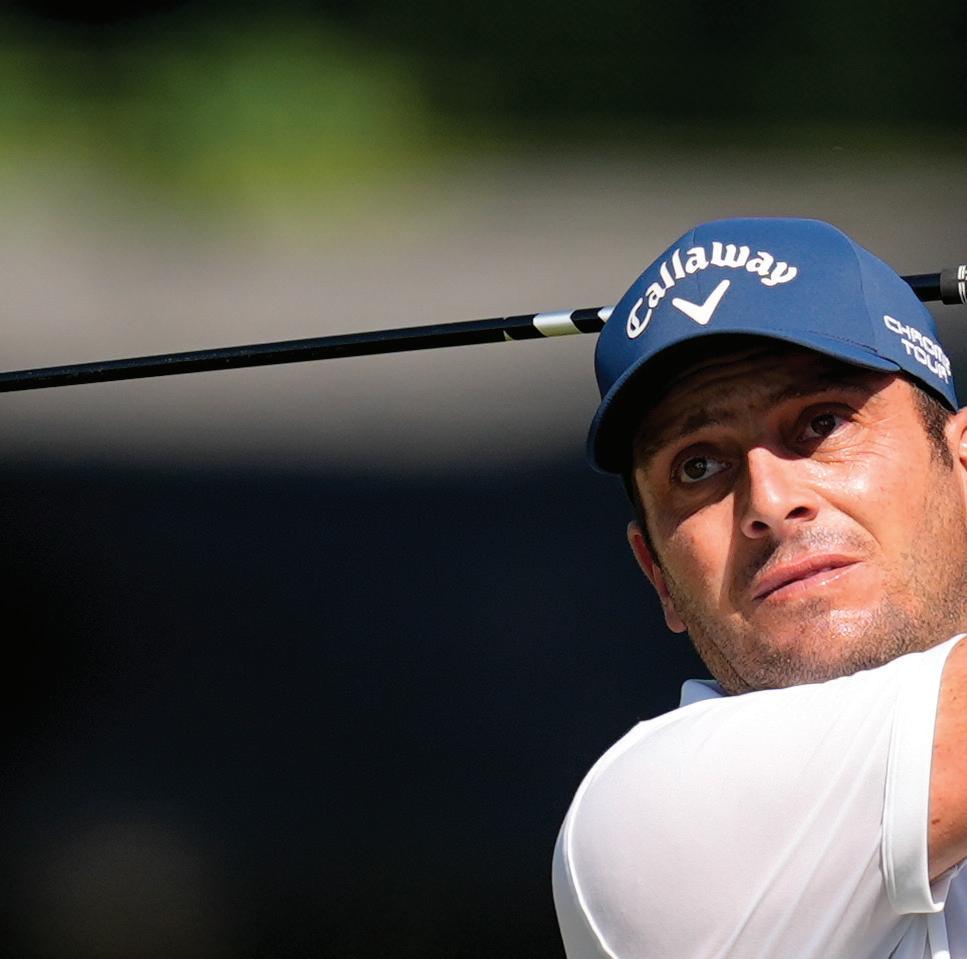

By Charles Ford
That elusive hole-in-one is always a moment of magic for the player who makes the ace, a moment dramatically heightened by the roar of appreciation from the excited crowds. 2024 saw a number of spectacular aces on the pro circuit—but some were even more spectacular than others.
◆ Ryan Fox’s ace at THE PLAYERS on March 14, 2024, is right up there for “shot of the year” in the ace category. The distance from the 16th to the par 3 17th on the famous Island Green, TPC Sawgrass, Stadium Course, is a daunting 124-yard tee shot across water. When Ryan’s ball found the hole in one on the 17th it was one of the biggest highlights of the New Zealander’s career. In the last 42 years, only 13 other players had made an ace on the Island Green.
◆ It was at The Open, Royal Troon, on July 20 that we saw another hole-in-one that made the record
books. The massed fans watched as Si Woo Kim sunk his ace from 238 yards onto the 17th, a rst on the 17th in the history of the tournament. “It was amazing,” said Kim, “I’ve had plenty of holes-in-one in my life. But I think this is the most memorable holein-one.”
◆ We circle back to June 14 and the Friday of the U.S. Open, to nd our ace of aces, our nal top pick for “shot of the year, 2024.”
Why this one? Because it was a make or break shot for the player. He had to deliver a hole-in-one to make the cut.
It was Francesco Molinari who faced this high-pressure moment at the start of the tournament at Pinehurst No. 2. Anything less than an ace would put him out of the U.S. Open.
So Francesco calmly grips his 7-iron on the 194-yard par-3 9th


and goes for it. His shot ies high, bouncing on the edge of the green, then continues on miraculously to rattle into the cup.
In total disbelief, Molinari staggered to one side and crumpled in joyful celebration. He had made the cut!
“What are the chances, really?” Francesco said later. “I don’t even know what to say. Just incredible.”
According to stats data, the odds on delivering an ace to order in this instance were virtually impossible, giving a 0.02% chance of coming good, and requiring Molinari to deliver the perfect combination of luck and skill.
As chosen by Charles Ford, who has worked with the PGA TOUR for 20 years as managing editor of the PGA TOUR Essential Guide to Golf, along with several other TOUR publications, including Presidents Cup and other major event publications.










By Michael LoRé
We’ve all been there before.
Standing on the tee box surveying the scene ahead of your upcoming shot, you pause with hesitation, afraid of potentially hitting into the group ahead. Unable to determine their exact distance, the golfers are in fairway limbo— potentially far enough away to safely grip it and rip it, but if you hit it well, there is a chance it can cause trouble.
Cognizant of pace of play as well as not wanting to have to stand around waiting, you debate this conundrum internally and then with your playing partners, who o er words of encouragement.
“You’re never going to hit them.”
“You don’t think I can hit them?”
“No, you’ve never hit the ball that far in your life.”
Understanding it will require arguably the best drive of your life, you determine the group ahead is in fact a safe distance away, so you proceed with your tee shot. What are the chances, right?
But thanks to the “vertical drop, horizontal tug” tip you overheard during a lesson at the driving range, you absolutely ush it. Excited and

For its season finale, Curb Your Enthusiasm averaged 4.9 million viewers per episode.
proud of your ideal drive, you realize the ball is screaming toward a golfer in the fairway lining up his approach shot. You have an urge to yell “fore!” but then remember there’s no use because the player directly in the ball’s path is deaf. WHACK! The ball hits him square in the back and down he goes.
Holy shit!
You hit him!
I hit him!
Taking a common golf situation and adding multiple wrinkles of comedic nuance and social awkwardness like only Larry David can, this scene in the third episode of the 12th and nal season of “Curb Your Enthusiasm” took golf social media by storm in early 2024.
While the year was lled with humorous and memorable moments, whether it was Zach Johnson yelling at fans at both the WM Phoenix Open and The Masters, Bryson DeChambeau doing his best Jesus impression carrying a sign at Augusta National or literally anything St. André Golf produced on social media, this scene from the golf-obsessed comedian boasts a relatability factor that hits close to home that all golfers can
relate to.
There’s always the fear that you will hit into the group ahead, so more times than not, you err on the side of caution and wait. But waiting can be detrimental and cause added pressure, resulting in an errant tee shot and thus, ridicule amongst your playing partners. While your ego may take a hit, it’s better than hitting the group in front, which can only result in a number of negative outcomes. As golf continues to grow in popularity and participation, courses will become busier, so it’s important to practice safe tee shots.
If you do run into an issue like Larry David did, be sure to o er more than “a Postmates dinner” to the justi ably aggravated golfer. And if you need to take a drop, remember to “drop it where the body was.” ■
As chosen by Michael LoRé, a sports journalist with over 15 years' experience as a sportswriter and editor. He writes monthly stories for the 'SportsMoney' section of Forbes.com; his work also appears on the likes of VICE Sports, NHL. com, Muscle & Fitness, New York City FC, and Travel + Leisure.
Donald Trump has a deep connection to golf, owning a global portfolio of courses under his brand. We take a closer look at this unique relationship
By Cyrus Kahoro


Donald Trump is indeed the man of the moment. He beat all odds to become only the second-ever American president to win re-election in a non-consecutive term. The 78-year-old’s life has been marked by sheer determination and overcoming obstacles to succeed, from his early days making a fortune in real estate to venturing into reality TV and eventually politics.
One thing that stands out, however, is Trump’s undying love for golf. Like most U.S. presidents, he enjoys unwinding on the greens and boasts an impressive handicap of around 2.5. In addition to teeing it off regularly, he owns the Trump Golf brand, which boasts around 18 premium golf courses globally, scattered across different locations like the U.S., Scotland, and Dubai.
Golf is a sport that teaches its players powerful values, such as strong character and the will to succeed. We highlight Trump’s deep connection with the game.
Trump’s Golf Background
The U.S. President began teeing it off as a college student at Fordham. Golf
icon Jack Nicklaus was once quoted saying that Trump “loves the game of golf more than he loves money.” The politician affirms this in his 2005 book The Best Golf Advice I Ever Received, where he wrote, “For me and millions of people—men, women, young and old around the world—golf is more than a game. It is a passion.”
After graduating from the University of Pennsylvania with a bachelor’s degree in economics in 1968, Trump later became the president of his family’s real estate business in 1971. For the next three decades, the producer and host of the reality television series The Apprentice honed his skills in the real estate industry, surviving a series of business failures in the process.
In 1999, he opened his first golf course: the Trump International Golf Club in West Palm Beach, Florida. Since then, Trump’s love for the game soared, owning four courses across the U.S. by 2007 and purchasing existing courses and redesigning them following the 2007–2008 financial crisis. As of writing, Trump Golf owns around 18 golf courses in prime locations worldwide, which have
hosted top events like the LPGA Tour finale from 2001 to 2008.
Famed Trump Courses
Trump International, Aberdeen, Scotland
The 7,428-yard Trump International Scotland layout, designed by Martin Hawtree, ranks as the greatest modern championship links course in Great Britain and Ireland.
Trump International Golf Links, Doonbeg, Ireland
This links course was originally sculpted from massive sand hills edging the Atlantic Ocean. Players here enjoy unforgettable panoramas and shot-making challenges.
Trump National Doral, Miami, Florida
The course features views of sparkling lakes, bold bunkering, and swaying coconut palms. You can play at one of the resort’s four redesigned championship courses, such as the Blue Monster.
Several of his courses have hosted events on the LPGA Tour and LIV Golf circuits.

As per the USGA’s Golf Handicap and Information Network, the former host and producer of The Apprentice boasts a handicap of 2.5.
Trump National Golf Club, Los Angeles, California
The layout’s blu -top location o ers views of the Paci c Ocean from every hole, and it constantly ranks among the top 30 public courses in America.
Trump Turnberry, Scotland
The Ailsa at Trump Turnberry is considered one of the top 20 courses in the world. It has hosted many memorable events, such as the 1977 Nicklaus vs. Watson “Duel in the Sun.”
Trump International Golf Club, Dubai



The 7,205-yard, par-71 Gil Hanse design is located in the heart of the ‘AKOYA by DAMAC’ master development. It boasts a links-style presentation of native sand areas, valleys, and ridges unique to the Arabian Peninsula.
Trump Bedminster, New Jersey
Trump Bedminster features two stellar Tom Fazio designs: the Old Course, which hosted the 2017 U.S. Women’s Open, and the New Course, where the 2009 U.S. Junior Amateur took place.
Trump National Charlotte, North Carolina
Nearly two-thirds of the holes at Trump National Charlotte play in view of or next to the gorgeous Lake Norman, making the layout one of the most striking golf courses in the Carolinas.
Trump National Colts Neck, New Jersey
The low-profile links layout is dotted with lakes, especially at the popular 19th hole, and sits amid the equestrian farms of Monmouth County in coastal New Jersey.
Trump National Hudson Valley, New York
The nearly 7,700-yard course, designed upon a former buffalo farm, is located in the heart of the Hudson Valley, with the Stormville Mountains as a beautiful backdrop.

Trump National Jupiter, Florida
The Jack Nicklaus-designed 7,531yard course skillfully blends Scottish accents, such as revetted bunkers and run-ups into many greens, with lush coastal Florida foliage.
Trump International Golf Club, Palm Beach, Florida
This was the Trump Organization’s debut course developed in 1999. It features 27 Fazio-designed holes, exquisite entrance gates, and service, décor and amenities to match.
With such deep roots in the world of golf, Donald Trump’s second term in office might signal good tidings for the golf industry. He boasts close relationships with renowned players, including Bryson DeChambeau, who featured him in an episode of his Breaking 50 YouTube show in July 2024. One thing for sure is that no matter which title Trump holds, a golf club will always be one of his favorite tools of the trade. ■

With the new FedExCup season underway, we take a closer look at the schedule and the players poised to make an impact in 2025
By David Barrett

The 2025 FedExCup season on the PGA TOUR has a familiar look with the same 39 events as in 2024. That includes the four major championships, the Players Championship, eight Signature Events with limited fields, three FedExCup Playoff events, 18 Full-Field events, and five Additional Events held in the same week as another tournament.
The U.S. Open heads to Oakmont Country Club outside of Pittsburgh for the 10th time, which is more than any other site. The PGA Championship goes to Quail Hollow Club in Charlotte, North Carolina, for the second time, following the 2017 event won by Justin Thomas. The Open Championship will be contested in Northern Ireland for just the third time, all at Royal Portrush, where Shane Lowry prevailed in 2019 (the other Open there was in 1951). The Masters, of course, kicks off the major season at Augusta National’s rite of spring in April.
The most significant venue change on the schedule is a one-year modification since Quail Hollow normally hosts a regular PGA TOUR event, which with new sponsorship this year becomes the Truist Championship. That will be played at Philadelphia Cricket Club in 2025 in May.
The RBC Canadian Open will be held for the first time at TPC Toronto at Osprey Valley. That event moves back into a slot the week before the U.S. Open in June after a one-year switch in 2024 with the Memorial Tournament, which returns to its traditional spot after Memorial Day, two weeks before the U.S. Open.
The lineup of Signature Events remains the same, the season-opening The Sentry which saw Japan’s Hideki Matsuyama come out on top, the AT&T Pebble Beach Pro-Am and The Genesis Invitational on the West Coast swing, the Arnold Palmer Invitational in March, RBC Heritage in April, Truist Championship in May, Memorial Tournament in May/June, and Travelers Championship in June. They offer more FedExCup points than the standard event, with 700 points to the winner compared to 500 for a
regular tournament. The majors and the Players Championship award 750 points to the winner.
The season culminates with the FedExCup Playoffs in August, starting with the FedEx St. Jude Championship in Memphis. For the second year, that event will be limited to the top 70 point earners during the regular season. The BMW Championship, which moves from year to year, will be contested at Caves Valley Golf Club outside of Baltimore for the second time after Patrick Cantlay won there in 2021. The season again concludes in August with the Tour Championship at East Lake Golf Club in Atlanta, where the FedExCup champion will be crowned.
All eyes will be on Scottie Scheffler as he seeks not only to defend his FedExCup title, but also to continue to put his stamp on the 2020s as the dominant player of the decade.
All eyes will be on Scottie Scheffler as he seeks not only to defend his FedExCup title, but also to continue to put his stamp on the 2020s as the dominant player of the decade. The 28-year-old Scheffler has 13 victories since joining the PGA TOUR in 2020, including six last year. The next highest total in the 2020s is eight by Rory McIlroy and Jon Rahm. All of Scheffler’s wins have come since 2022 (next best in that span is McIlroy with six). A few more years like the last couple could move Scheffler into the list of all-time greats. However, a hand injury suffered preparing Christmas dinner has meant that he has missed the opening two events of the new season and will also miss the Farmers Insurance Open.
Scheffler’s biggest challengers are likely to be Xander Schauffele and Rory McIlroy. Schauffele finally broke
the barrier and won his first major in 2024—and quickly made it two when he added the Open Championship to the PGA Championship. McIlroy won twice on the PGA TOUR in 2024, but it was also a year with much frustration. His two missed short putts down the stretch cost him the U.S. Open and continued a major-less streak since 2014. Then he lost the lead on the closing holes of the Amgen Irish Open and BMW PGA Championship on the DP World Tour to heroic finishes by fellow competitors. But McIlroy enters 2025 on a more positive note after winning the DP World Tour Championship in November.
With Schauffele having taken care of business, the leading players on the best-with-no-majors list are Cantlay and Viktor Hovland. The highest player on the Official World Golf Ranking without a major is Ludvig Aberg at fifth. The 25-yearold Swede only turned pro in the summer of 2023, so he hasn’t had many opportunities yet. Aberg is one of the most intriguing players entering 2025. He won twice in late 2023, once on the PGA TOUR and once in Europe, and showed plenty of promise in 2024 while being shut out in the victory column. He finished second three times, including the Masters, demonstrating plenty of potential which he will try to realize this season.
Two players who entered the 2020s looking like they would maintain elite positions on the Tour are looking to bounce back from surprising slumps— neither Jordan Spieth nor Thomas has won since 2022 even though they are at an age where they should be in their prime (both are 31). Three-time major winner Spieth fell all the way to 67th on the FedExCup points list in 2024 and had surgery on his left wrist in August. He expects to be ready to play by the start of the 2025 season, but getting back to his prior form could be a challenge.
Two-time PGA champion Thomas showed a partial return to form in 2024 after a deep slump in 2023, but wasn’t able to post a victory. He seems like a good bet to return to the winner’s circle this year. ■

As TGL tees off, we take a look at the brand new formatted golf league and why it could be the next big thing
By Cyrus Kahoro
It’s a pretty good time to be a golf fan, player, or stakeholder. Recently, we have experienced a modern renaissance marked by innovation, younger audiences embracing the sport, and even entertaining rivalries in the top leagues. In December, fans worldwide enjoyed the inaugural edition of ‘The Showdown’, pitting the PGA TOUR’s Scottie Scheffler and Rory McIlroy against LIV Golf’s Bryson DeChambeau and Brooks Koepka, with the former team emerging victorious. 2025 looks to be even more promising, after the highly anticipated indoor golf competition TGL (Tomorrow’s Golf League) finally launched in January. Sports executive Mike McCarley and golf icons Tiger Woods and Rory McIlroy spearhead the new high-tech league, which features six teams representing six different U.S. towns and cities. TGL looks to redefine how fans experience golf by blending technology, entertainment, and sportsmanship in a never-seenbefore fashion.
TGL aims to combine the latest golf technology with in-person competitions, including a shot clock, timeouts, and both team and individual match play. The SoFi Center in Palm Beach, Florida, serves as the first TGL venue, leveraging high-end technology to bring a fresh, modern, fast-paced twist to the game. The world’s best PGA TOUR players play in a virtual arena where real-world skills meet digital simulation.
Golfers take full swings on a giant golf simulator, giving spectators time to see the ball take off and register trajectory before hitting the screen. All the short-game elements, such as precision shots and putting, occur on physical greens, with the slope of the greens changing with each

hole. Blending digital and physical elements offer a more engaging and immersive viewing experience, and incorporating state-of-the-art broadcasting technology, real-time analytics, and augmented reality (AR) will elevate fan enjoyment.
TGL seeks to mirror the success of sports innovations like the NBA’s three-point revolution and T20 cricket to bring a surge of new interest to golf. Today’s sports fans have fast-paced preferences, and while traditional golf boasts a rich history and charm, it can be a slow-moving game. TGL offers a revolutionary format of fast-paced team matches featuring six teams of four PGA TOUR stars each, emphasizing teamwork and strategy and offering fans a fresh perspective on their favorite players beyond individual performances.
The teams represent six different U.S. towns and cities as follows:
◆ Atlanta Drive GC from Atlanta, Georgia, is owned by Arthur Blank and consists of Patrick Cantlay,
Lucas Glover, Billy Horschel, and Justin Thomas.
◆ Boston Common Golf from Boston, Massachusetts, is owned by Fenway Sports Group and consists of Rory McIlroy, Keegan Bradley, Hideki Matsuyama, and Adam Scott.
◆ Jupiter Links Golf Club from Jupiter, Florida, is owned by Tiger Woods and David Blitzer and consists of Max Homa, Tom Kim, Kevin Kisner, and Tiger Woods.
◆ Los Angeles Golf Club from Los Angeles, California, is owned by Alexis Ohanian, Venus Williams, and Serena Williams. The players include Tommy Fleetwood, Collin Morikawa, Justin Rose, and Sahith Theegala.
◆ New York Golf Club from New York City, New York, is owned by Steve Cohen and comprises Matt Fitzpatrick, Rickie Fowler, Xander Schauffele, and Cameron Young.
◆ The Bay Golf Club from San Francisco, California, is owned by Marc Lasry and Stephen Curry and consists of Ludvig Åberg, Wyndham Clark, Shane Lowry, and Min Woo Lee.

TGL matches take two hours on Monday and Tuesday nights, airing on ESPN or ESPN2 and streaming on ESPN+. The regular season comprises of 15 matches, and players wear microphones during play to enhance the fan experience. The regular season runs from early January to early March, with the top four teams advancing to the semifinals, scheduled for March 17 and 18. The winners will compete for the SoFi Cup in a best-of-three final on March 24 and 25.
Each TGL match has two sessions:
◆ Session one – A nine-hole, 3-on-3 alternate-shot format called ‘triples.’
◆ Session two – Singles, with players going head-to-head for six holes and each golfer playing two holes.
There is added pressure, with a shot clock ticking at 40 seconds and every violation attracting a one-stroke penalty. Each hole is worth one point, and teams that tie at the end of regulation proceeds to overtime.
In overtime, players go head-to-head, and the team that hits its shot closest to the pin is declared the winner.
Every new project is as good as its backers, and TGL is fortunate to have two of the most iconic figures in golf, Tiger Woods and Rory McIlroy, spearheading it. Behind the scenes is TMRW Sports CEO Mike McCarley, who has decades of experience working closely with various sports organizations. The leadership team guarantees credibility and the allure needed to attract other top-tier players, while the prospect of weekly team battles involving golf’s elite adds unpredictability and drama. The TGL project has also attracted many notable celebrity investors, such as pop artist Justin Timberlake, Liberty Media CEO Greg Maffei, Formula One driver Lewis Hamilton, and NBA players Stephen Curry, Andre Iguodala, Shaquille O’Neal, Dwyane Wade, and Kevin Durant.
TGL aims to reinvent golf’s broadcast model, incorporating prime-time scheduling and live audience participation for optimal fan engagement. With matches taking place on Monday and Tuesday nights from January to March, the league captures a wide audience without competing directly with weekend sports or clashing with the timetables of major leagues like the NFL and the NBA. While traditional golf has struggled to attract younger sports fans, TGL includes interactive features to capture their attention, such as direct fan interaction with players, fantasy elements, and realtime polls.
The long hours required by traditional tournaments have also potentially turned off interested newcomers to the sport, but TGL solves this with prime-time
broadcasts designed for accessibility. The new league’s focus on urban settings, accessible technology, and diverse programming will potentially democratize golf and inspire a new generation of players and fans from all walks of life.
Whenever golf comes to mind, we typically picture beautiful, lush green surroundings and hushed crowds. TGL seeks to flip that narrative, taking place in enclosed arenas with live, charged audiences, like in football and basketball games. Combining team competition with the energy of a packed arena could become a signature feature of TGL, promising excitement rarely seen in golf and appealing to fans of highoctane sports.
TGL’s tech infusion, combined with live athletic performance, positions the league at the
intersection of Esports and traditional sports, creating a hybrid model that could captivate fans from both worlds. Considering that Esports is now a multi-billion-dollar industry with a massive global following, TGL has the potential to tap into the lucrative market whilst bringing the thrill of live sports into the equation.
Innovation is one of the biggest goldmines of the 21st century, and TGL’s concept will undoubtedly attract sponsors and advertisers. The strategic combination of primetime slots, advanced technology, and a younger audience creates a platform ripe for unique branding opportunities and creative avenues for engagement, such as branded in-game elements and custom AR experiences. TGL’s cutting-edge innovation and affiliation with global superstars guarantee its commercial viability and ensure it will have the financial backing needed to sustain and grow.
Golf has often been criticized for its environmental impact due to the vast amounts of land, water, and resources that traditional golf courses require. However, TGL’s arena-based model addresses these concerns by staging matches in controlled environments, offering a more sustainable alternative that minimizes the league’s ecological footprint. The urban-friendly and compact setup of TGL arenas will also make the sport more accessible to fans residing far from traditional golf courses, broadening the sport’s reach.
TGL marks a bold step forward for golf, combining tradition with innovation to create something new. The league’s technological integration, star power, fresh format, and fan-centric design make it a prime candidate to become the sports next big thing, giving it a strong foundation for longterm success. ■

In recent years, Sam Burns has risen up the rankings emerging as a top PGA TOUR player. We take a closer look at his steady rise
By Cyrus Kahoro

Samuel Holland Burns, commonly known as Sam Burns, represents the new generation of golfers who blend skill, athleticism, and professionalism. The American stands out with his mental toughness, smooth putting, and powerful drives, which rank him among the most consistent and talented young golfers on the PGA TOUR. Burns’ inspirational journey from an exemplary collegiate player to a multiple-time PGA TOUR winner has seen him quickly rise to prominence in the professional game, exemplifying his natural talent and dedication to the sport.
Early Life and Amateur Career Burns was born on July 23, 1996, in Shreveport, Louisiana, to Todd and Beth Burns, making him 28 years old as of writing. His sports-loving family enabled him to develop a passion for golf early, with his parents encouraging him to compete in junior golf tournaments. He attended Calvary Baptist Academy in Shreveport, where he excelled academically while quickly making a name for himself in golf with his composed demeanor and impressive skills. During his time here, he was named AJGA Rolex Junior Player of the Year in 2014 and was a
three-time individual state champion. Burns played collegiate golf at Louisiana State University (LSU), which boasts one of the premier collegiate golf programs in the United States. During his sophomore season, he won four tournaments in 15 collegiate starts. He was also the NCAA Division I Jack Nicklaus National Player of the Year for the 2016–17 season and was named a first-team All-American. He was also part of the winning U.S. 2017 Arnold Palmer Cup team and qualified for the PGA TOUR’s 2017 Barbasol Championship, finishing T6.
Burns turned professional in 2017, hungry to test his skills against the best players in the world. He joined the Korn Ferry Tour and won the Savannah Golf Championship during the 2017-18 season, along with five other top-10 finishes at the Club Colombia Championship (T2), Utah Championship Presented By Zions Bank (3), Price Cutter Charity Championship pres. by Dr Pepper (T7), KC Golf Classic (3), and The Honda Classic (T8).
The American’s consistent performance helped secure his promotion to the PGA TOUR for the 2018-2019 season. In his debut season, he posted three top-10 finishes at the Sanderson Farms Championship (T3), RBC Heritage (9), and 3M Open (T7), showcasing his ability to compete at the highest level. The 2019-20 season wasn’t as eventful, as he managed only one top-10 finish at The American Express (T6).
But Burns found his breakthrough in the 2020-21 season, claiming his first PGA TOUR victory at the Valspar Championship, where he held off strong challenges and displayed remarkable composure during the final round to secure the win. He also posted five other top-10 finishes that season at the Safeway Open (T7), Vivint Houston Open (T7), The Genesis Invitational (3), AT&T Byron Nelson (2), and BMW Championship (8).
The 2021-22 season was his best yet, recording three PGA TOUR wins at the Sanderson Farms Championship and the Charles Schwab Challenge and successfully defending the Valspar Championship title. Burns additionally posted five other top-10 wins at THE CJ CUP @ SUMMIT (T5), Houston Open (T7), Hero World Challenge (T3), Arnold Palmer Invitational pres. by Mastercard (T9), and RBC Canadian Open (T4). He was also part of the 2022 Presidents Cup U.S. team, where he tied two and lost three of his five matches.
Burns continued his good form in the 2022-23 season, clinching his fifth PGA TOUR title at the WGC-

Dell Technologies Match Play in March 2023 after flooring Cameron Young 6 and 5 in the championship match. He posted five other top-10 finishes at THE CJ CUP in South Carolina (T7), WM Phoenix Open (T6), Valspar Championship (6), Charles Schwab Challenge (T6), and TOUR Championship (T9). He also participated in his first Ryder Cup in 2023 as one of Zach Johnson’s six captain’s picks.
The American similarly emerged as a consistent contender in 2024, posting eight top-10 finishes at the:
◆ The American Express (T6)
◆ AT&T Pebble Beach Pro-Am (10)
◆ WM Phoenix Open (T3)
◆ The Genesis Invitational (T10)
◆ RBC Canadian Open (T10)
◆ U.S. Open (T9)
◆ FedEx St. Jude Championship (T5)
◆ BMW Championship (T2)
Playing Style and Strengths
Burns is one of the most promising players of this generation, employing an aggressive yet calculated approach in his game. He ranks among the PGA TOUR’s longest drivers, combining power and precision off the tee
Burns is one of the stronger drivers on tour, averaging 311.4 yards in 2023.
while maintaining accuracy. He also boasts sharp iron play, enabling him to attack pins and create consistent birdie opportunities.
He has also proven to be a master putter. His advanced ability to read greens and sink clutch putts helps him secure victories. He calmly holds his own on the greens, whether it’s a pressure-packed par save or a long-range birdie putt. Burns’ mental toughness has earned him respect from his peers and fans alike, as he remains focused during challenging moments and displays a calm demeanor under pressure.
Burns has played in 158 PGA TOUR events, made the cut in 111, and clinched five titles as of writing. He boasts 37 top-10 finishes and has earned $28,479,623 in official money. Based on his exceptional consistency, a major title may land in the players’ trophy cabinet very soon. When the Louisiana native is not playing competitive golf across the world, Burns unwinds with his spouse, Caroline, and enjoys supporting a number of charities including Compassion International’s “Fill the Stadium” initiative. ■












• Prevent asthma attacks • Improve breathing • Lower daily use of oral steroids*
FASENRA 8-week dosing offers patients the fewest doses per year.†,‡
*Results may vary. †The first 3 doses are given on day 1, week 4, and week 8. ‡Dosing comparisons do not imply similar efficacy or safety.
Talk to your doctor or visit FASENRA.com
Do not use FASENRA if you are allergic to benralizumab or any of the ingredients in FASENRA.
Do not use to treat sudden breathing problems.
FASENRA may cause serious side effects, including:

FASENRA is a prescription medicine used with other asthma medicines for the maintenance treatment of asthma in people 6 years and older whose asthma is not controlled with their current asthma medicines. FASENRA is not used to treat sudden breathing problems.
• allergic (hypersensitivity) reactions, including anaphylaxis. Serious allergic reactions can happen after you get your FASENRA injection. Allergic reactions can sometimes happen hours or days after you get your injection. Tell your healthcare provider or get emergency help right away if you have any of the following symptoms of an allergic reaction:
o swelling of your face, mouth and tongue
o breathing problems


o fainting, dizziness, feeling lightheaded (low blood pressure)
o rash
o hives
Before using FASENRA, tell your healthcare provider about all of your medical conditions, including if you:
• have a parasitic (helminth) infection
• are taking oral or inhaled corticosteroid medicines. Do not stop taking your corticosteroid medicines unless instructed by your healthcare provider. This may cause other symptoms that were controlled by the corticosteroid medicine to come back
• are pregnant or plan to become pregnant. It is not known if FASENRA will harm your unborn baby. Tell your healthcare provider if you become pregnant during your treatment with FASENRA
• are breastfeeding or plan to breastfeed. It is not known if FASENRA passes into your breast milk. Talk to your healthcare provider about the best way to feed your baby if you use FASENRA
• are taking prescription and over-the-counter medicines, vitamins, or herbal supplements

Do not stop taking your other asthma medicines unless instructed to do so by your healthcare provider. Tell your healthcare provider if your asthma does not get better or if it gets worse after you start treatment with FASENRA.
The most common side effects of FASENRA include: headache and sore throat. These are not all the possible side effects of FASENRA.
You are encouraged to report the negative side effects of prescription drugs to the FDA. Visit www.FDA.gov/medwatch or call 1-800-FDA-1088.
Please see Brief Summary of full Prescribing Information on adjacent page.



Read this brief summary carefully before using FASENRA for the first time and each time you use a new dose. There may be new information. This summary does not take the place of talking to your healthcare provider about your medical condition or treatment.
What is FASENRA?
FASENRA is a prescription medicine used:
o with other asthma medicines for the maintenance treatment of asthma in people 6 years and older whose asthma is not controlled with their current asthma medicines. FASENRA helps prevent severe asthma attacks (exacerbations) and may improve your breathing.
o to treat people 18 years and older with eosinophilic granulomatosis with polyangiitis (EGPA).
• FASENRA reduces blood eosinophils. Eosinophils are a type of white blood cell that may contribute to your condition.
• FASENRA is not used to treat sudden breathing problems.
• Tell your healthcare provider if your asthma does not get better or if it gets worse after you start treatment with FASENRA.
It is not known if FASENRA is safe and effective in children with asthma under 6 years of age.
It is not known if FASENRA is safe and effective in children with EGPA under 18 years of age.
Do not use FASENRA if you are allergic to benralizumab or any of the ingredients in FASENRA. See the end of this leaflet for a complete list of ingredients in FASENRA.
Before using FASENRA, tell your healthcare provider about all of your medical conditions, including if you:
• are taking oral or inhaled corticosteroid medicines. Do not stop taking your corticosteroid medicines unless instructed by your healthcare provider. This may cause other symptoms that were controlled by the corticosteroid medicine to come back.
• have a parasitic (helminth) infection.
• are pregnant or plan to become pregnant. It is not known if FASENRA will harm your unborn baby. Tell your healthcare provider if you become pregnant during your treatment with FASENRA.
• are breastfeeding or plan to breastfeed. It is not known if FASENRA passes into your breast milk. You and your healthcare provider should decide if you will use FASENRA and breastfeed. Talk to your healthcare provider about the best way to feed your baby if you use FASENRA.
Tell your healthcare provider about all the medicines you take, including prescription and over-the-counter medicines, vitamins, and herbal supplements.
Do not stop taking your other medicines for your condition unless your healthcare provider tells you to.
How will I use FASENRA?
• FASENRA is injected under your skin (subcutaneously):
o one time every 4 weeks for the first 3 doses and then every 8 weeks, for asthma.
o one time every 4 weeks for EGPA.
• FASENRA comes in a single dose prefilled syringe and in a single dose autoinjector.
• A healthcare provider will inject FASENRA using the single-dose prefilled syringe.
• If your healthcare provider decides that you or a caregiver can give the injection of FASENRA, you or your caregiver should receive training on the right way to prepare and give the injection using the FASENRA PEN.
• In people aged 6 to 11 years, FASENRA should only be given by a caregiver or healthcare provider.
• Do not try to inject FASENRA until you have been shown the right way by your healthcare provider. See the detailed “Instructions for Use” that comes with FASENRA PEN for information on how to prepare and inject FASENRA.
• If you miss a dose of FASENRA, call your healthcare provider
What are the possible side effects of FASENRA?
FASENRA may cause serious side effects, including:
• allergic (hypersensitivity) reactions, including anaphylaxis. Serious allergic reactions can happen after you get your FASENRA injection. Allergic reactions can sometimes happen hours or days after you get your injection. Tell your healthcare provider or get emergency help right away if you have any of the following symptoms of an allergic reaction:
o swelling of your face, mouth and tongue
o breathing problems
o fainting, dizziness, feeling lightheaded (low blood pressure)
o rash
o hives
The most common side effects of FASENRA include headache and sore throat.
These are not all the possible side effects of FASENRA.
Call your doctor for medical advice about side effects. You may report side effects to FDA at 1-800-FDA-1088.
How should I store FASENRA?
• Store FASENRA in the refrigerator between 36°F to 46°F (2°C to 8°C).
• FASENRA may be stored at room temperature between 68°F to 77°F (20°C to 25°C) for up to 14 days
• Once removed from the refrigerator and brought to room temperature FASENRA must be used within 14 days or thrown away.
• Store FASENRA in the original carton until you are ready to use it to protect it from light.
• Do not freeze FASENRA. Do not use FASENRA that has been frozen.
• Do not expose FASENRA to heat.
• Do not use FASENRA past the expiration date.
• Keep FASENRA and all medicines out of the reach of children.
General information about the safe and effective use of FASENRA. Medicines are sometimes prescribed for purposes other than those listed in a Patient Information leaflet. Do not use FASENRA for a condition for which it was not prescribed. Do not give FASENRA to other people, even if they have the same symptoms you have. It may harm them.
You can ask your doctor or pharmacist for information about FASENRA that is written for healthcare providers.
What are the ingredients in FASENRA?
Active ingredient: benralizumab
Inactive ingredients: L-histidine, L-histidine hydrochloride monohydrate, polysorbate 20, α , α -trehalose dihydrate, and Water for Injection
The information provided here is not comprehensive.
Ask your healthcare provider for additional information about FASENRA. You can also contact the company that makes FASENRA (toll-free) at 1-800-236-9933 or at www.fasenra.com.
FASENRA is a registered trademark of the AstraZeneca group of companies. ©2024 AstraZeneca LP. All rights reserved.
Manufactured for: AstraZeneca Pharmaceuticals LP, Wilmington, DE 19850
Revised: September 2024 US-96505 12/24








What’s the secret to achieving a hole-in-one in golf? Is it purely a matter of probability, a stroke of luck, or a display of skill?



TBy Cyrus Kahoro




he wow factor that hitting a hole-in-one in golf comes with is extremely blissful. It’s one of those moments a golfer cherishes


for the rest of their life. Nonetheless, making a hole-in-one is easier said than done. The odds of an amateur player achieving this feat is 12,500 to 1,


while those of a pro golfer are relatively better at 2500 to 1. Scoring more than one hole-in-one in a round of golf becomes even closer to impossible.


A Hole-in-One, also known as an Ace, occurs when your rst hit from the tee lands the golf ball straight into the cup. Making a hole-in-one is more common on shorter-distance par-3 holes, with the likelihood dwindling by increasing the distance. The rst recorded hole-in-one was in the 1869 British Open by Tom Morris.
Although making a hole-in-one sounds like simply landing your rst hit into the cup, the shot must meet speci c requirements to be valid. These include:
◆ There must be a credible witness to verify the shot.
◆ A hole-in-one recorded during a ‘scramble’ competition, such as Captain’s Choice, is still considered valid.
◆ When a player who uses one ball makes a hole-in-one during a practice round using two or more
Statistical models are used to estimate the likelihood of a hole-in-one for a given golfer and hole.
balls, the shot is invalid.
◆ When a player hits a hole-in-one from a temporary tee not de ned explicitly by the Committee, any registered certi cate should still record the length of the hole.
Some cases where the shot is invalid include:

◆ If there have been multiple attempts on the same hole.
◆ If the shot occurred a er a penalty shot.
◆ If the player scored the hole-inone in a gol ng simulator.
◆ If the shot occurred a er a mulligan.
Making a hole-in-one requires a precise and powerful shot, explaining why experienced players are more likely to achieve the feat. The power and high shot accuracy needed to hit a hole-in-one takes years of practice. It would help if you had impeccable balance, the right tempo, good grip, and set up to execute the required solid long drive.
To achieve high precision in your shot, you must understand the relationship between the club face and the swing path through impact,




creating favorable conditions for the perfect shot. Practice your swing extensively to increase your chances of hitting a hole-in-one and master course layout analysis and club selection. Learning how to control the distance and direction of your shots is a must to join the hole-inone club.
Probability counts a great deal in making a hole-in-one. Factors such as the speci c hole being played and a golfer’s skill level a ect the odds of hitting the shot, with some holes presenting fewer hazards and shorter distances than others. Statistical models are used to estimate the likelihood of a hole-inone for a given golfer and hole. Still, given the uncertainty of the sport and the variability in individual performance, the calculations may not be accurate. Nonetheless, the more skilled the player, the
better their chances of making a hole-in-one.
Although super achievers don’t cast their hopes on luck, a little bit of good fortune on the course contributes signi cantly to making a hole-in-one. Skill and probability might work in your favor, but then there are factors beyond your control, such as course conditions, slope, and wind, which may a ect the ball’s ight and eventual shot outcome. You might hit a slightly o -target shot on a lucky day, but it catches a fortunate bounce or roll and drops into the hole. On the other hand, a well-executed shot might come close to the hole but fail to go in due to the various unpredictable factors of golf.
Your brain is a crucial asset and ally in golf. Do you believe you can make
a hole-in-one? Having faith in your abilities and employing con dence, concentration, and focus are signi cant prerequisites for hitting a hole-in-one. You should master tension control, learning to remain calm under pressure, especially in competitive rounds, to execute a perfect shot. Simply put, you must be able to visualize a hole-in-one before hitting one and then have the composure and concentration to make it a reality.
Although hole-in-ones are rare, they are attainable through consistent practice, focus, and some bit of luck. Those who regularly work on improving their swing and mastering how to study course layouts and select clubs increase their chances of making the shot. When that day nally comes, celebrate it to the fullest because no one knows if or when the next one might come! ■
It’s never over until it’s over. Golfers know this better than most people because tables can turn within moments in a round of golf, especially in the final round
By Cyrus Kahoro


Over the years, we have witnessed dramatic scenarios where a player had a comfortable lead going into the nal day, and then all hell broke loose, causing another player to emerge out of nowhere and snatch the title. Golf has had no shortage of remarkable comebacks; we relive some of the biggest and most dramatic.
Paul Lawrie boasts only one major in his trophy cabinet, the 1999 Open, but he won it in such dramatic circumstances that his performance went down in history books. Van de Velde seemed the favorite to li the Claret Jug, starting Sunday 10 shots clear of Lawrie. Nonetheless, the Scot persevered through torrential conditions to card a magni cent 67, with Velde collapsing under pressure on the 18th to fall into a playo . As fate had it, Lawrie won the four-hole aggregate playo by three shots.
Annika Sorenstam – 10 shots - 2001 Office Depot
Annika Sorenstam tends to appear on almost every other golf history page. During the LPGA Tour’s 2001 O ce Depot, the Swedish icon was ten shots behind leader Pat Hurst a er 54
holes. In a twist of events, Sorenstam shot a 66 to edge out Hurst’s poor 77 and beat Mi Hyun Kim in a playoff to lift the trophy.
During the 2004 MCI Heritage Classic at Harbour Town, Ted Purdy had a four-shot lead after 54 holes. Stewart Cink was trailing by nine shots entering the final round, but he shot a 64, which neutralized Purdy’s 73 to force a playoff. A birdie on the fifth extra hole was all it took for Cink to record one of the best comebacks in PGA TOUR history.
During the 1956 Masters, amateur Ken Venturi was having the time of his life at Augusta, leading for each of the first three days and heading into Sunday with a four-shot lead. Jack Burke Jr started the final round eight shots back but couldn’t believe his luck when Venturi carded six bogeys in seven holes. With only two holes left, Burke pulled level and drained a birdie putt on the final hole to seal an epic comeback.
Dustin Johnson is a talented golfer but has tended to throw away big leads. During the 2017 WGC HSBC Champions, Johnson had a healthy six-shot lead after 54 holes, but a failed birdie on Sunday led to a round of 77. Justin Rose started the final round eight shots back but posted a 67 to defeat Johnson, Brooks Koepka, and Henrik Stenson by two shots.
The story starts with Kyle Stanley triple-bogeying the last to lose the 2012 Farmers Insurance Open. A week later, his redemption came at the Phoenix Open, where he started the final round eight shots behind the leader Spencer Levin. As fortune had it, Stanley’s 65 was enough to oust Spencer’s 75.


Gary Player recieves the Green Jacket following what is considered one of the greatest rounds in Masters history.
Gary Player – 7 shots - 1978 Masters
They don’t make them like Gary Player anymore. When the Black Knight was gunning for his third Green Jacket and ninth major during the 1978 Masters, the wheels of fortune seemed to be against him. The South African started Sunday with a seven-shot deficit from leader Hubert Green. Nonetheless, after a slow start in the final round, Player birdied seven of his last ten holes to win by one shot.
Thomas
In style, Justin Thomas hoisted his second Wanamaker trophy at the 2022 PGA Championship, coming from seven shots and six players behind to achieve the unthinkable. Chilean Mito Pereira was the leader heading into the final round but blew it when he found water on his last hole. Thomas, known for seizing opportunities with precision, battled Will Zalatoris in a playoff to emerge victorious at Southern Hills.
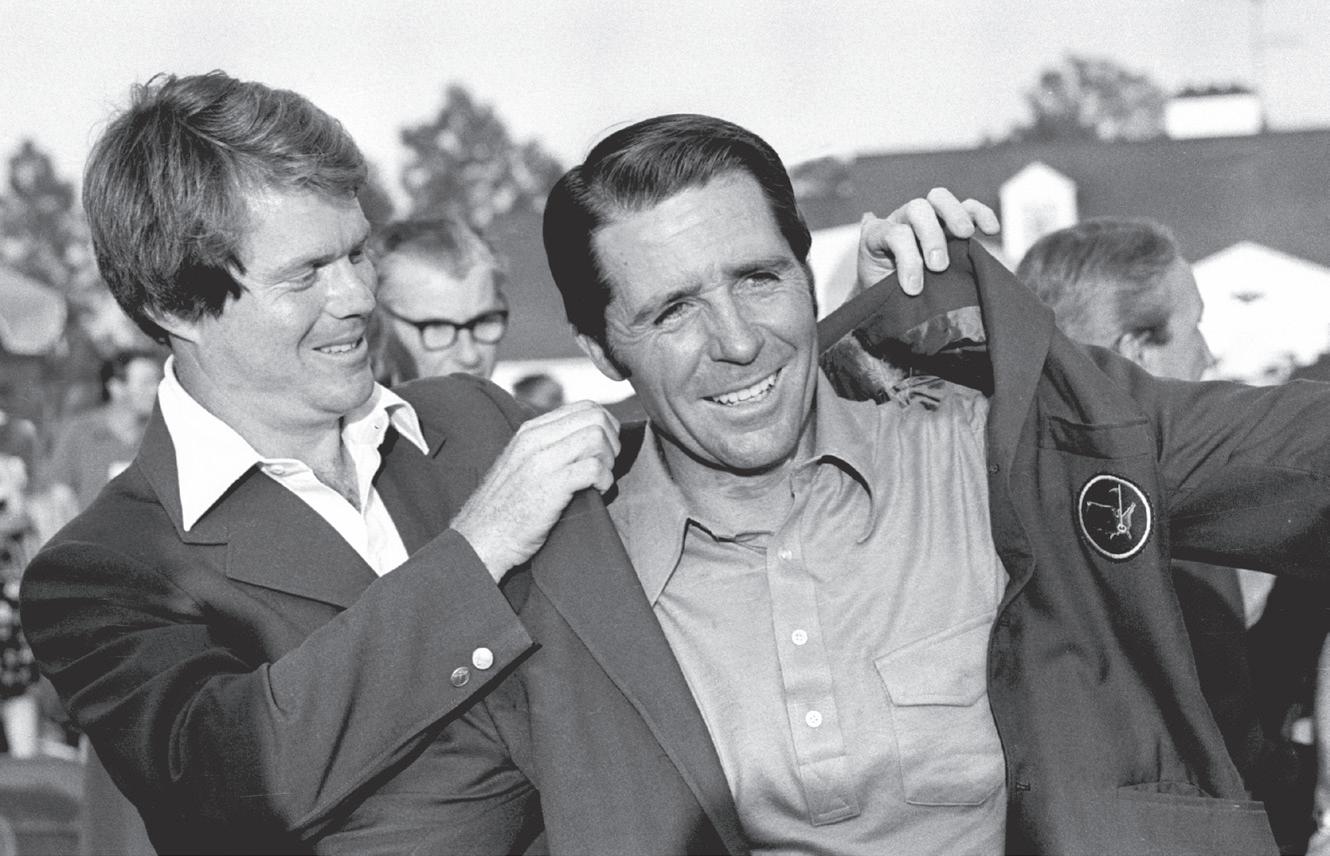
All factors favored Lorena Ochoa to scoop the 2006 Chevron Championship, starting with an incredible round of 62 on Thursday. However, things took a twist on Sunday, with the Mexican dropping four shots in five holes and paving the way for Karrie Webb, Natalie Gulbis, and Michelle Wie. Webb started the day seven shots behind, but her eagle on the 18th led to a dramatic playoff
with Ochoa, with the Aussie emerging victorious in sudden death.
Any experienced player will tell you that a bad start or a weak round doesn’t necessarily spell doom to your chances of winning. The ability to remain calm under pressure and keep hope separates the ordinary from the greats. These champions seemed to be in dire situations but against all odds marched on with courage to write their names in the history books. ■

For any golfer, maintaining peak performance on the course requires precision, focus, and endurance. Every swing, putt, and drive demands full control of your body and mind. But what if your breathing is working against you, making it harder to walk the course, swing smoothly, or concentrate on the next shot? You might be dealing with more than just a bad round—eosinophilic asthma could be the underlying issue.
Eosinophilic asthma, a specific kind of asthma, is caused by high levels of eosinophils, a type of white blood cell in the body. Approximately 4 out of 5 adults with severe asthma may have eosinophilic asthma.* If you’re skipping activities, using your rescue medication more than 2 times per week, or taking 2 or more courses of oral steroids per year to control your asthma, it might be time to talk to your doctor and ask about eosinophilic asthma.
Eosinophilic asthma may require a different treatment. The sooner you get a diagnosis the sooner you can address your condition which may help you get on track. A blood test can help determine if you have eosinophilic asthma. Take control of your game. Take control of your health. Get tested for eosinophilic asthma. Stay focused from the first swing to last putt.
For more information, visit www.asthmabehavingbadly.com
*A registry study considered ~84% of severe asthma patients most likely to have eosinophilic asthma based on several factors including increased blood eosinophils levels (≥150 cells/μL).
©2024 AstraZeneca.

The ultimate score in golf is 59. Has anyone, though, ever come close? These golf outings rank lowest in significant historical events
By Cyrus Kahoro

Furyk poses with his scorecard after shooting a 59 in the second round of the 2013 BMW Championship.
Bryson DeChambeau celebrates a final-round 58 at LIV Golf Greenbrier.
Professional golfers make the sport look easy, effortlessly posting rounds of sixties in most of their 18-hole rounds. In some rare cases, players have taken their prowess a notch higher and posted rounds in the fifties, making history. As of writing, only four golfers boast a score of 58 in competitive 18-hole rounds, with 20 players tying for a second-best round of 59. It’s worth noting that some others have scored better in unofficial rounds, with the lowest recognized score by the Guinness World Records being a round of 55 by Rhein Gibson at the River Oaks Golf Club in May 2012.
Ryo Ishikawa – 58
Japan’s Ryo Ishikawa was the first player to score 58 in a professional 18-hole round. The fete happened during The Crowns 2010 event on the Japan Golf Tour, where the then 18-year-old shot a 12-under 58 in the final round to win the tournament by five shots. Ishikawa’s round consisted of 12 birdies and six pars, instantly securing his place in history.
Jim Furyk – 58
Jim Furyk boasts two records on this list, starting with a score of 59 at the 2013 BMW Championship. The American would do one better at the 2016 Travelers Championship, where he shot one eagle and ten birdies to card a fourth round 58. Despite his best efforts, Furyk didn’t manage to win the tournament but jumped 65 places up the rankings from 70th to 5th.
Kim Seong-Hyeon – 58
Kim Seong-Hyeon was the third player to attain a career 18-hole round of 58 during the 2021 Golf Partner Pro-Am Tournament on the Japan Golf Tour. Despite his spectacular final-round display,

the South Korean finished tied for 11th. Nonetheless, Kim found his breakthrough later that year when he won the Japan PGA Championship by a single shot.
Bryson DeChambeau – 58
Bryson DeChambeau is LIV Golf League’s first entrant on the list, having posted a 58 at The Greenbrier tournament held at the Old White Golf Course in August 2023. He followed up an impressive 61 in the second round with a historic 58 in the third final round, where
he shot 13 birdies and a bogey. As a result, DeChambeau won the event and earned a hefty paycheck of $4 million.
American Al Geiberger was the first player to record a round of 59 during the PGA TOUR’s 1977 Danny Thomas Memphis Classic at the Colonial Country Club in Cordova, Tennessee. The World Golf Hall of Fame member’s historic bogey-free round consisted of an eagle, 11 birdies, six pars, and 23 putts.
Brandt Snedeker posted a 59 in the opening round on his way to winning the 2018 Wyndham Championship.



Annika Sörenstam – 59
Annika Sörenstam is undoubtedly one of the most iconic gures in the women’s game and rightly deserves a spot as the only female entrant on the list. The Swede became the only female player to shoot 59 in competition during the LPGA Tour’s 2001 Standard Register PING tournament.
Justin Thomas – 59
During the PGA TOUR’s 2017 Sony Open, two-time PGA Championship champion Justin Thomas shot a 59 in the rst round. The American had just won the SBS Tournament of Champions a week earlier and his ne form continued into this event. Thomas opened and nished the historic round with eagles, setting various tournament and PGA TOUR records.
Brandt Snedeker – 59
2012 FedExCup champion Brandt Snedeker became only the tenth player in PGA TOUR history to shoot 59 in the 2018 Wyndham Championship at the Sedge eld Country Club. Snedeker achieved the fete during his rst round and won the tournament with a 21-under score of 259.
Scottie Scheffl er – 59
Current World No. 1 Scottie Sche er earned his owers among the lowest scorers in 2020 during The Northern Trust tournament on the PGA TOUR. The New Jersey native shot a 12-under 59 in the second round in an explosive showdown which featured 12 birdies. Nonetheless, Sche er’s poor performance in the rst and nal rounds meant that he could only settle for a T4 nish.
Joaquín Niemann – 59
Joaquín Niemann kicked o 2024 on an impressive note a er scooping the LIV Golf Mayakoba trophy in February. During the Mexico event, the Chilean shot a 12-under 59 in the rst round, which Data Golf quotes as the third-best score in true strokes gained since 2004. Niemann then edged o Sergio García in a playo to li his rst individual LIV Golf title.
A number of others have achieved rounds of 59 in professional competitions including the likes of David Duval, Peter Karmis, Jorge Campillo, Paul Goydos, Joaquin Niemann, and Adam Hadwin. Although winning trophies is o en considered the ultimate high in golf, breaking the record for the lowest score in a round makes you one of the best to do it. ■





Discover the golf handicaps of your favorite celebrities and athletes, and see how they compare on the course
By Cyrus Kahoro



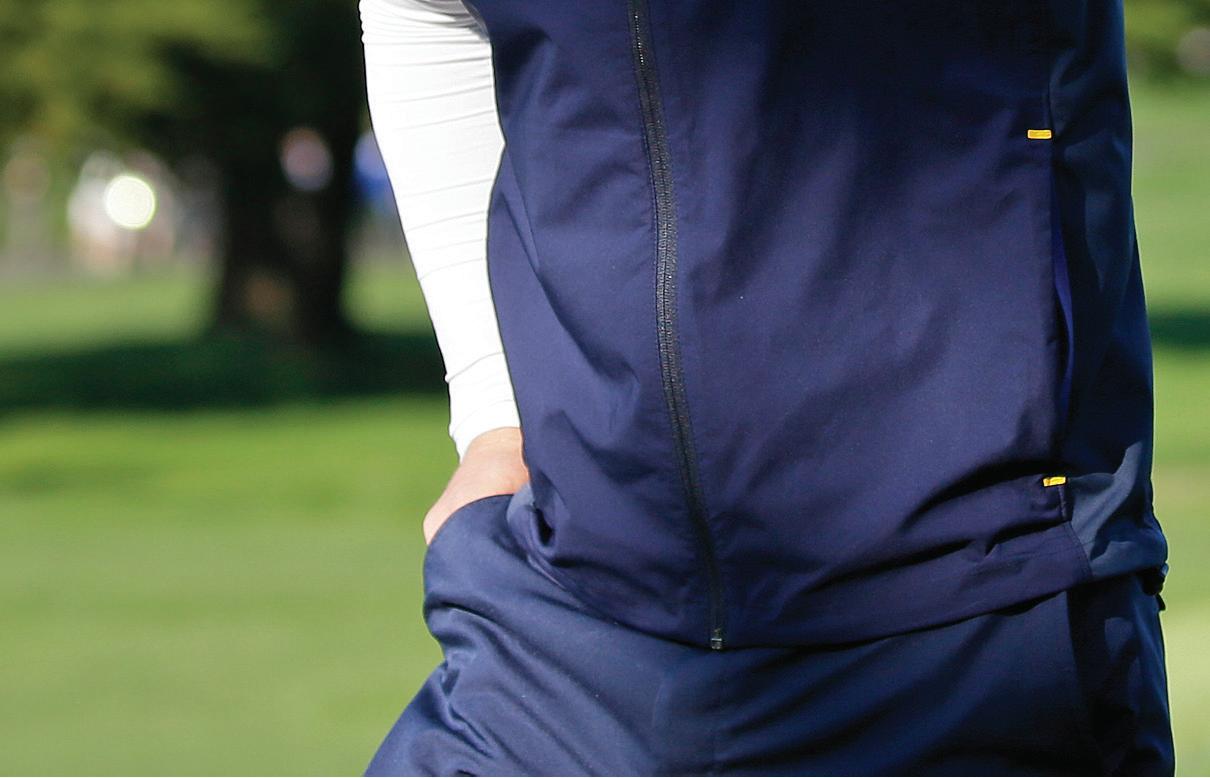
Many celebrities, including actors, musicians, athletes, business moguls, and even presidents, enjoy teeing it o occasionally. Nonetheless, each one has a di erent level of talent, with some boasting impressive handicaps that could almost see them join professional tours. Celebrities like Justin Timberlake and Michael Jordan have invested heavily in golf, which shows their deep passion for the game and not just some pastime activity they use to unwind. We unearth the handicaps of some notable gures.




Justin Timberlake – 4.3
Justin Timberlake is the ultimate jack of all trades. When he is not busy belting out enchanting vocals or performing fabulous dance moves, the Sexyback hitmaker acts, seals business deals, or demonstrates his talent on the greens. He is a talented golfer with an impressive handicap of 4.3, and you will o en nd him teeing it o with professional golfers and other celebrity friends on his own course.

Michael Jordan – 1.9 NBA legend Michael Jordan is a well-known golf addict who o en participates in celebrity tournaments and owns an exclusive personal course, the Grove XXIII, in Florida. Jordan is a highly competitive athlete, which extends to golf, with a low handicap of 1.9.He won his members’ tournament in 2021 alongside Keegan Bradley, and even pro players dread ever facing o against him.

Tom Brady – 8
Legendary New England Patriots quarterback Tom Brady is also an avid golfer, boasting an 8-handicap. The seven-time Super Bowl champion plays regularly and participates in televised golf challenges, the most recent of which was the 2024 Pebble Beach Pro-Am, where he teed o with Keegan Bradley.

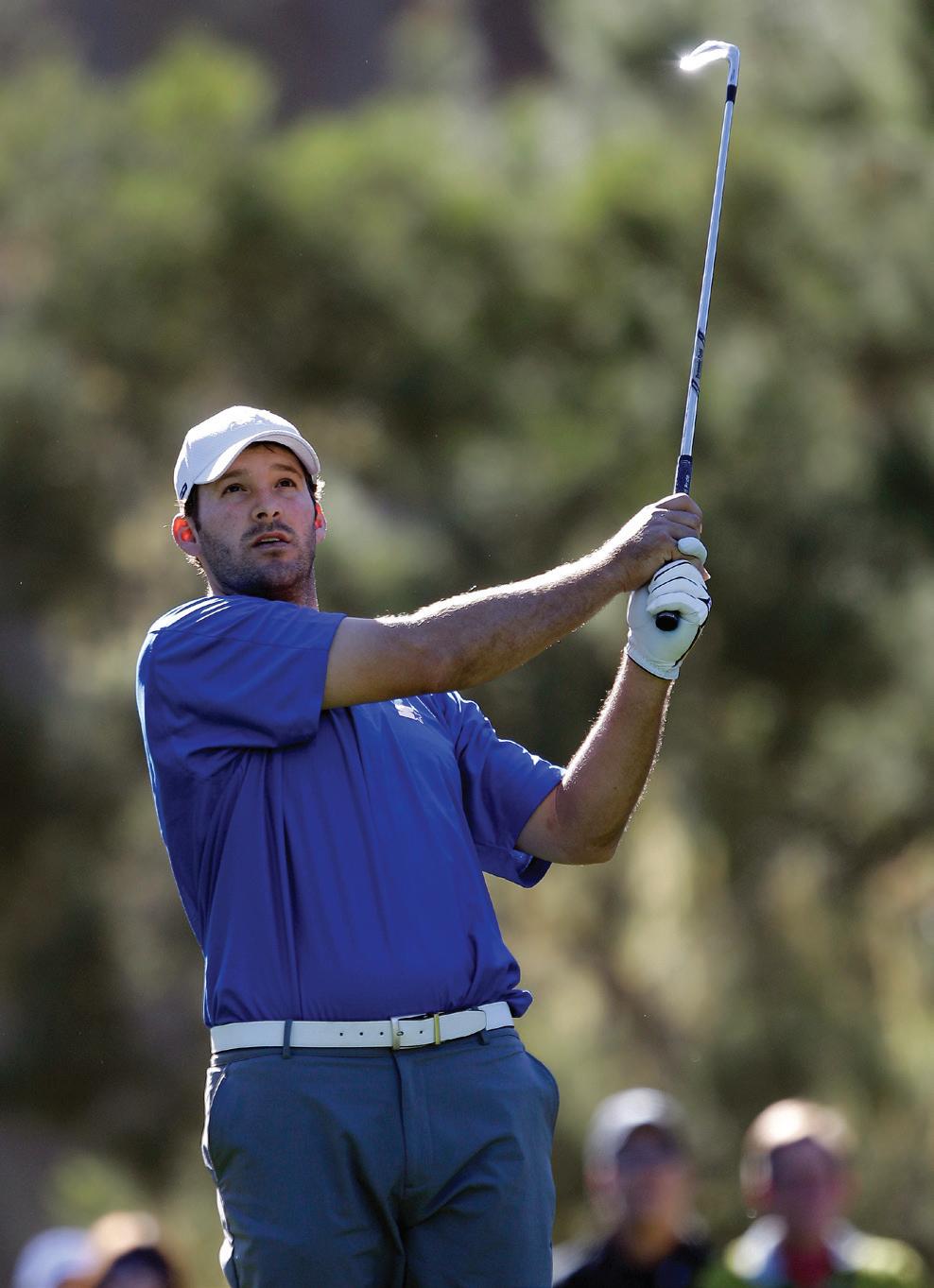
Former Dallas Cowboys quarterback Tony Romo is a highly skilled golfer, evidenced by his three victories at the American Century Championship in 2018, 2019, and 2022. The current broadcaster boasts a handicap of 1.6 but constantly outperforms himself and shoots below par. Romo has recorded a seamless transition from the gridiron to the golf course and has even attempted to qualify for the U.S. Open on multiple occasions.
Steph Curry – 1.3 NBA superstar Steph Curry is quite a familiar face in golfing circles. He is almost as good on the golf course as on the basketball court. Curry frequently shows off his near-scratch 1.3 handicap in celebrity and pro-am events, registering wins such as clinching the 2023 American Century Championship.
Samuel L. Jackson is the highest-grossing actor of all time and an unmatched cultural icon. Besides all his success, the Pulp Fiction star’s favorite pastime activity is golf. He has an impressive handicap of 6.9 and has participated in numerous charity events and pro-ams. Jackson reportedly has a clause in his movie contracts that the filmmaker must allow him to play golf at least twice weekly wherever he’s filming.

Bill Murray – 7
Bill Murray, known for his comedic roles in films like Lost in Translation and Caddyshack, takes his golf seriously. With a strong 7-handicap, the legendary comedian regularly participates in the AT&T Pebble Beach Pro-Am celebrity tournaments. Murray’s deep connection to the sport is evident in his book, Cinderella Story: My Life in Golf, which explores how golf has impacted his life.

Legendary rock star Alice Cooper has one of the best feelgood stories of how golf can positively impact lives. The avid golfer plays off a handicap of 5 and credits golf with saving his life and helping him recover from alcoholism. The 77-year-old superstar even wrote a book called “Golf Monster” detailing how the sport helped him with his sobriety after decades of addiction.


Hockey
has a very close relationship with golf. He has a respectable 10-handicap and is also the father-in-law of Masters winner Dustin Johnson. Gretzky enjoys playing at celebrity events and has participated in the AT&T Pebble Beach Pro-Am numerous times, often turning to Johnson or his good friend Mike Weir for tips.
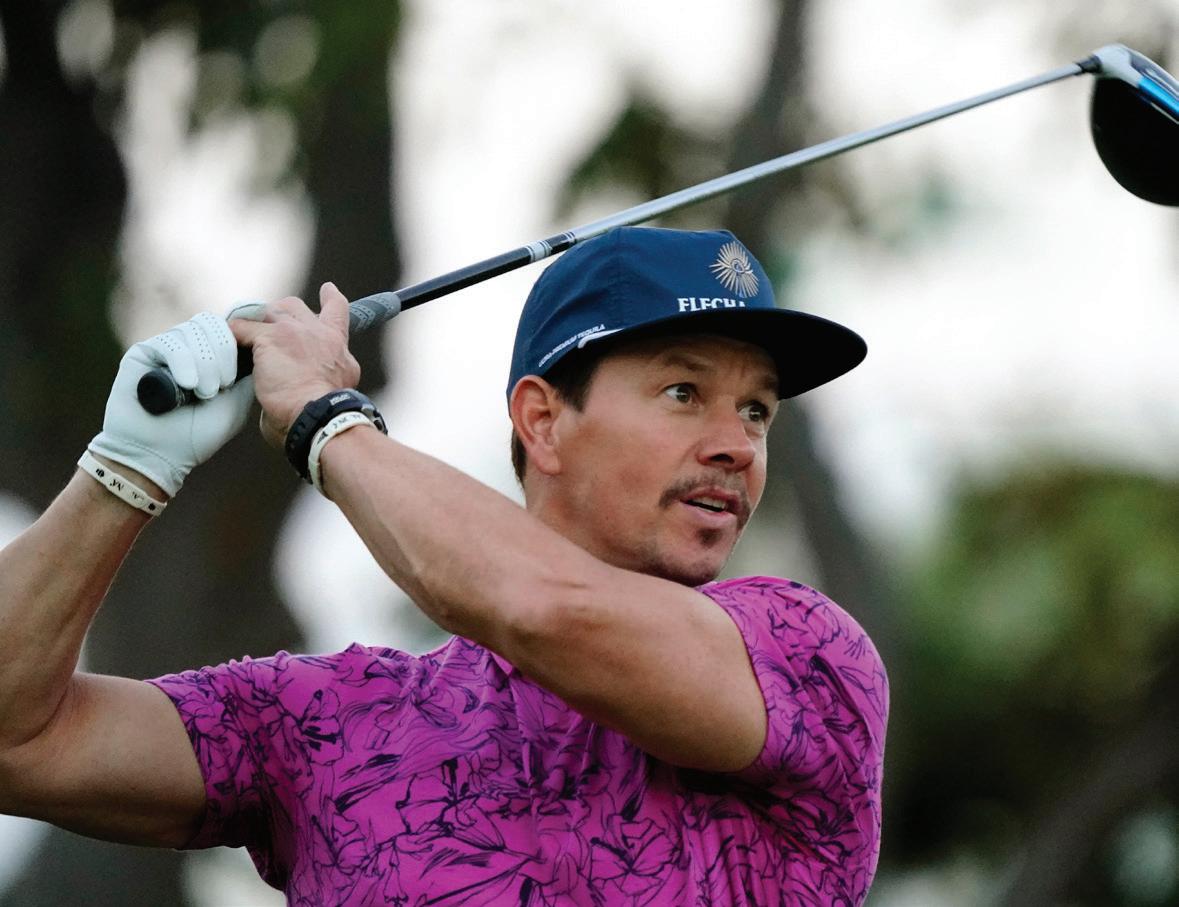
Most people know Mark Wahlberg from thrilling movies such as Shooter and Four Brothers. When he’s not shooting a new film, he’s an avid fitness and golf enthusiast who often hits the course early in the morning. The actor and producer has a respectable single-digit handicap of 8.7. He has even furthered his golf passion by building a practice golf area and driving range in his backyard, where he enjoys a few holes with his kids. ■
Golf is not only enjoyed by millions, but it also represents a significant U.S. industry that brings considerable value to local communities
By Michael LoRé
It’s 4 a.m. While the sun is barely rising along the East Coast and has yet to shine throughout the Greater Phoenix area as it does some 300 days annually, that hasn’t deterred fans from clamoring outside the gates of the Waste Management Phoenix Open in the dark in the hopes of securing a coveted first-come, first-serve spot in the bleachers surrounding the 16th green at TPC Scottsdale.
The tournament’s energetic, partylike atmosphere, headlined by No.
16 with its colosseum-like stadium seating, is what separates the WM Phoenix Open from every other event on the PGA TOUR, and potentially across sports.
As the final putt on Sunday drops just ahead of kickoff for the Super Bowl each February, the WM Phoenix Open is more than a seven-day party in Phoenix.
The event, which relocated to TPC Scottsdale’s Stadium Course in 1987, generates $453.7 million in annual
economic impact into Arizona’s economy and an annual employment impact of 4,290 jobs, according to a 2022 Arizona State University study. Not only that, but the event has resulted in $208 million in charitable impact, including a record $17.5 million from this year’s tournament.
“While many people see the WM Phoenix Open with the stands full on 16, what we see is we just did a check presentation to an organization in Phoenix (in August),” said Chance
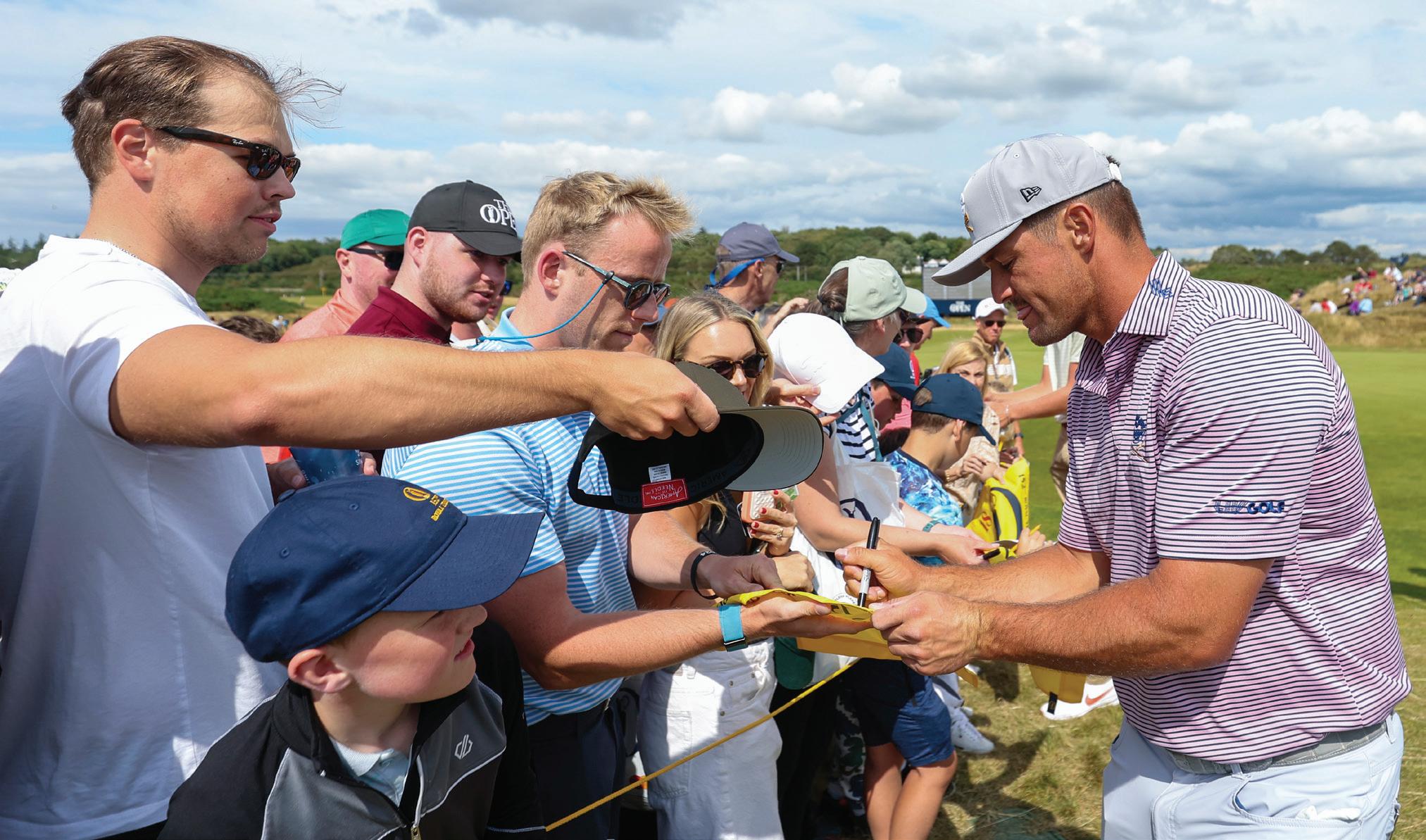
Local fans eagerly hope to get a glimpse of their favorite players and secure their autographs.
Cozby, Executive Director of The Thunderbirds, the civic organization behind the WM Phoenix Open. “And we do that on a regular basis.”
Not only do local businesses bene t from the popular PGA TOUR event that attracted a tournamentrecord 719,179 patrons in 2018, but The Thunderbirds and WM Phoenix Open utilize tournament proceeds to support multiple junior golf events, Special Olympics Arizona, and other local events throughout the year.
“It’s really a full-circle event, which is like most events on the PGA TOUR,” Cozby said. “Golf in general and the PGA TOUR is an unbelievable charitable organization and gives us a platform to do what we do.”
A Commitment to Community Phoenix isn’t the only community bene tting from hosting a PGA TOUR event. The Zurich Classic of New Orleans has helped its local community rebuild time and time again a er Hurricane Katrina (2005), Hurricane Gustav (2008), Hurricane Isaac (2012), and Hurricane Ida (2021) ravaged the Bayou.
Since Zurich Insurance Group became title sponsor in 2005, the tournament has generated more than $645 million in economic activity for the New Orleans community, while raising more than $30 million for charitable organizations in conjunction with the Fore!Kids Foundation.
With 93 annual not-for-pro t tournaments between the PGA TOUR, PGA TOUR Champions, and Korn Ferry Tour supported by 100,000 annual volunteers, the TOUR has generated $3.93 billion in charitable donations to date. According to the American Golf Industry Coalition, PGA TOUR events bring $4.3 billion in economic impact to the 35 states that host their events each year.
“We are not the circus. We don’t come to town, set up these huge, elaborate hospitality structures, take them down, leave and go onto the next city,” said Marsha Oliver, PGA TOUR Senior Vice President of Community and Public Engagement. “Our
LIV offer opportunities designed to give young kids a first hand experience of the sport.


tournament teams live, work, raise their families and host world-class events within those communities. It’s where they are. Because of that, it gives us the bene t and opportunity to be part of the community.
“When we talk about pride, we’re not just prideful for one week, we’re prideful year-round because that is where we live. The only way to be able to ensure we’re making the level of impact that we seek to make is to be part of the community.”
PGA TOUR events purposely are a re ection of local culture, food, music, art and community that not only showcase the best of each host locale, but provide an array of o erings to appeal to various groups of patrons. Unsurprisingly, that means the patron experience at the FedEx St. Jude Championship in Memphis will be di erent than the Travelers Championship in Cromwell, Conn.
“Our tournaments are re ections of the communities where they are,” Oliver said. “That’s very much by design and by intention.”
With the “formal” beginning of the modern-day PGA TOUR dating back to 1968, the TOUR is a welloiled machine as it comes to hosting events throughout North America.
Any potential community concerns or negative feedback from an event have pretty much been ironed out.
On the other hand, upstart LIV Golf, which launched in 2022, is laying its foundation for positive impact and sustainability from Miami to Adelaide. Collaborating with local non-pro t organizations and NGOs at each event, LIV provides opportunities for youth to engage with and deepen their understanding of golf. During LIV Golf Nashville in June, for example, the league colluded with local non-pro ts including Black Lemonade, Back eld in Motion, and Big Brothers Big Sisters of Middle Tennessee for a golf clinic led by LIV golfers and a nature walk experience for local youth.
In 2023, LIV Golf’s eight U.S. events generated around $258 million in combined economic impact for U.S. communities.
“Impact and sustainability is at the heart of LIV Golf’s mission,” said Jake Jones, LIV Golf Senior Vice President of Impact and Sustainability. “We believe that golf has incredible potential to create signi cant positive social and environmental change, and as a global sports league, we have a duty to give back to communities around the world.” ■




It was not long ago the PGA TOUR, which once banned sports betting ads, listed 5 betting companies as partners and joined the Coalition for Responsible Sports Betting Advertising in March
By Michael LoRé


The U.S. sports betting gold rush is over. Shortly a er the Supreme Court’s repeal of the Professional and Amateur Sports Protection Act (PASPA) in 2018, organizations couldn’t integrate igaming and sports betting into broadcasts, websites, apps, and content fast enough as a way to further engage current fans while appealing to new and casual ones.
Yet much like any golf shot, the PGA TOUR relied on a meticulous approach to betting, waiting until July 2020 to announce its rst o cial betting partner.
Four years later, the focus is as much about auditing the existing opportunity as it is looking ahead to the future of betting in golf.
“Phase 1 of sports betting in the


United States, I think, is over,” said Scott War eld, PGA TOUR Vice President of Gaming. “Now it’s, what does Phase 2 look like and how do we reorient?
“It’s de nitely a look-in-the-mirror moment to say, ‘OK, we’ve learned a ton. We have a lot of good trends and data showing there’s something here. Now, how do we market it better? How do we continue to protect the game?’ None of those pieces are coming o the playbook, we’re just making tweaks to them and hopefully ne-tuning it for the next 3-5 years.”
While other major sports leagues across North America had a signi cant existing, albeit illegal, betting culture in place prior to the repeal of PASPA, the PGA TOUR had to brainstorm ways to engage fans beyond outright betting opportunities placed before the start of a tournament. With more than 140 participants during a given event every week, not only were the chances of hitting a bet quite slim, but the bet-it-and-forget-it activity that existed didn’t maintain engagement throughout an entire tournament, especially if their golfer was out of contention come Sunday, or, even worse, cut a er Friday.
Strategic Partnerships Senior Director at FanDuel. “For golf speci cally, our product o ers consumers the opportunity to make every swing of the club matter more, regardless of the round number or leaderboard position of their favorite player.
“With an always-on approach, FanDuel o ers extensive wagering opportunities and ensures customers can be part of the critical moments of sporting events, especially on a Sunday a ernoon as the nal round builds to a crescendo.”

Introducing its rst electronic scoreboard system in 1983 that would lay the foundation for today’s ShotLink, the PGA TOUR had threeplus decades of data collection under its belt in preparation for the PASPA appeal. A er some tweaks and upgrades coupled with naming IMG Arena its O cial Data Distributor for media and betting purposes in September 2019, the PGA TOUR was o to the races the following year.
Currently working with six betting operators—Dra Kings, BetMGM, PointsBet, FanDuel, betPARX, and Bet365—the PGA Tour o ers fans a seemingly endless opportunity to engage with the sport through betting including outright winner, rst-round leader, head-to-head, closest to the pin, longest drive, and more.

The proof is in the data. Warfield estimates that nearly 80% of golf bets prior to the repeal of PASPA were outright (picking a pre-tournament winner), while today it’s nearly 50%.

“Sports betting engages fans on a deeper level compared to the general consumer,” said John Sheeran,
accounted for roughly 8% of all money bet on the PGA TOUR handle and is currently a top-3 state for total number of PGA TOUR bets placed and total number of users.
“It’s such a natural part of our sport,” War eld said. “It’s so ingrained in what this sport is that it’s now more about educating the core fans and casuals so that some of the same principles of playing can carry over to the viewing experience.
“That’s a built-in advantage that we just need to do a better job capitalizing on.”

The proof is in the data. War eld estimates that nearly 80% of golf bets prior to the repeal of PASPA were outright (picking a pre-tournament winner), while today it’s nearly 50%. According to the Tour, approximately 55% of all bets are made live, up from approximately 45% in 2022.
Despite the fractured state of pro golf following the launch of LIV Golf in 2022, sports betting is driving engagement and interest in the PGA TOUR. Not only has Golfbet, the Tour’s betting hub, seen an increase of 17,000 followers in 2024 and +800% engagements, but the estimated total PGA TOUR handle is up approximately 20% year-over-year.
Following the launch of legal online sports betting in North Carolina on March 11, the state has
The PGA TOUR certainly has had plenty of learnings since getting into the betting space in late 2020. A er initially outsourcing betting content through Action Network, the Tour brought everything in-house so it can drive the narrative and can amplify through its main social media handles.
The PGA TOUR has also made responsible gaming a priority, working in conjunction with the American Gaming Association and National Council for Problem Gambling; the Tour also joined the Coalition for Responsible Sports Betting Advertising in February. Working with U.S. Integrity and Genius Sports to monitor every single golf bet across all of its tournaments, the Tour is being proactive with ensuring the integrity of the game while other leagues have seen issues arise.
With sports betting live and legal in 38 states plus Washington, D.C., and active legislation in Missouri and Oklahoma, you can bet the industry continues to grow.

“Especially for folks like me who are in it every day, it feels like it’s been forever but when you pull back and look at it, we’re on the second or third hole and really positioning ourselves for what this will be in 2030, 2040 because that’s kind of the build we look at this space through,” War eld said. “ … I think it’s a bit of an in ection point for the industry to build on what we’ve created, but also make changes for things that may not be working.” ■




We delve into the sport’s cherished customs and the core values it upholds
By Cyrus Kahoro



First introduced in 1949, the awarding of the Green Jacket has become one of the most eminent symbols in the sport.

The handshake on the 18th green is a sign of respect between players.
Every keen golfer prides themselves in the centuriesold history of the sport, which makes it so unique. Although the game has transitioned a lot in its many years, some simple traditions, like handing out the Green Jacket to the winner of The Masters tournament, remain iconic and timeless. Each carries a special meaning, paying homage to the rich golf heritage passed down through generations of players and fans. But what are the most iconic traditions?
Green Jacket
The Masters is undoubtedly one of the most iconic events in golf history. First played in 1934, the tournament adopted the tradition of awarding winners with Green Jackets, with Sam Snead receiving the first in 1949. Now, it’s one of the most treasured accolades a golfer can own.
The Caddie’s Role
Every king needs a helper, and caddies play a highly significant role in a golfer’s life. They offer support, provide advice, and show friendship to players during rounds. Over the years, we have seen legendary caddie-player relationships, such as those between Tiger Woods and Steve Williams or Phil Mickelson and Jim “Bones” Mackay. The results these relationships produced are a true testament to the indispensable value of a caddy.
The Handshake on the 18th Green
It is customary for golfers to take off their hats or visors and shake hands after a round, regardless of the outcome. This tradition happens on the 18th green, truly embracing the spirit of sportsmanship and selling golf as the ultimate gentleman’s game, even in defeat. The gesture


signifies respect and friendship, key fundamentals to the game of golf.
Every golf enthusiast recognizes the tradition of Honorary Starters at the Masters, who hit the ceremonial first shots to open the tournament. The custom started in 1963 when Jock
Hutchison and Fred McLeod did the honors. In recent times, fans usually witness the Big Three - Arnold Palmer, Jack Nicklaus, and Gary Player, act as Honorary Starters.
The Old Course at St. Andrews rightfully deserves to be referred to as the birthplace of golf. The course is iconic in so many ways, for instance, due to its famed geographic spots like the Road Hole, Valley of Sin, and Swilcan Bridge. The layout is legendary, with outrageous undulations, odd angles, and quirky bounces, offering a fun, challenging experience on greens and fairways.
The biennial Ryder Cup stirs the passion and excitement of players and fans on a whole otherworldly level, unbeknownst to many tournaments. Team USA faces off with Team Europe in a reallive, heartfelt battle pitting the best in the sport against each other. The event features intense competition and passionate crowds, but sportsmanship and camaraderie prevail.
Winning the Masters has many perks, such as attending the Champions Dinner before the

event. Past winners come together for a meal hosted by the defending champion, who selects the menu each year to add a personal touch to this tradition.
The Open Championship is golf’s oldest major event. The winner receives the Claret Jug, a tradition dating back to 1872. Players compete to have the silver uniquely designed trophy in their cabinet, which is one of the most respectable accolades in golf.

Old Course at St. Andrews is the oldest and arguably most recognizable course in the world.
Although golf offers great entertainment to sports lovers, it’s also a game that embraces brotherhood and caring for the less fortunate in society. Many pro-am events focus on raising funds for various causes, such as hospitals and education. Pro golfers have also established various charities, such as the Nicklaus Children’s Health Care Foundation, which aims to provide families with world-class pediatric healthcare.
Just before the official Masters Tournament gets underway, a Par 3 Contest takes place on a ninehole course at Augusta National. The lighthearted event draws participation from players and their families, allowing them to relax and feel the warmth of family before the intensity of tournament play begins.
Regardless of the pinnacles you reach, always remember where you came from. Traditions connect players and fans to the sport’s rich history and values and contribute to the enduring appeal. After all, a tree is as good as its roots. ■























Explore various golf superstitions, including famous players’ rituals and common practices among enthusiasts

Golf superstitions have been a part of the sport for generations, influencing players from amateurs to professionals. These beliefs and rituals range from lucky charms to specific behaviors on the course, all aimed at improving performance or warding off bad luck. Many golfers rely on these superstitions to boost their confidence and maintain focus during the game.
We examine the significance of red shirts, lucky numbers, and coin superstitions as well as look at ball-related beliefs, rituals on the green, and how these traditions have shaped the sport’s culture.
Tiger Woods’ Famous Superstition
Tiger Woods’ iconic red shirt on Sundays has become synonymous with his career. The tradition started with his mother, who believed red was his power color due to his Capricorn zodiac sign. Woods began wearing red during junior golf tournaments and continued the practice through college at Stanford, where red was the school color. The superstition stuck, and he has worn red for the final round of nearly every professional tournament since. The color red in golf superstitions is associated with strength, passion, and dominance.
Woods has donned a red shirt on the last day in almost every tournament since 1997.
Many believe it gives Woods a psychological edge, intimidating opponents and boosting his own confidence. This simple yet powerful superstition has become an integral part of Woods’ legendary status in the sport.
Many golfers have a strong belief in the power of numbers and coins to bring good luck on the course. Jack Nicklaus, one of the most successful players in the history of the sport, always carried exactly three coins in his pocket during play. This superstition seemed to have an impact on his performance, contributing to his 18 major championship victories. Similarly, Tom Weiskopf, the 1973 Open Championship winner, insisted on having three coins in his pocket. Some players, like John Cook, mark their golf balls with quarters from states where they’ve played well in tournaments. Fred Funk has a unique ritual of flipping a coin before placing it on the green to mark his ball. These pocket items and coin superstitions have become an integral part of many famous golfers’ routines, reflecting the psychological importance of lucky charms in the sport.
Golf superstitions extend to the very heart of the game: the ball itself. Many players have specific beliefs about ball numbers and their impact on performance. Ben Crenshaw, for instance, only used balls numbered one through four, believing this would help keep his score low. Some golfers refuse to use balls numbered higher than four, adhering to the “low number ball equals low score” mentality. Jack Nicklaus always used the number three on his golf balls during major championships, considering it lucky. Another common superstition involves found balls. Many players believe that using a ball found during a round brings bad luck, as it may still carry the negative energy from its previous

owner. Some even suggest waiting 24 hours before using a found ball to allow the bad luck to dissipate.
Over the years, some players have had unique superstitions and rituals on the putting green. Ernie Els, for example, has a specific ball marker routine. Before each putt, he carefully aligns his marker with the manufacturer’s name facing the hole, believing it brings good luck. Paul Azinger marked his ball with a penny, ensuring Abraham Lincoln’s head points towards the hole. Fred Funk flips a coin before marking his ball, placing it heads-up or tails-up based on the result. Some avoid stepping on the edge where the fairway meets the green, fearing bad luck. These rituals highlight the psychological importance of routines in golf, helping players maintain focus and confidence during crucial moments on the green.
Golf superstitions have a significant impact on the sport, shaping
players’ mental game and routines. From Tiger Woods’ iconic red shirt to the belief in lucky numbers and coins, these rituals provide a sense of control and confidence in a game often influenced by chance. The widespread adoption of these practices, from amateurs to professionals, highlights their psychological importance in golf. These superstitions serve as mental anchors, helping players stay focused and calm under pressure. They are more than just quirky habits; they’re an essential part of many players’ approaches to the game. These practices have become ingrained in golf culture. While their actual effect on performance may be debatable, their role in boosting player confidence and maintaining mental focus is undeniable. As long as golf remains a sport where mental strength is just as crucial as physical skill, these superstitions will likely continue to play a key role in many years to come. ■

There are numerous ways to play instead of the standard match play or 18-hole round. We list some of the more unique formats
By Cyrus Kahoro
Do you want to avoid regular match play or the bog-standard 18-hole round and spice things up? You’ll be pleased to find that golf is everything but boring. The game has many opportunities, like a pack of shuffled cards and hundreds of fun formats to liven up your next group golf trip. Any teacher will also tell you that students learn faster when the subject is fun, so mixing things up on the course from time to time might be fruitful for your gameplay.
Bingo, Bango, Bongo
Bingo, Bango, Bongo is a points-based game for two, three, or four players,
with three points for grabs on every hole. The first point (Bingo) goes to the golfer who gets their ball onto the green first, while the second point (Bango) is for the one with the ball closest to the hole after all balls are on the green. The third point (Bongo) is for whoever sinks the putt first. The order of play is such that the furthest player from the hole plays first.
Most courses globally favor the Texas Scramble format due to its enjoyability, quick play, and ability to accommodate all levels of golfers. The game involves two, three, or four
players. It starts with each player teeing off, and then all players decide which drive is the best. Afterwards, the other players pick up their balls, and all golfers play from the chosen best shot. The players then repeat the process until holing out.
Stringball is a fun, tactical, and easy-to-understand game every golfer should try. For every shot, you receive a foot of string and a little pair of scissors instead of a handicap. You may use your string to relocate your ball to a more advantageous location, but you must first measure the
distance you travel before deducting that amount from your allowance. You can move your ball in any direction and as far as you desire if you have any more string to utilize. The string will rescue you if the ball gets stuck in a di cult bunker or other danger!
If you want a perfect friendly golf outing, try this format, which has its roots in The Nassau Country Club on Long Island. It involves playing a game for the front nine holes, another for the back nine, and an overall game. You have three options when choosing which game to play: Match Play, Stableford, or Strokeplay. The game o ers ample opportunities to recover from bad holes, and whoever wins gets all the bragging rights.



Also known as Alternate Shot, Foursomes is a format in which one player concentrates on all evennumbered holes and the other tees o on the odd-numbered ones. You then rotate swings until you complete the hole. This format, following standard match-play rules, is not just about teamwork but also about strategy. Players must adapt to each other’s playing styles, making every shot strategic.
In this format, players agree on a certain amount of money or points for a hole, referred to as a “skin.” The golfer who wins the hole carries the skin, but if there is no outright winner, the skin carries over to the next hole. This format is super fun because it can lead to high stakes on the nal holes when you carry over skins, and every hole also o ers a fresh start.



which they agree on the best shot, and then golfers take the second shot from that spot. The only di erence is that whereas in Scramble, players proceed with one ball a er selecting the best shot, golfers advance with their own balls a er the chosen spot to the hole in Shambles. The winner is the player with the best score among the team members. Shambles provides more scoring opportunities by combining the best aspects of scramble and individual play.
This fun format involves three real players, and one imaginary player called the “ghost.” The ghost plays o scratch and gives shots to every other swinger in the group. One golfer is chosen to play with the ghost, and since the imaginary player makes par on every hole, it’s best to pair them with the high handicapper in the group. Ghost is a fun game for high handicappers to t in when playing with low handicappers.

This is a sign for you to try the 6-6-6 format and infuse some excitement into your golf game. Choose from three alternative forms to play across three lots of six holes, for a total of eighteen holes, in this game, which is usually played in couples. The


Shambles is similar to Texas Scramble in that players must each tee o , a er



following forms are a sample of ones that could be used:
Each player uses their own ball in the best ball scenario, and the card displays the best score. A er each player tees o in a scramble, the score is applied to the card based on who made the better shot each time until the hole is completed. In an alternate shot, each player takes a turn starting at the rst tee and complete the hole in turn by hitting the second shot. A game like this keeps you alert and attentive because you can spend a lot of time on the golf course - there will be eighteen holes.
With any luck, these formats will save you from becoming stuck in the same old patterns each week and lead you on a path of gol ng self-discovery. Each of these formats o ers a unique twist on the traditional game, enhancing the game with strategy, teamwork, and various fun elements. Whether you’re looking to foster friendship or introduce a competitive edge, these formats provide great alternatives to standard play. ■















ou’ve perfected your swing and practiced your short game, but you’re still not shooting the scores you want. The problem might be in your head. Golf is as much a mental game as it is a physical one, and if you’re not mentally prepared to tee o , you’ll never reach your potential on the course. As Jack Nickaus stated “the game of golf is 90% mental and 10% physical.”






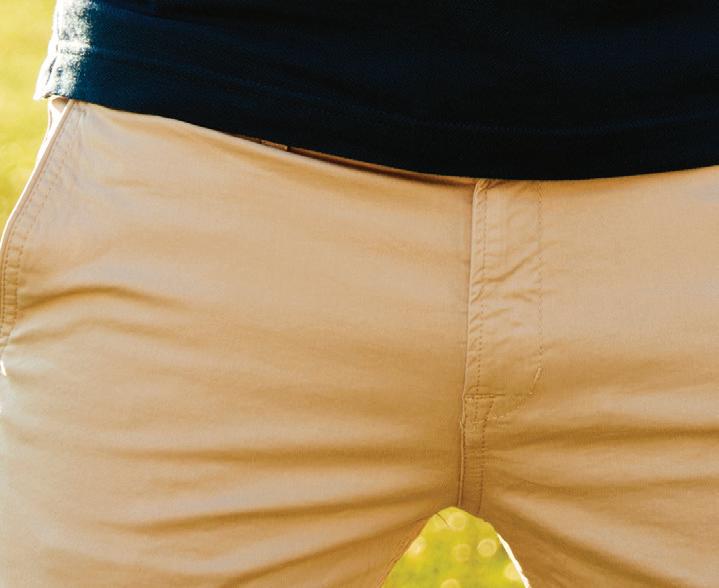


But there’s good news: with the right mindset, anyone can learn to play their best golf.
A course’s serene and calm atmosphere can be deceiving; many battles are fought and won or lost in mind before even taking a swing. We explore some mental tips and tricks to help you step up your game next time you’re out on the links. So whether you’ve been playing for years or are just starting, here are some helpful pointers!






Golf is considered a mental game because you have to control your emotions and stay calm while playing. Many things can go wrong during a round of golf, such as spending too much time looking for a lost ball. It requires focus and concentration. You must stay in the present moment and not think about past shots or future outcomes. If you start thinking about what could happen, you will likely begin making mistakes.

The mental game is important because it helps control your emotions and stay focused on the task at hand. When you can focus on what you’re doing and remain calm, you’re more likely to make good decisions and play your best golf.



Some of the most common mental challenges that golfers face are: dealing with distractions, handling di cult shots, managing emotions, staying positive, and controlling thoughts. Practicing these skills will help you stay in control during competition and improve your performance.
The mental game of golf comprises three components: focus,

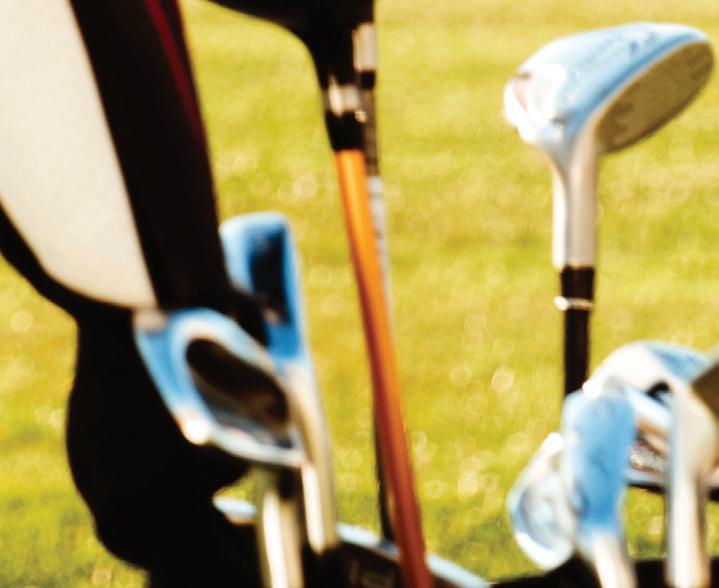
commitment, and con dence. To improve your game, it’s important to work on all three aspects. For example, you can improve your focus by practicing visualization exercises or working with a mental coach. Commitment is key to sticking with your practice routine and persevering when things get tough. Finally, con dence comes from believing in yourself and your ability to execute the shots you need to make. By focusing on all three components, you can take your golf game to the next level.

great time. You’ll start to train your brain to handle stressful situations better and stay calm under pressure by doing this regularly.
As with any skill, developing a mental golf game requires practice. First, nd a quiet place where you can concentrate without distractions. Then, start by picturing yourself playing your best round ever. See yourself making all the shots and sinking all the putts. Next, focus on speci c areas of your game that need improvement.


When you’re not playing golf, it’s good to practice your mental game in other areas of your life. One way to do this is by focusing on your breathing. When feeling stressed or anxious, consciously deep breathe and focus on lling your lungs, and this will help you calm down and focus on the present moment. In addition, visualization can also be a powerful tool for practicing your mental game o the course.
Picture yourself playing a perfect round of golf in your mind. The weather is serene, you’re hitting every shot perfectly, and you’re having a


If you’re having trouble with your swing, imagine yourself making a perfect swing every time. Finally, practice these same visualization techniques in real-life situations. When you nd yourself under pressure on the golf course, close your eyes and picture yourself playing perfectly. The more you practice, the better your mental game will become.

When playing golf, it’s important to focus on what you’re doing to stay in control. Here are a few tips to help you stay focused and overcome any nerves:




◆ Golf is a game that people of all ages and abilities can enjoy, so don’t get discouraged if you’re not playing as well as you’d like. There are plenty of other games that can be just as much fun.
◆ Focus on your own game and not on what the other players are doing. This will only distract you and make it more challenging to stay positive.
◆ Try to take some deep breaths and relax before each shot. This will help you stay calm and focused, which is key for playing well.
◆ Remember that mistakes are part of the game, and everyone makes them.
◆ Picture yourself hitting the ball perfectly. Focusing on the positive will help keep you calm and in control.
◆ Stay patient. Don’t try to force things or take unnecessary risks. Just relax and let the game come to you.
You can do a few things to stay focused and overcome nerves when playing golf. Try to focus on your
breathing and take deep breaths. This will help to calm your mind and clear your head. Remind yourself that everyone makes mistakes and that you are not perfect. This will help you relax and not put too much pressure on yourself. In the end, try to focus on the task at hand and not the game’s outcome. This will help you stay in the moment and avoid getting overwhelmed by the situation.
When playing golf, stay focused by concentrating on your swing and nothing else. For example, when addressing the ball, focus on keeping your head still and your eyes down the fairway. Take a practice swing and focus on making a smooth motion.
During the actual shot, keep your focus on the target. Don’t be concerned about what other players are doing or whether you’re going to make the shot or not. Just concentrate on making a good swing and letting the ball fly to where you aimed it. If you do this, you’ll be surprised at how well you can play under pressure.
Here are some common mistakes that golfers make:
◆ Not staying in the present moment. It’s easy to get caught up in thinking about past shots or worrying about future ones. But the only shot that matters is the one you’re hitting right now. Stay focused on the present and trust your swing.
◆ Trying to control everything. You can’t control how the ball will travel, but you can control your attitude and focus. Accept that there will be good and bad shots, and don’t let them shake your confidence.
◆ Overthinking your swing mechanics. Sometimes golfers get so caught up in trying.
The mental game of golf is important because it can help you stay focused and positive during a round, leading to better results. You can develop your own mental game by practicing focus, composure, and confidence off the course. If you make mistakes in the mental game, don’t worry, there are ways to overcome them and continue playing your best golf. Remember to keep a positive attitude throughout your round and have fun! ■

By Cyrus Kahoro

If you are a diehard golfer but don’t possess the athletic disposition necessary to pursue a professional career as a player, you’ll be pleased to learn that there are numerous career pathways within the industry. One option you can pursue is becoming a PGA Professional. Pursuing this path entails obtaining the required education qualifications and relevant experience, and excelling in several exams overseen by the Professional Golfers’ Association (PGA). The process will require your dedicated effort for several years, but once you achieve PGA Membership at the end of training, many career opportunities will open up within the golf industry.
The PGA of America was founded in 1916 and is the main governing body for professional golfers in the U.S. The body consists of over 30,000 members and oversees the certification of PGA Professionals, equipping them to work in various roles such as management, research, marketing, administration, and coaching. The PGA of America covers over 41 regions across the

U.S. to ensure a seamless network of collaboration, community, and communication nationwide.
On the other hand, the PGA TOUR is a separate entity that split from the PGA of America in the late 1960s to organize professional golf tours for players, as opposed to club professionals. You therefore don’t need to be a PGA TOUR player to become a PGA Professional, although most golf enthusiasts aspire to reach this level. It’s worth noting that the PGA of America still collaborates with professional tours to conduct prestigious tournaments such as the PGA Championship, the Senior PGA Championship, and the Women’s PGA Championship.
Step-By-Step Guide
There are two primary pathways to attain PGA Membership:
◆ The PGA Golf Management University Program
◆ The PGA Professional Golf Management Program (PGA Associate Program)
The PGA Golf Management University Program
If you would love to earn a degree while becoming an expert in the
game and business of golf, the PGA Golf Management University Program is the way to go. The college degree program is accredited by The Professional Golfers’ Association of America (PGA) and curated for highly motivated, bright men and women who receive training on servicing all aspects of the golf industry.
The program runs for about four-and-one-half to five years, providing extensive classroom courses, internship experience, and player opportunities to aspiring PGA Professionals. Sixteen universities are accredited to offer the program across the U.S., awarding bachelor’s degrees in golf industry-compatible majors such as Hospitality Administration, Marketing, Recreation and Park Management, and Business Administration. Upon completion, graduates can apply for PGA Membership, with their skills currently attracting a 100% employment placement rate.
You can pursue the PGA Golf Management University Program in any of the following institutions, with each offering specific entrance requirements, curriculums, and financial structures:
◆ Campbell University
◆ Coastal Carolina University
◆ Eastern Kentucky University
◆ Ferris State University
◆ Florida Gulf Coast University
◆ Methodist University
◆ Mississippi State University
◆ New Mexico State University
◆ Penn State University
◆ Sam Houston State University
◆ University of Central Oklahoma
◆ University of Colorado
Colorado Springs
◆ University of Idaho
◆ University of Maryland
Eastern Shore
◆ University of Nebraska, Lincoln
◆ University of Nevada-Las Vegas
The PGA Professional Golf Management Program (PGA Associate Program)
It’s mandatory to become a registered Associate before completing the award-winning PGA Professional Golf Management (PGA PGM) Program that sets aspiring PGA Professionals on the path to becoming PGA Members and handling the People, the Business, and the Game. To enroll in the PGM Associate Program, you need to have a high school diploma or be aged 18 years and above with the equivalent of a high
school education.
Completing the PGM Associate Program entails meeting the belowlisted three milestones:
A background performed by HireRight is mandatory when registering or re-registering as an associate. The process involves an online screening session that you pay for at a reasonable cost. You must submit documentation to the PGA Membership Department if you have been convicted of a misdemeanor or felony to determine your eligibility for the program before proceeding.
There are four Qualifying Level courses - Introduction to the Rules of Golf, PGA Constitution, Introduction to the PGA PGM Program, and Career Enhancement. Applicants must review all these courses and complete accompanying quizzes.
The Playing Ability Test (PAT) requires individuals to complete one of the following within eight (8) years before registering into the PGA Professional Golf Management Program:
◆ Pass the 36-hole Playing Ability
Test. The 36-hole PAT requires you to achieve a 36-hole score within 15 shots of the course rating. The test is conducted in a day and statistics indicate that fewer than 20% of those taking the test pass, so you must prepare adequately.
◆ Shoot one 18-hole score in a PAT either equal to or less than the PAT target score for 18- holes, plus 5 strokes.
◆ Submit verification of a current handicap index of less than ten, to satisfy the PAT Qualifying Score. You will however still need to pass the Playing Ability Test to attain PGA Membership.
Once the three milestones listed above are reached, you should seek employment in an eligible position within one of the approved classifications to register as an associate. The job could be anything from tournament director and hospitality to sales & marketing and real estate. It’s important to note that in addition to fulfilling the PGA PGM Program, you must earn a total of 28 work experience credits. Eligible full-time employment earns you one credit per month, a two-year college degree contributes six credits, while a four-year degree program awards you
12 credits. Participating in an amateur event leads to forfeiture of all work experience credits earned before.
The next step will be joining the PGM 3.1 Program, a three-level process that associates must complete within nine years to attain PGA membership. Applicants must read and write in English to complete the program.
Acceptable Progress entails three levels:
◆ Level 1 must be completed within three years of the Level 1 Start Date
◆ Level 2 must be completed within three years of the Level 2 Start Date
◆ Level 3 and election to PGA Membership must be accomplished within nine years of the Level 1 Start Date
Once you have completed all of these processes, which may take some time, you’ll be eligible for Class A PGA Membership. As a certified PGA Professional, you can wear many hats, such as General Manager, Dedicated Teacher or Coach, or Head Professional. You can also pursue advanced certifications in areas like instruction and executive management, advancing your career and widening your prospects in the PGA community. ■


Elevate your game with expert advice from PGA professionals MICHAEL JACOBS and ERIKA LARKIN






People always want to improve, yet they might not use their practice time as e ciently as they would like.
When I’m working with golfers, I try to set a practice program for them. I try to keep it down to two basic levels. Level one would be: are we trying to change a movement of the body or the club? So, there’s going to be a lot of mental focus. Maybe on some small moves or some di erent muscles that are going to move in the body, or the way that we’re moving the club. So, that focus is going to be very intense, very conscious and performance of the shots is less important in that particular setting. When you’re working on things, let’s say for example, I was going to have somebody change how their right arm might move into the ball. That’s going to throw o their usual timing and they’re learning how to coordinate a new movement then and there, so the performance of the practice isn’t our main concern. Our main concern is changing and coordinating a new movement to eventually add into the golf game to perform better. So, if your focus is going to be to add a new movement or coordinate a new movement, I call that coordinated practice. You’re going to go and spend your time trying to coordinate a new movement and that’s all that you would do in that session. So, a lot of golfers would bene t from making smaller, steadier swings. Maybe just doing a lot of rehearsals. I’ll have a lot of students make a back swing and then calibrate and coordinate how they would come into impact and what their body would look like. That’s coordinated practice. Next would be performance
type practice. We feel like we’ve coordinated the movements that we need at this time, and we’re going to try to see how we could perform. So, now we’re focusing in on the ight pattern of the ball or distance measuring and short game stu . I do give people a word of warning, that driving range balls at the golf range might not y as far. So, you de nitely want to work on distance control a di erent way or normalize the distance of the range ball that you’re using versus the ball that you actually play. So, when I’m at my own range, I’ll ask the people what they play, and I’ll try to tell them the gap distance between that and the real ball that they’re using.


I recommend to my students when they’re going out to practice to start small and then work up to big. Meaning start with a short club like a wedge, maybe even chip around the green a little bit, warm up your body and then work into your fairway woods and driver swing, so you’re not going all out right from the get-go in your practice time.
Di erent practice types I like to focus on are block practice and random practice. So, whether you’re working on your full swing, or short game around the green, putting, you can de nitely spend some of your time working on drills, maybe coordinating movement patterns in a setting that would be just hitting golf balls maybe to the same target from a at lie in a controlled setting. That would be called block practice, that’s what a lot of people tend to just default to, but they never randomize their practice. So, once you’ve got a handle on new movements or what you’re feeling in your swing and you feel like you’re getting more consistency striking

the ball better, controlling your direction, then it’s time to move around. Get yourself in the rough, get yourself on an uneven lie, go out on the golf course and drop some extra golf balls and practice out on the golf course. If you’re around the green instead of chipping from one spot for ten balls to the same ag, maybe you’re going to work on hitting random ten-shots around the green from di erent lies to di erent pins. So, you don’t give yourself that extra chance to try to get the Mulligan and do better, you’re trying to test yourself to see if you can do better on the rst try. And go through the decision-making process like you would on the golf course. So, it’s more practicing like you play so that when you get out to play you can play more like you’ve practiced. Practice with a purpose, whether it’s to change your movement, or to make it a little bit more realistic as if you’re transferring your skills to the golf course but know what you’re out there to accomplish. Then go ahead and set a time and set a space for yourself to do that.

A lot of the people that I work with, I think they’re pretty smart and I let them develop their own practice routines. I o en say if you’re going to go watch golf at a local tournament or you’re going to watch the pros when they come to town, sit at the range instead of going out to the golf course. We watch golf on TV, and we watch them playing and very rarely do you see how they practice, so that’s always an interesting thing to do. I think the separation between coordinating movements and learning to play better are the two deciding factors. So, hopefully that little bit of information will help you practice better.

There’s nothing more important than getting off to a great start on a hole and hitting a good drive on the fairway. If you hit a poor drive, it sets up the whole hole for a tough experience. Now, there’s a lot of things you need to do differently just for the driver when you’re setting up.
There’s a couple of things I want you to take note of when setting up for a driver. As you set up to the ball, what you want to notice is that the center of your body - the midline of your body, is lined up more with the back of the club head. And what that does is, by having your body back behind the ball more, it allows you, when you’re coming into contact, to be striking the ball on an upward, ascending strike. The mistake that most golfers make in their setup, when they first start trying to play golf or even if they’ve been playing golf for years, is they will position their upper body towards the ball, just like they would for an iron. What that does then is when you’re swinging your drive, it creates a downward blow on the ball and then the ball starts to spin in all different directions.
So, the first step in getting a good setup with your driver is to make sure the midline of your body is lined up behind the ball and we like to use the back of the club head as a good reference point. Now, you’ll notice that the position of the ball is forwarding your stance. With the driver, it’s going to be the forward most of all the clubs in your bag. That too will promote the upward strike. Now when you set up, you’ll notice that the ball is being positioned up by your left shoulder, or your left leg and that’s a good starting point. Sometimes people just focus on where it is in relation to their feet and if you take a really wide stance, then you could end up positioning the ball outside your body. So, I often recommend using the left shoulder or leg hip as your benchmark for where you should position the ball with the driver.
When it comes to distance from the ball when you’re setting up, you’re going to take your setup and stance like you would for any other club, and then the length of the club will dictate how far you’re standing. The best checkpoint that I have found after 20 years of teaching is that when you take your setup, you would want the left hand to be directly underneath your chin if you’re a good distance from the ball. So, if I’m consistently getting into a good setup, my left hand would be directly under my chin. If my hand is too close to me or too far away, then you’ll start to change the shape that you swing and it’ll be harder to hit the center of the fairway.
So, take good care and understand that although we want our swing to necessarily feel the same, that with the driver things are going to be different and most of them take place in just how you’re setting up. So, if you learn to set up differently with the driver than the other clubs, I think you’ll start hitting a lot more fairways and enjoying the game more. ■




US LBM is home to some of the most historic and successful brands in building materials distribution, and we’re thrilled that another icon has found a home with US. A champion both on and off the course, Bernhard shares our passion for excellence and building communities, and US LBM is proud to support him as he continues building a legacy as one of golf’s all-time greats.



Discover how to pick the best golf ball for your game, based on your own skill level and all the key factors that matter the most
By Cyrus Kahoro
For any non-golfer or novice player, all golf balls might appear the same. They’re simply round objects that golfers hit with a club, aiming for a hole. Nonetheless, golf balls come with diverse qualities such as material, design, spin, compression, and overall feel. Each type is targeted to a specific group of players based on factors like swing speed, skill level, and play-style. Before you settle on a set of golf balls, you need to fully understand where you rank as a player and what kind of ball would help optimize your game. So what is
the pefect ball for you? We educate you on what factors you should consider when picking the best golf ball for your game.
The first important step when choosing the right golf ball for your game is to assess your skill level and player needs honestly. Beginners usually have a high handicap of 20 or higher. They will need a forgiving ball for this, with a good mix of distance and feel.
Intermediate players have a mid-handicap between 10 and 19.
The most suitable balls will help them improve control, accuracy, and feel around the green. Experienced golfers boast single-digit handicaps of nine or lower. They will need balls that help them refine game aspects such as precision, shot-shaping, and spin.
Your swing speed determines the amount of power your shot generates and the ability to compress harder golf balls. Players with low swing speeds of less than 85 mph should opt for softer, low-compression
golf balls. These will compress easily on impact to generate additional distance.
Golfers with medium swing speeds of 85-104 mph should pick mid-compression balls that provide a well-balanced mix of distance, control, and feel. Fast swingers with speeds over 105 mph need highercompression balls for maximum distance while maintaining spin and control.
A golf ball typically consists of a core, layers, and cover. Twopiece balls are the most basic and affordable. They consist of a solid rubber core and a durable outer layer. Beginners and recreational golfers mainly use them as they focus primarily on distance and durability.
Three-piece balls have an extra layer between the core and cover, enhancing feel and shot-stopping ability. This extra layer also provides more spin and control. They are a favorite among intermediate and experienced players. Four-piece and five-piece balls are more advanced and common among fast swingers. They have multiple layers that optimize performance metrics such as spin, control, and shotshaping ability.
Spin is a crucial characteristic in a golf ball, determining how it behaves off the tee, on the fairway, and around the greens. Low-spin balls are ideal for players struggling with slices and hooks and seeking more forgiveness. They help reduce side spin and straighten out shots.
Mid-spin balls offer a perfect blend of distance and control, offering players combined stability and spin. High-spin balls can serve you well if you prioritize precision in your short game and want more backspin and control around the greens. However, they are recommended for advanced players as they can be harder to control off the tee.
Compression is often mentioned in golf ball terms. It simply refers to how much the ball deforms under pressure, which affects both feel and distance. Low-compression balls such as the TaylorMade Tour Response and Bridgestone e6 have a low compression rating of below 70. This translates to a softer feel on impact that is pleasant to slow swingers.
Medium-compression golf balls, such as the Titleist AVX and Callaway ChromeSoft, have a midcompression rating between 70 and 90. These balls produce a mix of softness and distance ideal for players with medium swing speeds.
Mid-spin balls offer a perfect blend of distance and control, offering players combined stability and spin.
High-compression golf balls, such as the Titleist Pro V1x and TaylorMade TP5x Pix, have a compression rating of 90 or higher, helping players with higher swing speeds attain more distance, control, and accuracy.
Golf balls are mainly created with urethane or Ionomer covers. These will affect both how the ball performs on the green and in the air. Most premium golf balls will have urethane covers. Urethane is the option for players seeking greater feel and precision with enhanced control and spin on short shots. They are however, less durable. Ionomer covers are more common on distance balls due to their harder
and more durable material. They offer beginners and mid-handicap players lower spin and added distance off the tee.
Budget is always a key factor in any purchase, including golf balls. Beginner golf balls usually cost around $15 to $25 a dozen. These are often ionomer-covered, two-piece balls, ideal for distance and durability but without advanced control and spin features. Mid-range balls cost about $25 to $40 per dozen. They usually feature a three-layer cover and are made from higher-quality materials. Their combined green side spin and distance make them playable and versatile for the masses.
Premium golf balls, which retail at around $40 and higher per dozen, are mostly used by advanced or tour-level players. They usually boast the best technology, such as urethane covers, quality control, and multi-layer construction, resulting in optimum spin control and distance.
It’s also important to consider the course and weather conditions of where you will be playing before buying golf balls. For instance, balls compress less during cold weather, reducing distance. You should, therefore, pick higher-compression balls for warmer weather and lowcompression, softer balls for colder conditions. If you play on courses with firm greens, urethane-covered balls can provide a better stop-anddrop effect, while ionomer-covered balls perform better on softer greens.
It’s clear that there’s more to golf ball selection than meets the eye and you should take more care when analyzing your needs. Consider more distance, control, or a blend of both. Think of factors like your swing speed, desired compression level, and ball construction type. This will all help you narrow down your choices. Finding the perfect golf ball that suits you will fine-tune your game, resulting in a considerably elevated performance on the course. ■

Getting
your golf club fitted can be a game changer for golfers of all levels. But why is it so important?
By Michael LoRé
I’ll be the first to admit that I’m not a good golfer. I developed bad mechanics when I first picked up a set of hand-me-down Spalding Executives from my friend’s dad in high school. A year or two later, another friend’s father sold me a new set of TaylorMade RAC irons that I called upon sparingly over the next 20 years.
While I didn’t fully get ingrained in the game until the Covid-19
pandemic like millions of others, I quickly realized it was time to upgrade my equipment. I changed. Technology changed. So it seemed logical. But I was hesitant because I didn’t consider myself worthy enough of investing in a set of new clubs tailored specifically to me and my game.
Wrong!
“People fall into the trap where even if they’re a single-digit player
or mid-handicap player they don’t feel like they’re worthy of a club fitting or fitting experience, so they end up buying a stock set of clubs off the shelf,” Perry Dickey, a fitter at TaylorMade’s The Kingdom, told me last year after my first-ever fitting. Think of it like this: If you were planning to run a marathon, would you use a pair of old shoes from your high school track and field days or would you go to a local running store
to get properly fit for a modern pair designed specifically for your foot and running style?
The same is true with golf. The right equipment improves accuracy, distance, comfort and, ultimately, confidence.
“Every time someone puts a peg in the ground, they’re looking to perform the best they can,” PXG Master Fitter Dayton Federley said. “Going through a fitting process with any manufacturer and instilling that we’re leaving no stone unturned and getting the equipment that could suit and benefit us the most is going to lead to better scores and more fun on the golf course.”
The first step in the club fitting process whether you’re a novice or scratch golfer is deeming you’re worthy enough of investing in yourself and your golf game. After that, conduct research about your favorite manufacturer(s) and schedule an appointment with them directly or at a local retailer.
Club fitting can be a “nervewracking process” especially given the time and cost commitment, not to mention working with someone
for the first time, according to Federley, so try to stay as calm and comfortable as possible. That means dressing appropriately where you’re confident and comfortable because you’re going to take a lot of swings during the process, which can range between 1-2 hours depending on if you’re getting fit for a full bag or not. Try not to put too much pressure on yourself in an attempt to make every swing pure. At the end of the day, we’re all human and make mistakes.
“Once you establish comfort, you can free things up in the swing and the fitting process goes a lot smoother,” Federley said.
Fitters will encourage golfers to bring their current clubs to get baseline metrics—swing speed, club speed, ball speed, smash factor, etc— to determine where your strengths and weaknesses are.
Typically starting with a 7-iron since it’s in the middle of a player’s irons, fitters analyze a number of metrics, constantly tweaking equipment, whether it’s model, weight, length, lie, etc to hopefully find that perfect shot shape and distance based on your individual swing. Once you’ve established your irons, it’s time to let the big dog eat

with some driver and fairway wood swings. From there, fitters will taper it down with light wedge work before capping it all off with a putter fitting.
Like a golf swing, each fitting is personalized to each golfer. Your new bag makeup will be comprised of clubs that best suit you and your game, whether it’s including a 3- or 4-iron in favor of a 7-wood or vice versa. The key is avoiding distance gaps between clubs.
“You come in and it’s almost like a challenge (for fitters),” Federley said. “How can we put the right clubs in their bag—the ones they feel the best and most confident, that suit them and the numbers make sense? Every bag is tailored a little differently whether it’s loft, lie, length, shaft, weight, etc.
“The nice thing on my end is that I have all of the tools needed to fit really any player.”
Not only are fitters equipped with the latest and greatest from golf’s premier manufacturers, but they have the numbers to back it all up. Thanks to the introduction of launch monitors and simulators, fitters are immediately given a seemingly endless amount of data and metrics to scour and analyze the minutiae of your swing and equipment rather than relying on a lie board and impact tape to understand where the club is bottoming out.
“It’s actually changed fitting,” Federley said. “What it’s done for us is it’s created a more efficient fitting process. … Now with technology, I just need you to take a swing because we have film and data to know what’s going on. It allows us to build a little bit more trust in the metrics. The best thing is we’re able to compare apples to apples and that’s what can help justify the cost to some at the end.”
Moral of the story is if you’re serious about playing golf, set yourself up for success with the right equipment through a club fitting.
“I tell all players,” Federley said, “whether it’s at PXG or any manufacturer out there: ‘Go and get fitted.’” ■
Recognizing when it’s time to transition to a new golf club is essential for growing as a golfer and continuing to enjoy the game
By Cyrus Kahoro
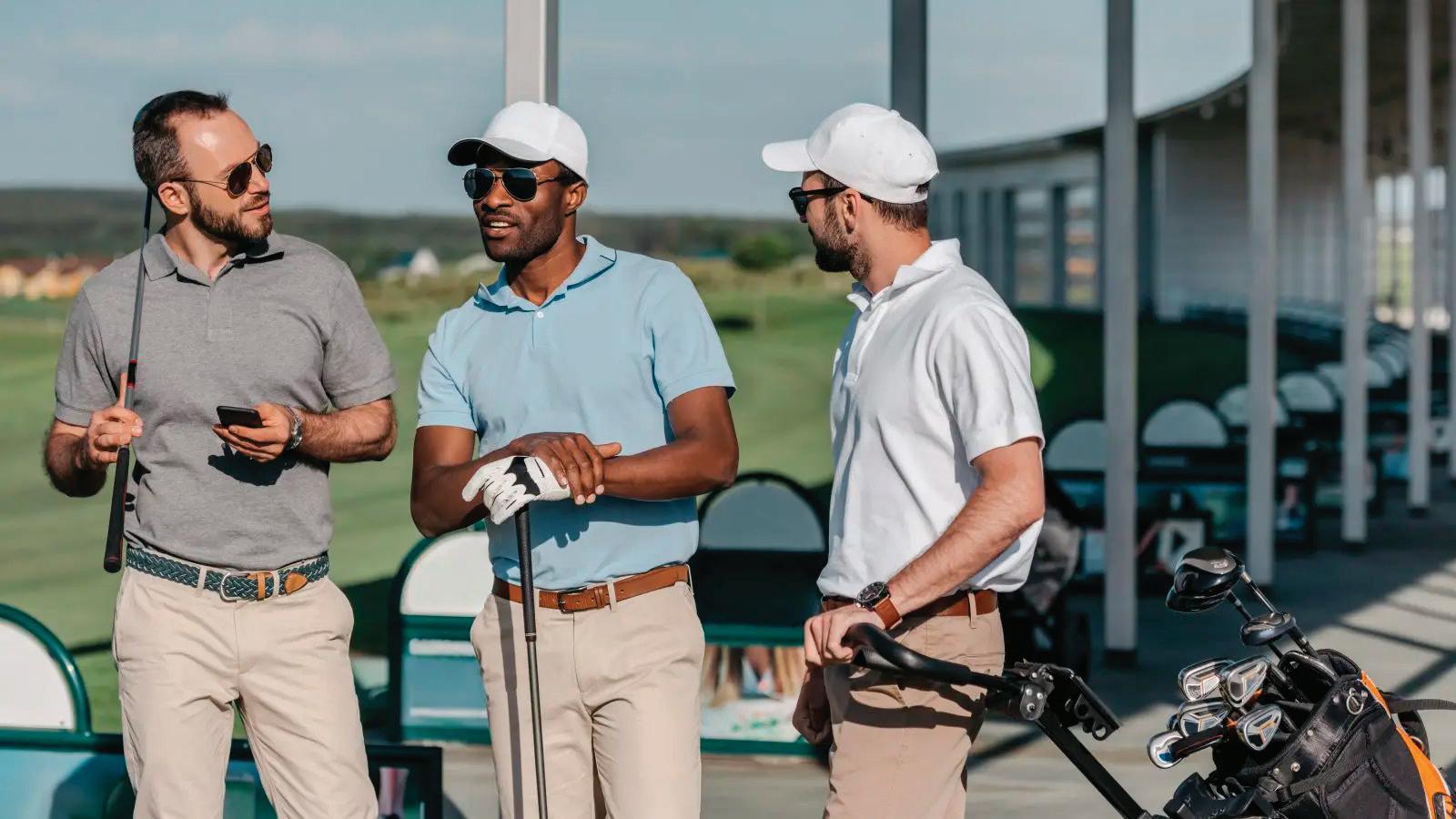
Ask any serious golfer you know about how much golf means to them, and they will tell you golf is more than a game; it’s a lifestyle. If you tee off regularly, choosing which golf club to join is one of your core decisions, as it influences your game, social life, and overall satisfaction with the sport. Nonetheless, like with most things in life, there comes a time when your current club no longer aligns with your aspirations or fits your needs.
The more you play golf, the more your skills and aspirations evolve. It may reach a point where your current club no longer matches your goals, whether mastering challenging courses, improving your handicap, or competitive play, signaling it’s time for a change. Shifting to a new club with an active tournament scene, tougher courses, or better training facilities can provide the
right environment to help you reach your potential.
Too much of anything is poisonous, and repetition can dull the excitement of the game. You may lack options for different playing conditions or get bored with the same course layout of your current club, necessitating a switch to a new club with multiple courses or access to a wider network
of courses. Some clubs understand the need to keep the game fresh and exciting, offering multi-course memberships or partnerships with other clubs.
Every golf club must remain committed to providing a wellmaintained course to its members to ensure maximum game enjoyment. Persistent issues like poorly kept fairways, unkempt greens, or inadequate drainage can greatly diminish your experience. If the course conditions in your current club are no longer meeting your expectations despite raising concerns, it might be time to shift to a club with higher standards.
Although our passion for golf drives us to get a club subscription, we also get to network with like-minded people and belong to a community. If you feel that your current club’s social atmosphere has shifted, failing to provide networking and social opportunities or becoming less welcoming, that could affect your overall golfing experience and enjoyment. It might be a good idea to reignite your passion for the game by moving to a new club with a vibrant and like-minded community.
The golf industry is evolving fast, and you need a club with top-notch facilities to enhance your overall golfing experience. If you are in a club without essentials like updated locker rooms, modern practice areas, or proper dining options, it might be time to look for a club that invests in amenities. As a modern golfer, you need access to technology like golf simulators, a driving range, and state-of-the-art equipment to elevate your experience.
Memberships can be costly, and when you invest in one, you expect proportional results. If you feel your current membership’s cost outweighs

the value you’re getting, whether due to outdated facilities, limited course access, or lack of benefits, consider moving to a club that provides better value for your money. The key is to find a club that balances affordability with quality.
Although the main role of a golf club is to offer quality golfing services to its members, each club is unique and often caters to specific demographics or lifestyles. If you reach a point where your current club’s culture no longer aligns with your preferences, whether due to membership policies, management changes, or the overall environment, it might be time to pack up your golf bag and explore a club that better reflects your interests and values.
Life changes such as job relocation, financial adjustments, or family commitments can affect your ability to enjoy your current club. Convenience is key to enjoying golf regularly, so you should look for a new club that better suits your current circumstances to avoid unnecessary stress and continue enjoying the game.
If you are a family person and your current club doesn’t offer proper family-friendly options, you’re missing out on much fun. Look for a
club with family-friendly amenities like swimming pools, junior golf programs, or dining options for all ages to make your membership more enjoyable and inclusive.
If you love competition but your current club doesn’t offer events, leagues, or tournaments, you may not feel challenged enough. You should add excitement to your routine by joining a club that hosts regular competitive events to test your skills against other players.
We all need a fresh start at some point. Joining a new golf club can rejuvenate your passion for golf, provide opportunities to explore different courses and amenities, and introduce you to new people. One course can become too easy or predictable, necessitating joining a club with varying course conditions or more demanding layouts to reignite your enthusiasm.
Many fond memories are made in a golf club, and deciding to move to a new one is not easy. Nonetheless, evolution is part of life, and your personal satisfaction and enjoyment of the game should always come first. When that time comes, conduct a thorough research of new clubs and visit their facilities to assess whether they match your expectations and goals. ■















igh-intensity sports like soccer, athletics, and martial arts may seem like the most demanding in terms of body energy needs. However, a slower-paced game like golf requires laser-sharp focus when formulating a nutritional plan, considering that a round of the game can roll on for several hours. An 18-hole round sees a player cover substantial ground on foot, highlighting the need for a proper diet to maintain energy levels and perform optimally. We list ten tips to help you along your way when it comes to golf nutrition.

Golf nutrition is essential for peak performance. Learn how to nourish your body to enhance stamina, focus, and overall game
By Cyrus Kahoro
and calculation. One crucial requirement for mental sharpness is staying hydrated. As a golfer, you should always carry a water bottle and take constant sips before, during, and a er your round.

Although swinging a club and sinking the ball into the hole might seem entirely physical, golf is more of a mental game. To sink that putt, a golfer needs maximum concentration, focus, visualization,

Games played during hot and humid days are the most hydrationsensitive. Players can consume electrolyte-rich sports drinks such as Gatorade and Powerade with sodium to replenish salts lost through sweating. Additionally, protein shakes and vitamin drinks can provide players with speci c minerals, vitamins, and proteins for optimal performance.
Before a round of golf, you need to fuel your body reserves properly, ensuring a steady energy supply throughout the round. Your pre-game meal should include carbohydrates
such as vegetables, fruits, and whole grains to prevent blood sugar crashes and provide sustained energy. Lean protein sources such as sh, turkey, chicken, and plant-based options like tofu and beans should also be present to support muscle repair and recovery.


Additionally, incorporate healthy fats such as olive oil, seeds, nuts, and avocados which aid in nutrient absorption and provide energy. It would be best to take a pre-round meal an hour or two before the game to allow time for digestion. Also, consume enough uids, such as water and sports drinks, to ensure you are adequately hydrated.
Snacks are an intelligent way to replenish your energy stores throughout the game, but you should avoid sugary ones that can cause


unhealthy energy spikes and crashes. Go for nutrient-dense snacks like nut butter on whole wheat bread, wholegrain crackers with cheese, yogurt with fruits, or trail mix.
In between holes, you need quick fueling to maintain your best form. Ensure your golf bag has easily digestible, nutrient-dense snacks such as energy bars & gels, dried fruits, nuts, trail mix, and granola bars to maintain energy levels and optimize performance. A sports drink loaded with electrolytes can also come in handy, especially during hot weather, to repair the e ects of sweating.

Golf requires mental acuity and physical endurance, and you certainly don’t need a rumbling stomach on the course. As a rule of thumb, you should avoid heavy, greasy foods that may bring about digestive comfort and make you lose focus during the game.

By the time you complete a round of golf, you’ll be tired, and your body’s glycogen stores will be depleted, with your muscles needing repair. To jumpstart the recovery process, start with a nutritious snack within 30 minutes of nishing the game, such as a protein shake or a banana with peanut butter. Follow that with a proper, well-balanced meal rich in carbohydrates, such as potatoes, rice, or pasta, combined with vegetables and protein. Restore hydration levels by consuming enough uids and ensuring optimal recovery.
Although di erent body sizes call for varying amounts of food intake, it’s vital to be mindful of how much you consume at a go as a golfer. No matter how tempting that beef roast is, go for moderate food portions because overeating can lead to sluggishness on the course. The

aim is comfortable food amounts to provide sustained energy.
Like every golfer has a unique swing, everyone has personal nutritional needs. Always be alert to how various foods make you feel during and a er a round of golf, and adapt your diet accordingly. Only consume what brings out the optimal beast in you.
Although a well-balanced diet should su ce in providing golfers with the nutrients they need, some golfers may bene t from additional supplements. You should, however, consult with your healthcare professional before taking this step. Some bene cial supplements for a golfer may include omega-3 fatty acids, magnesium, and B vitamins.
Consistency matters greatly in golf nutrition. Avoid making drastic changes to your diet on your game days to maintain proper energy levels and the body’s ability to perform at its best. Work with an accredited sports dietician to formulate a suitable diet for you and follow it to the letter.
Golfers need proper nutrition to perform the miracles they do on the course. Physical tness is crucial in improving your swing and hitting the ball properly, but the body requires fuel to perform optimally. Ensure you stay well-fed and hydrated before you hit the course, during play, and a er the round, and watch your performances on the course improve. ■
If you are planning on becoming a master of the greens, choosing the right fitness trainer is a key decision you’ll need to make
By Cyrus Kahoro
Astudent is as good as their teacher. If you are planning on becoming a master of the greens, finding the right fitness trainer is one of the crucial decisions you have to make. It would be best to have someone compatible with your attributes who can help your body move better for a perfect swing. Although certified fitness instructors have increased, finding a competent golf fitness coach who connects with your personality and helps you achieve your fitness goals safely and effectively can be daunting. Nonetheless, we have compiled a sure-fire formula to help you find the right instructor to bring out the beast in you.
Examine their credentials. There are certification programmes offered by the Professional Golfers Association (PGA) and the Titleist Performance Institute (TPI). A professional with a background in exercise science may also be beneficial because they can apply their knowledge of science to their coaching.
For someone to train you to greatness, they must have the right certifications and qualifications. The right fitness trainer first needs to have relevant golf-specific
certifications from recognized organizations such as the Titleist Performance Institute (TPI), which educates them on the physical demands of golf. Secondly, the instructor should have general fitness and health certifications from reputable bodies such as the National Academy of Sports Medicine (NASM), the American Council on Exercise (ACE), or the National Strength and Conditioning Association (NSCA).
It would help if you had a fitness trainer who has been around golf’s deeper levels to help you succeed. Ideally, they should have worked with professional or high-level amateur players and learned valuable insights and training techniques. A fitness trainer who has worked with many top-level golfers understands the biomechanics of the golf swing and can help you avoid the common injuries associated with the sport.
Naturally, any experienced fitness trainer will have a reputation and client testimonials to accompany it. It’s important to run a background check (a basic Google search will do) and see whether there are case
studies or positive reviews from previous clients who have recorded improvements in their golf game after working with the trainer. If possible, reach out to past or current clients and ask about their experiences and outcomes.
A golf fitness instructor is like a doctor who first needs to run all the necessary tests to assess your condition and then prescribe the right medication. The right trainer should start by comprehensively assessing your physical condition, including balance, strength, mobility, and any existing limitations or injuries. Next, they should create a customized fitness regimen tailored to your schedule, goals, and needs.
Every great teacher must possess a relatable teaching style and highlevel communication skills. For a student to learn and excel, the trainer must explain complex exercises and concepts in an easy-to-understand manner and provide appropriate, implementable feedback. Their teaching mode must match your learning style, whether detailed explanations or a more handson approach.

Golf fitness training requires appropriate facilities and equipment. Before settling on a specific trainer, please visit their training center and ensure that they possess quality and well-maintained equipment for golf-specific fitness training. Pay attention to factors like the location and availability of the facility and trainer to ensure convenience in maintaining a regular and productive training schedule.
High-level golf fitness training doesn’t come cheap. You should carefully analyze a trainer’s cost structure and understand the pricing modules and what’s included in the training sessions. It might be possible to get discounted packages for long-term commitments. It would help if you also considered the required time commitment and whether it matches your lifestyle and schedule.
Many experienced trainers understand the importance of a free or discounted initial session. If your preferred trainer offers a trial session, use it to evaluate their expertise and teaching style carefully and determine whether you are compatible. Also, hang around the facility and observe other training sessions with other clients to see how the trainer interacts with and instructs other students.
No two students are the same, and a good fitness instructor must understand that what works for one client may not work for another. Patience is vital for a fruitful clienttrainer relationship, so a great instructor must find a comfortable pace for each client. Some fast learners may progress quickly in their training, but other clients might require more coaching.
A close trainer-client relationship is crucial for great results, but it is important that maximum professionalism is always be observed. A trainer should, for instance, dress appropriately, preferably in a staff uniform, to avoid distracting his or her clients during training. Another sensitive point to note is about communication, where phone calls and text messages should only be made when totally necessary.
A great golf fitness trainer is invaluable when seeking to improve your performance, prevent short or long-term injuries, and enjoy the game more. By considering all of the factors mentioned, you’ll have the ability to find a top-quality, experienced fitness coach who matches your learning style and helps your body perform to the highest level it possibly can on the course. ■































BY ROBIN FRANK

The beauty of golf is its accessibility to people of all ages and fitness levels. Although less physically demanding than many other sports, orthopedic specialists at Hospital for Special Surgery (HSS) have seen their share of injuries among golfers. While many involve the back, shoulder or hip, another painful condition can sneak up on players and make it di icult to enjoy the game — Achilles tendonitis.
The Achilles is the largest and strongest tendon in the human body, connecting the calf muscles to the heel bone. It comes into play when we walk, run and jump. Achilles tendonitis, also known as tendinopathy or tendinosis, refers to an irritation, degeneration or inflammation of the tendon. It causes pain, and sometimes swelling, in the back of the leg near the heel.
Good foot and ankle health are essential for athletic activities such as golf, providing stability, strength and the ability to adapt to changing terrain. Players may walk more than six miles on an average 18-hole round. All that walking — uphill, downhill, on sand — requires substantial support from the Achilles tendon.
Tendonitis o en results from overuse — doing too much of an activity too o en without adequate rest. Footwear that does not provide good support is another culprit. Tight calf muscles that put excessive strain on the tendon can also lead to tendonitis. It can make walking the course more di icult or even painful, limit range of motion and reduce power in the golfer’s drive.
HSS experts advise anyone experiencing pain or sti ness in the back of their leg to take a break. For discomfort that doesn’t improve with rest, a consultation with a medical professional may be in order. In addition to activity modification, treatment may include ice, physical therapy, and a shoe insert to raise the heel and take pressure o the tendon.
Taking preventive steps and treating pain early are essential to maintain performance and comfort on the golf course. Here is a roundup of the best advice from HSS:
Avoid doing too much, too soon. If you’ve been inactive for a while, gradually increase the amount of time you play.
Choose proper, well-fi ing footwear. Your feet shouldn’t slide inside your shoes as you swing.






Heel raises: Before playing, warm up 5 to 10 minutes with exercises such as heel raises.






































Warm up for 5 to 10 minutes before playing with a light jog, mini-squats or heel raises.
If you have tight calf muscles, consider consulting a sports medicine specialist, physical therapist or athletic trainer for advice on when and how to stretch. Stretching when you reach the ninth hole or a er a round of golf may lessen the amount of stress the calf muscles put on the tendon.
Before beginning your game, take a few slow practice swings to roll through your feet and ankles.
If you injure your foot or ankle during the game, stop playing. Don’t resume golf until the pain resolves.
Consider heel li s or cushions for temporary pain relief.
When hi ing on uneven terrain or out of the sand, make sure your feet make solid contact with the ground by bending at your knees or hinging at your hips.
If you have a foot problem that is exacerbated by walking, consider using a golf cart.
Stay hydrated. Inadequate fluid intake can lead to dehydration, which can cause muscle cramping in the calves and a ect the Achilles tendon.
Keep in mind that if you are taking a fluoroquinolone antibiotic such as Ciprofloxacin, you may want to modify your activity. This class of medication has been linked to tendonitis and even tendon tears.
The HSS experts say simple measures such as gradually increasing play time and listening to your body will help ensure a safe and enjoyable golf season.
Andrew P. Creighton, DO, physiatrist at HSS in New York City; Mark C. Drakos, MD, orthopedic foot and ankle surgeon at HSS in New York City and Medical Director at HSS Long Island; and David A. Wang, MD, sports medicine physician at HSS in New York City and HSS Paramus, were interviewed for this article.
By Jonathon Taylor

The game of golf has been enjoyed by many for centuries, but the tools needed to play have changed dramatically throughout the decades. Improvements in technology have resulted in tools that are more accurate, efficient, and fun to use. Graphite golf clubs, hybrid golf clubs, computerized video analysis, and GPS-enabled golf carts are just a few examples of how
technology has altered the sport of golf. What follows is an examination of how technological advancements in golf equipment have influenced the modern game.
Golfing gear has changed drastically as a result of technological advancements. Golf club materials, designs, and production methods have all evolved over time. With the help of CAD and CAM software, golf club
Golf gear has changed drastically throughout the history of the sport.
makers can now produce equipment with greater uniformity and accuracy. As a result, golfers of all abilities now have more opportunities to improve their game and have more fun on the course.
Graphite golf clubs represent one of the most revolutionary developments in the history of golf equipment. Composite graphite shafts are stronger and more flexible than steel. As a result, you can increase your swing speed and hit further. Graphite shafts allow golfers to enhance the club head speed, which can result in a noticeable gain in driving distance. This can help golfers with slower swing speeds hit the ball further, allowing them to keep up with more seasoned players.
Since graphite shafts weigh much
less than their steel counterparts, they put less of a physical burden on the player and allow for longer rounds. Golfers who walk around with their clubs or those with mobility issues will find this to be of great benefit. Graphite shafts are lighter than steel ones, so golfers can keep their swing speed and accuracy up for the whole of a round.
Hybrid golf clubs have enjoyed a surge in popularity due to their many benefits in recent years. These clubs are a hybrid of woods and irons, combining their greatest features to provide players more options. A larger sweet spot on these irons means you might be able to hit the ball more accurately and more efficiently than with conventional irons. That’s because they’re fashioned with a curved sole and a wooden-style top, both of which give off a rustic vibe. Because of the increased launch angle and softer feel upon impact, shots can be hit further and more accurately with this design.
Hybrid clubs are a great option for golfers of all ability levels since they are easier to hit than long irons. Due to their deeper face and smaller skull, they are more forgiving of mishits. This can help golfers hit more accurate and consistent strokes, especially when conditions make it tough to use a conventional iron.
There has been a rise in the use of hybrid golf clubs in recent years. These clubs provide golfers with a greater range of options by combining the advantages of woods and irons. A larger sweet spot on these irons means you might be able to hit the ball more accurately and more efficiently than with conventional irons. That’s because they’re fashioned with a curved sole and a wooden-style top, both of which give off a rustic vibe. Because of the increased launch angle and softer feel upon impact, shots can be hit further and more accurately with this design.
Hybrid clubs are a great option since they are easier to hit than long irons. Due to their deeper face and smaller skull, they are more forgiving of mishits. This can help golfers hit more accurate and consistent strokes,

GPS-enabled devices have helped revolutionize modern tracking systems.

especially when conditions make it tough to use a conventional iron.
These technological innovations have increased enjoyment of the game while also enhancing players’ abilities on the course. More time can be spent on the course, more accurate shots can be made, and better statistics can be kept. This has allowed the sport to attract a wider audience, as the equipment is now more user-friendly and less punishing on novices.
There are a few things to keep in mind when shopping for high-quality golf gear. As a first step, make sure you get gear that fits your experience level. When shopping for golf equipment, novices should prioritize ease of use and forgiveness, while seasoned pros can prioritize accuracy and customization. Choose gear that matches your body type and is easy for you to utilize.
Technology has had a significant effect on the sport. Technological developments, such as the development of graphite and hybrid golf clubs, automated video analysis tools, and GPS-enabled golf carts, have increased both the efficiency and entertainment of the game. Golf club materials, designs, and production methods have all evolved over time thanks to growing technology. As a result, golfers of all ability levels now have more club options and club designs to choose from. ■
A story can be told in a single perfect shot, whether it be the emotions of a player, the beautiful surroundings, or simply the essence of the game
By Cyrus Kahoro
Golf is the ultimate gentleman’s game, famed for its breathtaking landscapes, precision, and elegance. Professional and amateur golf photographers have a field day taking stunning photographs, from challenging bunkers to the lush green fairways. They capture every detail, like the players’ skill, the golf course’s beauty, and the game’s drama. Photos captured around the course can act as powerful storytelling tools, preserving cherished memories and documenting the essence of the game.
To excel in golf photography, you must first understand what golf is all about. Take time to understand the rules, etiquette, and all nuances of the sport to know the right moments to capture. Knowing when and where key shots might occur is essential for anticipating them and being in the perfect position to capture the golden moment.
As a golf photographer, you need the right equipment to handle the challenges of shooting on the course. Go for a camera with a highresolution sensor that will capture player and course details vividly. High continuous shooting speed and fast autofocus capabilities are necessary
in your camera for capturing action shots effectively.
Additionally, a versatile lens range helps to capture every moment. A macro lens captures intricate details like golf ball dimples; a telephoto lens accurately zooms in on the players and their swings, whereas a wideangle lens is ideal for capturing the course’s expansive landscapes. A sturdy tripod also helps in stabilizing your camera.
You must also respect the privacy of players, golf fans, and staff, asking for permission before taking close-up shots.
Any form of photography requires paying close attention to the lighting conditions. As a golf photographer, you should adapt to changing light conditions on the course throughout the day and act accordingly. Work with early morning and late afternoon light for beautiful, warm tones and long shadows. Overcast days can provide softer, more even lighting. Moreover, you can leverage
artificial lighting techniques for optimal results. You can create dramatic effects or fill in shadows using external flash units. Depending on the day’s natural lighting conditions, you can experiment with different artificial lighting setups to achieve the most creative and flattering results.
It would help if you learned how to arrange elements within the frame to create impactful and visually pleasing golf photographs. Clever composition tactics include employing the rule of thirds. This involves dividing the frame into thirds, both vertically and horizontally. Key elements can be placed along these imaginary lines or at their intersections.
You can also incorporate foreground and background elements to add depth and interest to your photos. Natural elements like flowers or trees as well as golfrelated ones like clubs can create stunning foreground appeal. You should be careful when choosing the background to ensure that it complements the main subject.
Before a shoot, conduct thorough course research and understand its layout. Ensure you study hole positions and any unique landmarks or features that can enhance your

photos. You should also identify the best vantage points and angles to get closer to the players. This way, you capture the action, all without interfering with the game. If the event has exclusive areas for premium shots, contact the event organizers or the course management to secure access.
Golf is a charged game that requires timing and precision. Your photography should vividly reflect that. Capturing the emotional expression on a golfer’s face during key moments can make a good photo. For example, their concentration as they line up a critical shot, the frustration of a missed putt, or the joy of a well-played shot. It would also be best to focus on capturing the moment of impact when the player strikes the ball.
Photography is an art. It requires exploring creative techniques and thinking outside the box to make your golf photos unique. You can
experiment with long exposure techniques to add dynamism and a sense of movement to your photos. For added interest, try creative elements and props such as smoke bombs, golf balls with interesting designs, or vintage golf clubs to create attention-grabbing and visually striking images.
Playing golf requires maximum concentration, so you should be discreet when moving around and taking photos to avoid disturbing the players. You must also respect the privacy of players, golf fans, and staff, asking for permission before taking close-up shots. Photographing people without their consent might cause you legal problems.
After a day shooting on the course, you need to edit the photos skillfully to bring out the desired touch. It would help to use reputable editing software such as Adobe Lightroom, Adobe Photoshop, or Capture One to
optimize photo quality. Additionally, try to incorporate basic editing techniques. This could involve reducing and sharpening noise for crisp images, adjusting color balance, contrast, and exposure; enhancing the golf ball, removing distractions, and adding filters.
A good photo becomes a masterpiece once shared with the world. Create a well-organized and categorized portfolio for your golf photos, tailoring your best shots to different purposes. Once done, share your work on social media and golf community platforms where potential clientele can spot you. Remember to submit your work to relevant publications and participate in golf photography contests for exposure and recognition.
Golf photography contributes immensely to promoting the sport, marketing players, golf courses, and equipment manufacturers. The tips mentioned will sure to set you up for success as a golf photographer, ensuring you produce breathtaking photos. ■









Heading
south to warmer climates suggests some tempting golf vacation choices. Essential Golf reviews some of the most attractive luxury stay-and-play breaks currently available
By Charles Ford
In northern states, we’re feeling some chilly days! So, as we strive to stay warm in these cold winter months, why not plan for a well-earned getaway in the early months of the new year? The
inviting warmth of the southern winter makes for a compelling option. Our picks in this issue of Essential Golf are all in the highend sector, with each property recognized for delivering a luxury golf vacation experience. Our quest for the best takes us to California westside, the Carolinas eastside, to Georgia south, then farther south to a superb Caribbean property.



As the new pro golf season begins, known as the PGA TOUR’s West Coast Swing, Pebble Beach Golf Resort is always a huge attraction for golf fans. It’s here that the AT&T Pebble Beach Pro-Am takes place (January 30 – February 2) at Pebble Beach Golf Links (6,828 yards, par 72), a course that’s consistently rated among the greatest public golf courses in America.
The Resort has two other spectacular courses: Spy Hill Golf Course (6,960 yards, par 72) and the Links at Spanish Bay (6,726 yards, par 72). It was the latter that saw Robert Trent Jones, Jr., Tom Watson, and Sandy Tatum teamed up to craft
a course with a uniquely “Scottish links” feel. The Spyglass Hill course is also exceptional for its dramatic scenery and magnificent views of the Pacific Ocean. It was here that Bing Crosby—being so confident of the championship-caliber of Spyglass Hill—bet none other than Jack Nicklaus that he, Jack, wouldn’t break par in his first round there. Nicklaus then shot a 2-under 70. Jack still has a framed $5 bill signed by Bing Crosby to commemorate the occasion.
For your accommodations at Pebble Beach Resorts there’s a great choice (and to secure a round at Pebble Beach Golf Links, a minimum
2-night stay is required). The Lodge at Pebble Beach (established 1919) has 144 guest rooms and 17 suites with fine dining offered at the Stillwater Bar & Grill and The Tap Room.
The Inn at Spanish Bay has 252 guest rooms and 17 suites, with dining facilities at Pèppoli, Roy’s, STICKS, and Stave Wine Cellar.
Casa Palermo is a luxury estate resort with 21 guest rooms and 3 suites. Adjacent is The Spa at Pebble Beach and there’s also a heated outdoor swimming pool.


























































































































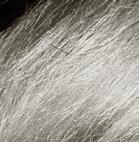




























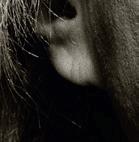

















































Pinehurst, which dates back to 1895, is fondly regarded as the cradle of golf in the USA. Since that date, a remarkable succession of major events has taken place here including the U.S. Open (four times, with four future Opens scheduled). The resort’s stay-and-play packages give vacationers the opportunity to experience golf on a course where many of the legends of the game
have made their names and thrilled the crowds.
Of the ten 18-hole courses, each named by a simple number, Pinehurst’s No. 2 course (6,961 yards, par 70/72) is the resort’s most famous—opening in 1907 and designed by Donald Ross. It’s famous for its exceptionally difficult green complexes—Johnny Miller once wryly compared trying to land a shot
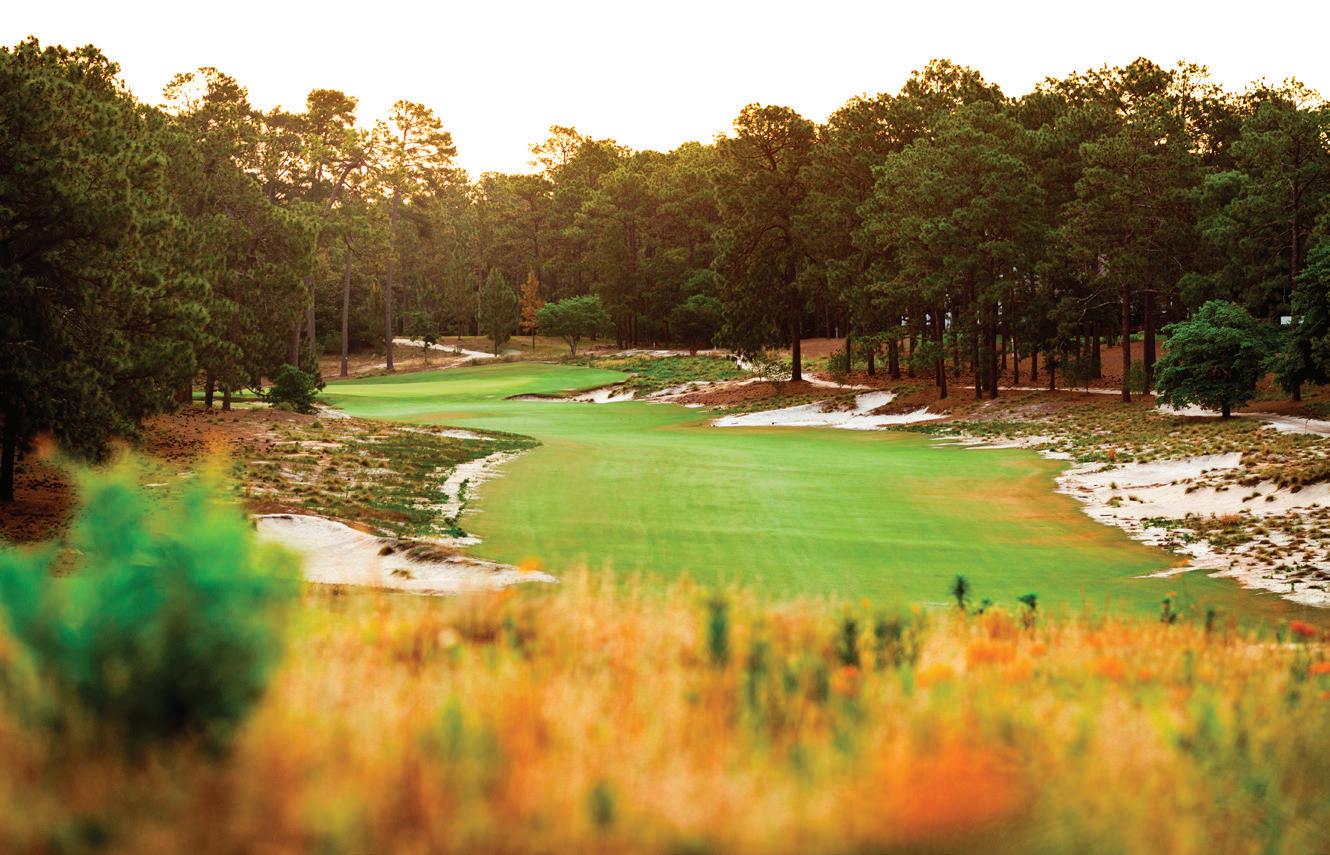
on a Pinehurst green as “like trying to hit a ball on top of a VW Beetle.” Beside the 18th green is a statue of Payne Stewart, showing the champ celebrating his winning putt from 1999 U.S. Open.
The miniature Thistle Dhu (“This’ll Do”) putting course (1916) and a short 9-hole course named The Cradle is where you can indeed walk in the footsteps of many of the sport’s greatest players taking their prematch warmup. Chatting with golf fans who’ve made recent visits, they all speak of a memorable southern vacation experience at Pinehurst, mentioning the friendly staff, the awesome golf, the extensive facilities, and the luxury accommodations, the latter that include a choice of four historic hotels. Package deals are currently comprehensive and attractive, from a B&B & Golf package through to a Premier Golf Package for those looking to maximize their on-course time at Pinehurst.



South Carolina’s Kiawah is a low-lying sea island, known as a barrier island, on the Atlantic coast, and Kiawah Island Golf Resort offers a pretty full-on luxury golf and beach vacation.
There are five championship courses of which the Pete Dyedesigned. The Ocean Course (7,820 yards, par 72) is one of the standouts in the rankings of the greatest U.S. golf courses. It was here, readers will remember, we saw the epic “War by the Shore” Ryder Cup of 1991 (the most competitive, most contentious, most nerve-wracking!) and also it was here that Rory McIlroy triumphed at the 2012 PGA Championship.
The resort currently has some great package offers for stay-andplayers, with deals that bundle golf rounds and luxury accommodations. For example, The Ocean Course Cottage Experience has been designed for the enjoyment of adult golfers, although juniors over ten years of age can be included in this deal at the same rate. Also included in this deal is one round of golf on any of the five courses, including The Ocean Course (based on availability), per night of stay, along with unlimited use of The Ocean Course driving range. There’s fine dining too, at The Ocean Room, Kiawah’s premier steakhouse, with more than ten other eatery options.
Designed by Robert A.M. Stern Architects, the Ocean Course Clubhouse features stunning views, elegant architecture, and a welcoming atmosphere for golfers and visitors alike.
McLemore’s cliff-edge 18th is perched 1,500 feet above the valley floor of McLemore Cove.

This unique golf resort is built on the cliff-edge at the top of Georgia’s Lookout Mountain. The claim for McLemore as a premier golf destination in the Southeast will be readily agreed by anyone who’s enjoyed golf here. The multiple golf courses are landscaped in truly remarkable terrain; terrain that is thousands of feet above sea level. The main attraction is McLemore’s Highland Course (7,055 yards, par 71). An existing course was completely redesigned by Rees Jones in collaboration with designer Bill Bergin. According to Jones, innovative adjustments were made to create more variety, providing a world-class test for the game’s best players, as well as giving accessibility for beginners. A completely new and remarkable
18th hole was designed on a cliff edge overlooking McLemore Cove. It’s become known as one of the best and most recognizable finishing holes in America. McLemore’s second course, The Keep, also features five cliffedge holes.
Guests and their families can blend days on the golf courses with a wide range of activities. There’s rock climbing, bouldering and caving, along with planned excursions that explore the river, trails and waterfalls. All within a region that is home to national and state parks, along with protected wilderness areas with abundant wildlife.
Both dining facilities and accommodations have all the luxury appeal that makes McLemore a top golf resort choice.
For a stay-and-play vacation,
McLemore invites us to “design your custom golf and accommodations package.” You can customize options on the McLemore website Golf Packages link. There’s also The Highlands Course Golf Package which, for many, will be an attractive introduction to McLemore golf. The package includes:
◆ One night in a guest room at Cloudland Lodge
◆ One round of golf per golfer for each night of stay (Highlands Course only)
◆ Unlimited play on short course (Cairn)
◆ Unlimited access to putting course
◆ Practice facility access McLemore also has The Keep Golf Package and The Multi-Course Golf Package, each of which are enticing and affordable options.

Escaping the winter chill for a luxury short stay or longer break makes Barbados a most attractive choice. Sandy Lane Country Club is a high-end venue with a worldwide reputation for stylish luxury, guaranteeing guests a memorable golf vacation.
The Green Monkey course (7,389, par 72) was designed by Tom Fazio. When it opened in 2004, it was said to be the most expensive golf course ever built, having been blasted out of the limestone bedrock with dynamite, resulting in an exquisitely landscaped course. Named after the Bajan green primates that inhabit the island of Barbados, The Green Monkey spans 22 acres of the Platinum Coast’s most beautiful terrain.
Sandy Lane’s current golf packages include the following options:
◆ 3-day Golf Pass for stay of 4 - 7 nights (a total of 3 rounds per person at The Country Club)
◆ 5-day Golf Pass for stay of 8 - 10 nights (a total of 5 rounds per
person at The Country Club)
◆ 7-day Golf Pass for stay of 11 nights or more (a total of 7 rounds per person at The Country Club).
There’s a choice of luxury accommodations including guest rooms, suites, penthouses, and a 5-bedroom villa featuring lush
The signature hole features an area of grass
tropical gardens, spectacular views, all in a calming atmosphere of privacy.
For guests’ dining experience, anticipate the exceptional, with five separate restaurant choices and several bars. They all celebrate global flavors combined with internationally and locally sourced ingredients. ■



Think of your business website as a game of golf. To be successful, you need the right tools and skills to come in top of the leaderboard. At one2one Digital, we have the design and programming experts to create for you an effective and stunning website.
Even if your website looks great, our team can drive it to its maximum potential to generate traffic and convert that traffic into business.
Let’s have a chat. 312.967.2557 | hello@one2onedigital.com


























For a long time, Europe and America have been the ultimate golf destinations for those seeking to combine their love for the game and adventure. Europe has a rich golf history, origin credited to a game













By Cyrus Kahoro
played on the eastern coast of Scotland in the 15th century. While on the other hand, America is known for its countless state-of-the-art facilities that have produced most of the world elite players we know today. Nonetheless,




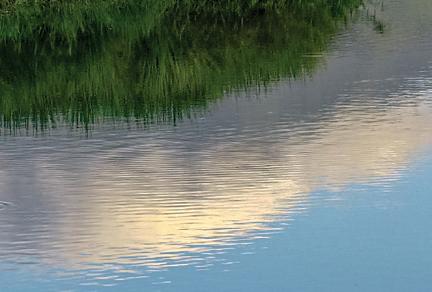









the industry as we know it is breaking conventional barriers, and now you can explore emerging destinations that o er you the same quality facilities and also expose you to new cultures and unforgettable experiences.
















If you’d love to explore the rapidly growing golf tourism infrastructure, rich cultural experiences, and beautiful coastal courses, Vietnam should be up towards the top of your list for your next fun- lled vacation.

A magical course to check out is Ba Na Hills Golf Club, designed by Luke Donald in collaboration with IMG. The 18-hole, par-72 course o ers stunning views of the Ba Na Hills Mountain range and features varying elevation changes,



strategically placed bunkers, and undulating fairways. For a linksstyle course experience, why not visit the prestigious Hoiana Shores Golf Club in Quang Nam designed by renowned golf course architect Robert Trent Jones Jr.






Another fun- lled emerging destination is Bulgaria, o ering a ordable luxury, dramatic cli side courses, and a rich history. Key courses here include BlackSeaRama, located on the coast of the northern Black Sea, near Balchik town. The Gary Player-designed 18-hole, par-72 championship course is fun yet challenging, with most holes providing breathtaking panoramas and positioned on high cli s. You should also check out Thracian Cli s Golf & Beach Resort along the same coastline which combines high-end gol ng facilities, luxurious suites and villas, and natural beauty, making it a perfect haven for golfloving vacationers.

Mauritius Africa is among the leading emerging golf destinations, with a country like Mauritius o ering stunning ocean views, luxurious resorts, and a tropical island paradise. A top




course worth visiting is the Anahita Golf Club, designed by Ernie Els and located on the east coast of the Indian Ocean. The 18-hole championship course integrates seamlessly with the natural environment, letting you tee





it o on wide fairways and ve sets of tees amidst a backdrop of lush tropical scenery. The Heritage Golf Club is another hit with visitors, located in the scenic Bel Ombre region. Peter Matkovich made it a er all.







Cambodia
Southeast Asia is another place you might want to seek and explore, with Cambodia certainly a hidden gem. Apart from seeing the nation in many action lms from various decades, why not drop by Siem Reap Booyoung Country Club, just near the Angkor Wat temples. If you are into unique cultural experiences this par-72 layout design by Kentaro Sato will exceed your expectations. Even better yet, make Angkor Golf Resort your emerging golf scene by Nick Faldo and write home about how the combination of well-manicured greens, bunkers, and water hazards makes your skin tickle.
Te Arai Links promises different perspectives of the glittering sea views and islands beyond.

You can take the option of travelling to Oceania where New Zealand is very much turned up on golf. Uncover the treasures the Auckland region has to offer and witness what a serene environment, high-quality courses, and spectacular natural landscape means. None come more spectacular than Te Arai Links with courses meticulously designed by Tom Doak and Bill Coore & Ben Crenshaw with the nearby sand dunes and stunning views of the Pacific Ocean that will make you want to postpone the return ticket home.
How about some Middle East touch to finish our entries? Anatolia gave us Turkey, where we find a course like Montgomerie Maxx Royal named after designer Colin Montgomerie. If you love rich

historical sites, luxurious resorts, and a stunning Mediterranean coastline, then look no further. There is a reason why it has consistently been the venue of the Turkish Airlines Open. The highclass Turkish courses don’t end there
as you might want to visit Carya Golf Club. Five-time Open Championship winner and acclaimed architect Peter Thomson made sure that the rolling fairways and heathercovered areas will make your golfing experience unforgettable. ■

What are some of the essential items you should pack to ensure you have a successful and enjoyable golf getaway?
By Cyrus Kahoro
Agolf getaway is always an enticing and refreshing idea. In today’s fast-paced world, juggling work demands, economic pressures, and family commitments can be overwhelming. So, when you’ve finally accumulated enough leave days and decide to escape with your golf-loving friends to a stunning destination, figuring out what to pack can be quite a challenge. While packing a golf travel bag might seem straightforward, the thrill of the trip can easily cause you to overlook some crucial items. We reveal some essential packing tips to ensure a smooth and enjoyable golf vacation.
The main items you’ll obviously need for a golf getaway are your clubs. It would help to pack them in a sturdy
travel bag designed to protect them during transit. Head covers come in handy to avoid damages from clubs repeatedly knocking each other. In addition, you should pack all vital accessories, such as golf balls, grips, ball markers, tees, divot repair tools, and tee holders.
Next is your golf apparel, which can vary depending on your destination. Basic items include golf gloves, shirts, and pants or shorts. The main point here is to pack weatherappropriate attire, which may see you include a sweater or lightweight jacket and rain gear if necessary. You may also need a visor, hat, or sunglasses to shield you from the sun. Furthermore, it’s important you conform to the dress code of the golf courses you’ll visit.
Shoes make the man (or woman), and this also applies to travelling golfers. To enjoy your getaway, you need comfortable golf shoes capable of handling various course conditions. You can check the weather and topography of your destination to guide this decision. Socks are also necessary, especially moisture-wicking ones that will always keep your feet comfortable and dry.
Towels are a key element in a golfer’s bag. As you play, you sweat a lot, especially in hot weather, and you need a towel to wipe off your face to feel refreshed. Moreover, your golf clubs and balls tend to get dusty, muddy, or wet as you play, requiring a towel to clean them. On the other
hand, Ziplock bags help organize smaller items in your luggage and store muddy shoes or wet clothes.
Different golf destinations require unique self-protection measures. When heading to sunny areas, pack sunscreen to avoid sunburns on your skin, especially during extended golf sessions. Insect repellent is also necessary when traveling to bug-prone areas to help avoid bites. Lastly, a first aid kit with basics like blister pads, pain relievers, and band-aids is always necessary for unexpected needs.
Every round requires the right amount of energy and hydration for optimal performance. Every golfer has their own dietary needs, so pack your preferred snacks like nuts or energy bars to supply you with constant energy throughout the game. On top of that, include a hydration pack or water bottle to help you stay refreshed.
Technology has become indispensable to golf in recent times. You should pack a GPS device or rangefinder to gauge distances in your destination course accurately. Your smartphone is also useful for course navigation, helping you capture memorable moments and track scores with scorekeeping apps. A portable phone charger is necessary to keep your device powered throughout the day.
You must always carry vital documents whenever you travel. For a golf getaway, these might include reservations or confirmations for tee times, a handicap certificate, or your golf club membership card. It is also important to maintain copies of your travel itinerary, including transportation details or hotel bookings.
All work and no play makes Jack a dull boy. If you plan to play
like Nicklaus during your golf getaway, carry along whatever makes your heart and mind relax for the downtime between rounds. Ideal entertainment might include packing a favorite book or magazine, downloading relaxing music playlists, or tuning in to a cherished podcast.
Money makes the world go round, including the golfing destination you’ll visit. You’ll certainly come across scenarios requiring you to use local currency or cards, such as purchasing snacks or drinks, tipping caddies, and any extra expenses at the golf course. You might even want to buy a souvenir to take home with you!
Every golf getaway deserves to be something worth writing home about. By following these tips you can make the most of your next golf vacation. You’ll be able to enjoy your time on the course and savor all the great experiences your destination has to offer. ■

Big Cedar Lodge is home to several courses designed by some of the greatest names in golf.


The Lodge is known also as ‘America’s Next Great Golf Destination’.





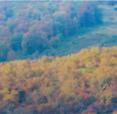
Each course showcases the magnificence of the Ozark Mountains that surround the resort.



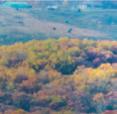



Located within the natural landscape of Branson in the south of Missouri, the Big Cedar Lodge Resort, presented to us as “America’s Premier Wilderness Resort,” assures a warm welcome to all those seeking a memorable golf vacation. This luxury resort is placed within the magnificently picturesque landscape of the Ozark Mountains, so if you long for the great outdoors, this is for you (complete with inviting accommodations, top-class restaurants, and stunning golf courses, along with some attractive package deals).
Big Cedar Lodge is being pitched
as “America’s Next Great Golf Destination,” giving golf vacationers a wide range of choices, with courses constructed by some of the top names in golf: Tiger Woods, Jack Nicklaus, Arnold Palmer, Tom Watson, Gary Player, Tom Fazio, Bill Coore, and Ben Crenshaw.
In addition to the well-known Top of the Rock Golf Course, a Jack Nicklaus Signature Course which was the first par 3 course to be included in a PGA TOUR-sanctioned event, another big attraction must be the Tiger Woods-designed Payne’s Valley Course—the first U.S. public golf course designed by Woods. TGR
Design by Tiger Woods, says, “The design of Payne’s Valley creates a championship-caliber, familyfriendly golf experience that allows individuals of all skill levels to come together to enjoy the game and the beautiful natural setting.” The course has an attractive and inviting layout that includes challenging and pristine water features, large fairways and greens, and the famously spectacular 19th hole. Following its opening in 2020, it was host to a star-studded 19-hole matchplay event that included Woods, Justin Thomas, Rory McIlroy and Justin Rose.

A new sixth course will debut in the summer of 2025 that will further showcase the impressive nature in the Ozarks. Cliffhangers, an 18hole, par-3 course will be the latest addition to the resort’s repertoire of courses, joining Top of the Rock and Mountain top as the three par-3 courses. The course outlined as what will become ‘a bucket-list item for anyone who loves the game of golf or the natural environment and beauty of the Ozarks’ will feature challenging elevation changes, large and small targets, tucked pins, various drastic slopes, and movement on the greens whilst showing off spectacular views of the Ozark Mountains and majestic waterfalls.
Big Cedar Golf offers multiple practice facilities with access for golfers included in their greens fees. If guests wish to use the range without playing a round of golf, Buffalo Ridge offers daily access to the practice facilities for $45 per player. Here is a list of each practice amenity located at the different courses.
◆ Payne’s Valley - Driving Range (Ozarks National), Short Game Area (Ozarks National), Putting Green.
◆ Ozarks National - Driving Range, Short Game Area, Putting Green.
◆ Buffalo Ridge - Driving Range, Short Game Area, Putting Green.
◆ Top of the Rock - Putting Green. Guests playing Top of the Rock can use the Buffalo Ridge Driving Range if they wish to warm up before their round. Please note, Buffalo Ridge is 16 minutes away from Top of the Rock by car.
◆ Mountain Top - Driving Range (Ozarks National), Short Game Area (Ozarks National), Putting Green.
Despite golf being one of the main attractions of the Big Cedar Lodge Resort, there are a wide range of other activities suited to every guest if you want to mix it up. There’s fishing for bass on Table Rock Lake’s 43,000 acres of clear water, or trout fishing at nearby Dogwood Canyon Nature Park,
Payne’s Valley is named in honor of three-time major winner Payne Stewart.
boating from Long Creek Marina. At the shooting academy there’s clay shooting, with shotgun and ammo provided. Or simply chill out and enjoy a relaxing spa treatment with massages, manicures, pedicures and much more. It is also worth taking in mother nature and exploring the great outdoors by going on a hike across the 10,000 acres of nature park. Soak up all the sites by weaving through the magnificent wooded forests, steep canyons, and breathtaking rock formations and waterfalls. But don’t worry, this is a family-friendly destination meaning there is also plenty of fun for the younger guests thanks to Big Cedar’s private childcare with a comprehensive range of activities and excursions including miniature golf, archery, camping, and a hide & seek scavenger hunt. A gorgeous mountain setting, Big Cedar Lodge offers the complete golf vacation package making it an unmissable destination. ■

























Located deep within the rocky, forested terrain of the Missouri Ozark Mountains, Big Cedar Lodge is a remote haven of natural beauty that brings conservation to life.
Explore nature-based inspired accommodations and breathtaking views along five award-winning, Audubon-International certified, nature golf courses. Connect with family and friends by connecting to the Great Outdoors.



Welcome to Nature Golf at Big Cedar Lodge.








We unearth smart hacks to play your best golf in various weather conditions
By Cyrus Kahoro








Golf is a highly addictive sport, and regardless of changes in seasons and weather patterns, most players wish to keep teeing it o whenever the chance arises. Nonetheless, di erent climates present unique challenges, and so players must implement speci c strategies to ensure optimal performance and enjoyment. From challenging rain showers to serene sunny days, scorching heat, and gusting winds, players require high adaptability and resilience to maintain their A-game. Di erent climates also a ect your course dress code; we unearth smart hacks below to play your best golf in various weather conditions.
Seasons like winter can be quite unsettling for players, where the body craves some action, but it’s coldest and darkest outside. However, There are ways to help you make the best out of your days:
Challenges:
◆ Diminished ball travel distance.
◆ Reduced exibility and sti muscles.
◆ Unyielding ground conditions that a ect roll and bounce.
Tips:
1. Proper Warm-Up: A clever hack to maneuver through cold weather is to dedicate extra time to warm up your muscles before your round. Light exercise and dynamic stretches help signi cantly.
2. Dress Heavily: To play comfortably in cold weather, you should wear multiple layers of clothing that you can add or remove when necessary. This will keep you warm and prepared for any weather changes. Consider windproof outerwear and thermal base layers for maximum comfort.
3. Appropriate Club Selection: As noted, one of the challenges associated with cold climates is diminished ball travel distance. Therefore, you should opt for a club with more lo .

4. Carry Hand Warmers: Hands are among the most a ected by cold weather, and having some warmers in your pockets helps maintain grip.
5. Stay Positive: Cold weather patterns are challenging, so it’s important to maintain a positive attitude to keep you encouraged and motivated and help you focus on having fun.
Play the best golf during summer with these hacks:
Challenges:
◆ Heat exhaustion and dehydration.
◆ Faster ball travel due to thin air.
◆ Sweaty hands and slippery grips.
Tips:
1. Dress Appropriately: When picking your summer wardrobe, choose breathable, light, and moisturewicking fabrics. Sunglasses and a wide-brimmed hat can also protect
you from the sun.
2. Constant Hydration: It’s crucial to stay hydrated in hot weather. Drink plenty of water before, during, and a er your round. Consider packing sports drinks to replenish electrolytes and keep your energy levels up. Your body will thank you.
3. Carry Towels: Sweaty hands cause slippery grips, which can result in a disappointing round. Consider using a rosin bag for extra grip and carrying a towel to keep your grips dry.
4. Use Sun Protection: Extremely hot weather conditions can expose your skin to harmful UV rays, so apply sunscreen with a high SPF every few hours to protect your skin.
5. Pace Yourself: In hot weather, you want to save as much energy as possible for your round. If you cannot ride a cart, walk steadily and take breaks in the shade whenever possible.
Playing in windy conditions demands strategic play and adaptability. These tips will help you conquer the wind:
Challenges:
◆ Uncontrollable ball flight.
◆ More mental focus is required.
◆ Unpredictable ball behavior on greens.
Tips:
1. Adjust Your Ball Flight: Punch shots are ideal in windy conditions because they help keep the ball low and out of the wind’s reach. A lower, penetrating ball flight reduces the impact of wind gusts.
2. Proper Club Selection: Clubs with lower lofts are best suited to minimize shot height by reducing the wind’s effect.
3. Careful Greens Reading: You must pay keen attention to the wind patterns and how they might affect your putts and chips.
4. Focus on Your Swing Tempo: Maintain a smooth, controlled swing to prevent unnecessary ball spin and enhance accuracy.
5. Aim and Alignment: Study the wind’s direction and adjust your aim appropriately. You can trick the wind by leaning your shot to one side and letting the gusts propel the ball back to the intended target.
6. Stabilize Your Stance: Widen your stance in the face of the wind. This simple adjustment provides a solid foundation for better balance and stability, giving you a sense of security on the course.
The higher you go, the cooler it becomes. Learn how to play your best golf in high altitudes:
Challenges:
◆ There is a high likelihood of altitude sickness and escalated fatigue.
◆ Thinner air causes golf balls to travel farther.
Tips:
1. Gradual Acclimation: You should

arrive early at the golfing venue to allow time to adjust to the altitude and avoid any lastminute surprises.
2. Proper Hydration: Drink plenty of water to curb the risk of dehydration at high altitudes.
3. Monitor Fatigue: When teeing it off, check out for any signs of altitude sickness and take a break if necessary.
4. Select Clubs Accordingly: You should downsize the number of clubs used during play to counter increased ball travel.
5. Stay Positive: High altitudes can be more challenging than usual, so staying positive helps you enjoy the unique experience.
Can you stand golfing in the rain?
Here’s how:
Challenges:
◆ Softer fairways and slower greens.
◆ Diminished traction.
◆ Wet equipment and club grips.
Tips:
1. Maintain Dry Equipment: Remember to carry a rain cover
and a towel to keep your grips and clubs dry. Additionally, change your gloves often to prevent the clubs from slipping. Invest in Rain Gear: To be an all-weather golfer, buy proper waterproof clothing and a good-quality umbrella. Rain gloves improve grip, while shoes with good traction prevent slipping.
2. Adapt Your Game: This is a key strategy for playing in the rain. Be ready to make strategic adjustments for the wet conditions. You should aim for more carry and play for shorter rolls while hitting putts and chips firmer, as greens will be slower.
Golfers face various weather conditions that can significantly impact their game. By understanding the specific challenges of different climates and applying these tailored tips, you can turn adverse weather into an opportunity to refine your skills and enhance your golfing experience. Smart decision-making, proper gear, and a positive mindset are paramount to overcoming weather-related obstacles and fully enjoying the game. ■













Gamble Sands’ Scarecrow offers views of the Columbia River Valley.
We take a closer look at some of the exciting new golf courses that are set to open their doors this year
Golf’s popularity keeps soaring globally, amplifying the need for new courses as more people become passionate about the sport. Course designers are running with the cue and creating inventive designs with fresh challenges and breathtaking views, and 2025 promises to unleash some standout projects that will revitalize the game. Below, Essential Golf digs into unique new courses opening to the public this year.
One of the most interesting new courses to watch out for is the Scarecrow, which is opening as the third course at Gamble Sands in Brewster, Washington. Designed by
David McLay Kidd alongside design associate Nick Schaan, the new par-71, 6,900-yard layout will debut in the summer of 2025, joining the resort’s 7,200-yard Sands course opened in 2014, and the 14-hole QuickSands short course launched in 2021.
The much-anticipated Scarecrow Course boasts sweeping views of the Columbia River, with the design emphasizing compact routing with elevated ridgelines and rolling terrain. Players will negotiate smaller greens and strategically placed bunkers tailored to the course’s undulating terrain. Still, the fairways are wide, and the Cascade Mountains provide the perfect backdrop for a premium golfing experience.
The yet-to-be named CooreCrenshaw course will be built on a 500-acre property.
New Coore & Crenshaw Course at Palmetto Bluff - South Carolina South Carolina boasts a long golf history, and 2025 will see a new course opening at Palmetto Bluff, joining the Nicklaus-designed May River Golf Course, which opened in 2005, and the Crossroads reversible nine-layout from King Collins. South Street Partners, the owners of Palmetto Bluff, contracted famed designers Bill Coore and Ben Crenshaw for the new course, which will sit on a 500-acre property and open around winter 2025-26.
The layout will take players through the tapestry of Low Country vegetation in Bluffton, weaving through dangling Spanish moss and live oaks. The terrific sandy ground with gentle rises and falls drains exceptionally well and will promote prized playing conditions. The new course is poised to eventually anchor the community’s third village, Anson, with the site including four different forest types. Players can expect wetland and coastal views from many holes, while the land between holes will be managed areas of native flora, comprising wiry broom sedge, goldenrod, fox tail, silky aster, and sparkleberry.
Course, Trump Aberdeen –Scotland
As Donald Trump begins his second term in office, Trump International Golf Links Aberdeen, located near Balmedie, Scotland, is set to debut its second course, the MacLeod, this summer. The new layout sits south and west of the original 2012 course, with the design team comprising Martin Hawtree, Christine Fraser, and Christian Lundin. Fairhurst is the project engineer, while GolfLink Evolve is the principal
Developed by Red Sea Global, Shura Links will be Saudi Arabia’s first island golf course.



golf contractor. The layout spans hundreds of acres of rugged coastal terrain over expansive wetlands, heather-clad heathlands, and sandy dunesland, offering panoramic North Sea views.
The MacLeod’s architects have incorporated ancient burns into their design, promising the course will have the world’s largest natural bunker and infinity greens. Apart from drainage and irrigation pipework, all other materials, such as sand, stone, and soil, have been sourced on-site to reduce the construction work’s carbon footprint and environmental impact. The project has seen more than 10 hectares of natural vegetation moved to allow Indigenous plant habitats to thrive, with over one million sprigs of native marram grass planted and six tons of marram seeds harvested across the new course. Water from across the site will feed into a drainage system engineered to provide irrigation for all 36 holes at Trump International.
Shura Links - Saudi Arabia
Saudi Arabia is wasting no time and effort in becoming a dominant force in golf. The nation’s Public Investment Fund is already sponsoring LIV Golf, with talks ongoing about partnering with the PGA and DP World Tours. Back home, high-end golf courses are under construction, such as Shura Links, developed by Red Sea Global and part of a larger phase of coastal development that includes 11 hotels and resorts, luxury villas, a marina, and sustainable green spaces.
Designed by Brian Curley of Curley-Wagner Design, Shura Links will be Saudi Arabia’s first island golf course, built in conjunction with Golf Saudi in its quest to make the country a premium golf destination. A 3.5-kilometer causeway connects Shura Island to the Saudi mainland, about half an hour from the new Red Sea International Airport, which opened to international flights in April 2024.
The course is sustainability-
sensitive, using Platinum TE paspalum grassing supplied by Atlas Turf Arabia, which thrives in hot, arid environments and uses fewer inputs. A Toro irrigation system is also part of the project, with large flowering trees and palms being added to create a garden-like dunescape environment. Every hole will provide maximum playability, variety, and memorability, with holes 4 to 7 hugging the coastline, while holes 14 to 18 provide a crescendo finish. Shura Links will open in March 2025, and players will enjoy a backdrop of open sea or channel views on each hole.
Investment management company Arrow Global will launch Els Club Vilamoura in the summer of 2025, the first private members’ golf club in Algarve, Portugal. As the name
suggests, the new course is the work of Ernie Els Design, built on the site of what used to be the Victoria golf course, the former home of the Portugal Masters. Arrow Global acquired the site in 2023 after the former course closed and went ahead with a total redesign. The new golf club promises to offer members a new level of service and privacy previously unattainable in the Algarve, reflecting golf legend Ernie Els’ passion.
The Cabot Collection is fast emerging as a force to be reckoned with in luxury golf resort development, boasting an expansive portfolio that includes international golf destinations such as Cabot Cape Breton, Cabot Saint Lucia, and Cabot
Citrus Farms. One of the company’s projects to watch out for in 2025 is Old Petty at Cabot Highlands in Inverness, Scotland, designed by the legendary Tom Doak and slated to open in late fall. The project seeks to create something special, and perhaps unconventional by modern standards, including crisscrossing play on a huge, shared fairway on the 1st and 18th holes.
Broomsedge will open in February 2025, located just 35 minutes east of Columbia, South Carolina. The new course is a perfect golf feel-good story, as co-designer Mike Koprowski bought the land with his own money after noticing that it was the perfect ground for the sport. He partnered with reputed designer Kyle Franz, utilizing firm and fast conditions
on a compact routing of 200 acres to facilitate multiple strategies for players of all skill levels. The private course will offer public play at special times of the year via a request portal, seeking to take advantage of the rapidly growing golf region in the Sandhills of South Carolina.
2025 is shaping up to be a landmark year for new golf course developments, showcasing both modern innovation and a nod to classical golf designs. If you love golf vacations, you can add the above-listed stunning venues to your bucket list, each offering a distinct playing experience and helping you explore new environments and make unforgettable memories. ■
Situated in the Cabot Highlands, the course layout pays homage to the Old Petty Church.

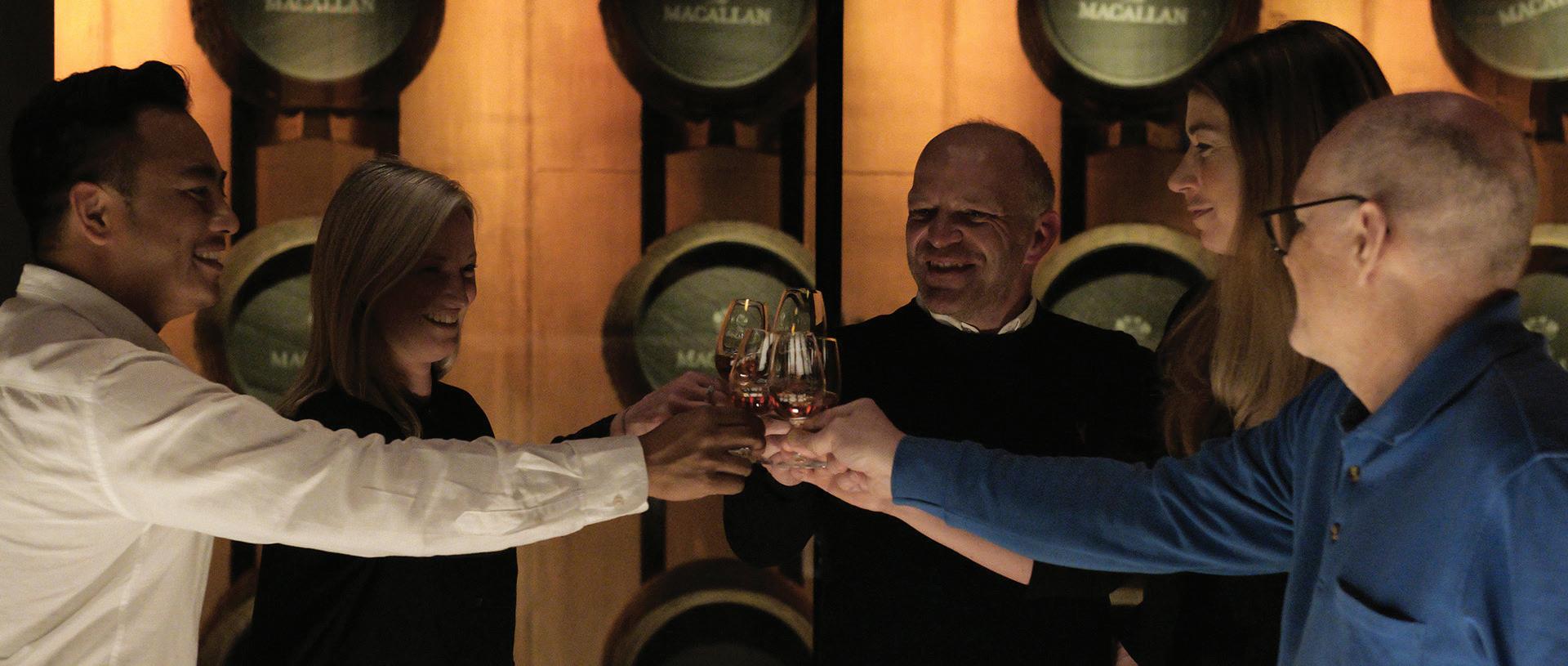
After a game of golf, successful or otherwise, there are fewer better ways to celebrate than with a cool glass of an Edrington Macallan in hand
There are few things you would want to be doing after a long round of golf, walking up and down the greens - no matter how far a cart could take you - and hitting your best drives. But sitting back to relax and recuperate after a full 18 holes on a hot and humid day with a sparkling glass of whisky in hand may just be at the top of that list.
Now picture yourself and your companions looking out over the course you have just conquered. In celebration, you lift the cool glass to your lips, taking your first sip of one of the world’s leading single malt whiskies, an Edrington Macallan, and just about nothing can compare to the bliss. The tension in your weary body loosens and your aching muscles settle back in gratitude.
With a history as rich as its own, each sip of any of The Macallan’s many varieties will tell a story of oak and spirit you are sure to taste
when a glass of the burnished gold is all you could ask for. Certainly, after a enjoyable round with friends, walking the greens and playing on a course in the incomparable great outdoors, it seems only best to send yourselves off with a glass or two.
And there are few better choices than a single malt from The Macallan’s new TIME : SPACE collection –created through expert craftsmanship to highlight a deep connection to nature.
The first of two new whiskies featured in their collection is the dual-chamber vessel TIME : SPACE that bottles both a 1940 vintage, matured for a treasured 84 years, as well as a second single malt from their newest 2018 distillery. With over eight decades to its charm, indulging in a glass of this rich Scotch whisky, its long-lasting finishing notes of dark chocolate and toasted oak, would certainly befit the rarity of a hole-in-
one. Perhaps it’s your first ace, or it’s another to add to your list, but you won’t go wrong with a whisky just as rare and worth the praise.
If then, on another occasion, you didn’t quite make that ace or didn’t play your best game, reach for The Macallan’s second new featured whisky instead, the TIME : SPACE Mastery. This is yet another top choice and unquestionably one to boost morale. It’s never wise to end your bad days of playing poorly. So, if you feel you haven’t quite been hitting the sweet spot and felt like the hours were dragging, pour yourself a glass of The Macallan’s rich cherryhued Mastery whisky – perhaps a generous one. Bottled from a variety of cask styles, and with complex layers and a great depth of aromatic flavors as a result, this single malt’s unique character will set your mood right and bring you right on back to the course next weekend. ■

Mastering your golf swing is a never ending journey to perfection. The constant desire to improve always remains
By Lee Pace
Iwas 13 years old when first introduced to any kind of golf instruction—formal or otherwise. Golf Digest arrived in early 1970 with a close-up of a golfer’s left wrist at the top of the backswing, the pen-and-ink illustration floating on a bright red background. The copy underneath the visual heralded the “simple, foolproof, hit-it-straighterand-longer, certain-to-improveyour-game Square-to-Square swing introduced inside.”
Suffice it to say that this newfangled technique pioneered by Dick Aultman and Jim Flick crashed and burned amid the Wilson Staff irons and whiffle balls of my back yard, but the process ignited a lifelong quest to hit better, flusher, straighter, and longer shots.
Over four decades, I have taken numerous lessons from a variety of talented instructors. My social media algorithms send a constant flow of posts with tips and tricks and the latest and greatest clubs. I watch instructors on YouTube wax about takeaway and posture and rotating through the ball. I have signed up for online swing training courses promising 20 yards of additional ball flight.
Sometimes it all works and folds into nirvana, like the day in August
when I was playing in a two-man team event at my home club, my partner dropped out because of illness after four holes, and I shot three-over on my own ball to stake our team to third place with another round to go. On others it all turns to muck and sludge and you’re hitting a wedge shot thin on one hole and laying sod the next and you’re too embarrassed to speak your score out loud to the assistant pro at the counter for handicap posting.
That’s part of the appeal of the game beyond the competition, the beauty of the venue, the camaraderie with the guys. It’s the insatiable drive to get better. You cannot master the game. But you can always find a firmer handle on it than the one you had last month and battle the tendencies established many moons ago.
Twenty years ago, I got a 10-minute flash lesson with noted instructor David Leadbetter at a media event in Texas; he told me I was too scrunched at the top of my backswing, and I needed to work on getting more extension. Funny, my pro told me the same thing just Sunday afternoon. Well, that’s maybe not so funny if you think about it.
The quest never ends. During the
Covid pandemic in 2020, my gym shuttered its doors, and I set up a modest exercise room in my house. I hung some mirror squares on one wall so that I could swing the golf club and monitor my tendencies to move off the ball at takeaway and lift out of my posture. I also hung a half dozen vintage railroad posters touting golf destinations in the British Isles, France, and Switzerland so that I could dream of sexy golf adventure trips while doing bird-dogs on the mat.
I recently decided to combine my workout room and my home office into one studio. Now half the room is my desk and bookcases, the other a half dozen kettlebells, a bench and a handful of golf training aids. I have a putting carpet, a wall-mounted band for rotational exercises and a couple of gadgets to promote getting more compression at impact.
Now I can pop up from my computer screen at any moment for a quick golf fix. I am grizzled and wise enough now to accept there is no destination with the golf swing. But what a journey. And that’s what matters the most. ■
Lee Pace has written and published more than two dozen club histories over three decades from his home in Chapel Hill, N.C.

www.aieagolf.com @aieagolf hello@aieagolf.com




